

We understand that purchasing new production equipment is a big step for anyone and getting up and running as quickly as possible is incredibly important. Our installation service means that your machinery will be correctly set-up to enable you to get the most from it.














































































































T: +44 (0)1327 342589 E: SALES@core-equip.com GET IN TOUCH core-equip.com
Installations, training, service and maintenance
The UK’s leading Winery Equipment supplier FOR…
VI N E YAR D
www.vineyardmagazine.co.uk
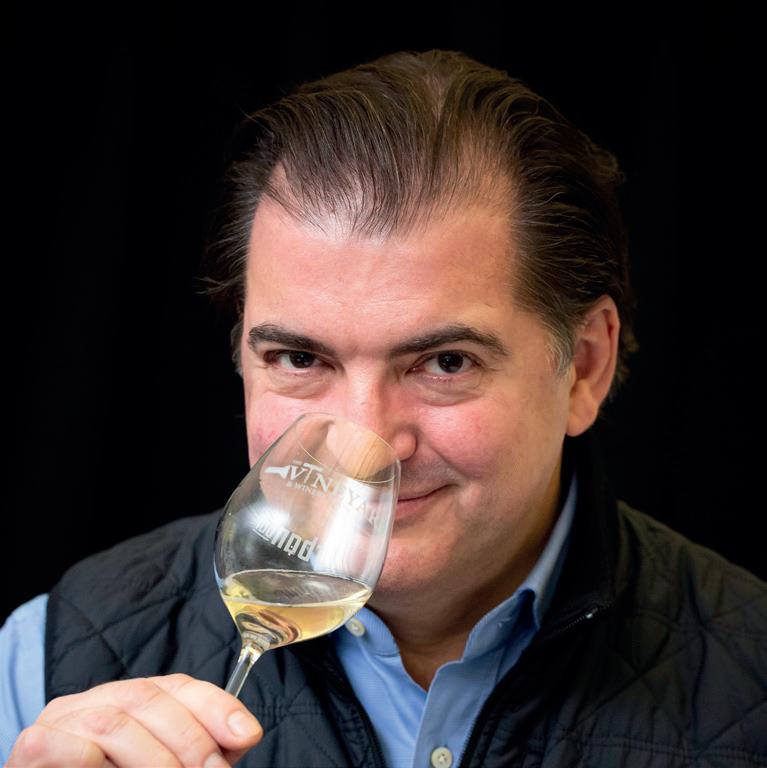
VINEYARD
Kelsey Media, The Granary, Downs Court
Yalding Hill, Yalding, Maidstone, Kent, ME18 6AL 01959 541444
EDITORIAL
Editor: Rebecca Farmer vineyard.ed@kelsey.co.uk

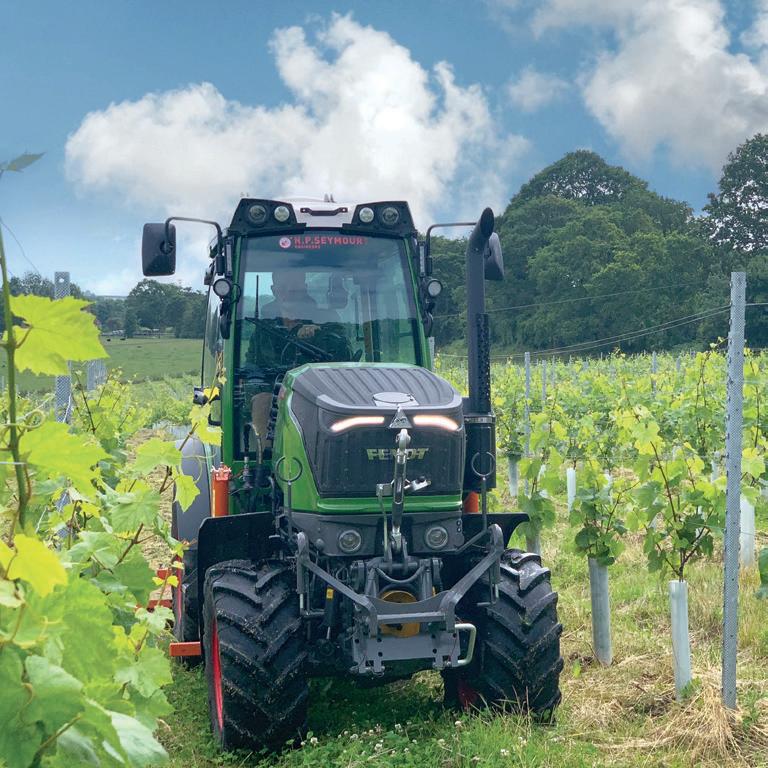
GRAPHIC DESIGN
Jo Legg
Flair Creative Design jo.legg@flair-design.co.uk
ADVERTISING & MARKETING
Jamie McGrorty 01303 233883 jamie.mcgrorty@kelsey.co.uk
PHOTOGRAPHER
Martin Apps www.countrywidephotographic.co.uk
MANAGEMENT
DIVISIONAL MANAGING DIRECTOR: Steve Kendall
PUBLISHER: Jamie McGrorty
RETAIL DIRECTOR: Steve Brown
SUBSCRIPTION MARKETING MANAGER:
Claire Aspinall
PRINT PRODUCTION MANAGER: Kelly Orriss
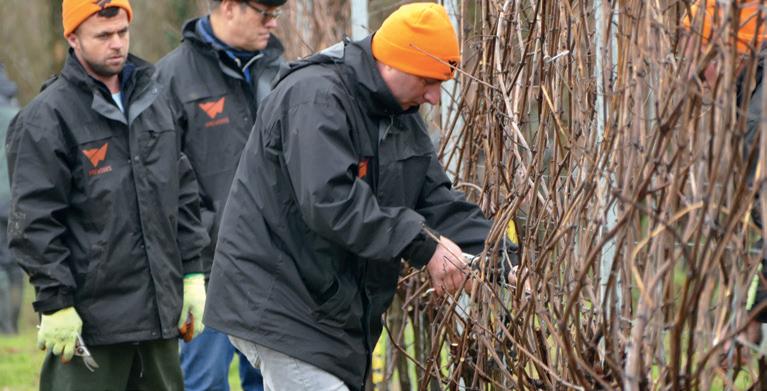
DISTRIBUTION
Distribution in Great Britain: Seymour Distribution Limited
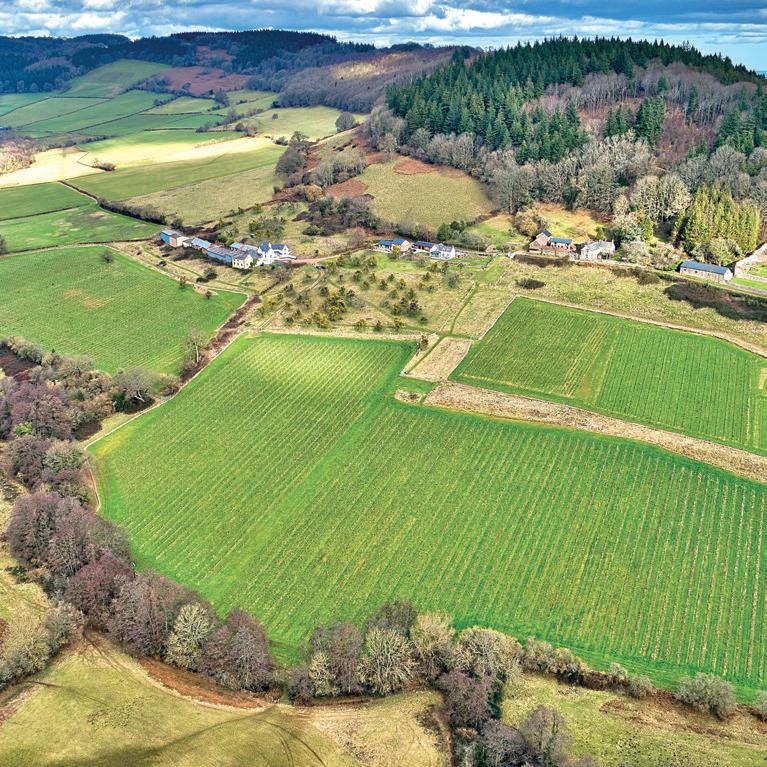
2 East Poultry Avenue, London EC1A 9PT Tel: 020 7429 4000 www.seymour.co.uk
Distribution in Northern Ireland and the Republic of Ireland:
Newspread
Tel: +353 23 886 3850
Kelsey Media 2023 © all rights reserved. Kelsey Media is a trading name of Kelsey Publishing Ltd. Reproduction in whole or in part is forbidden except with permission in writing from the publishers. Note to contributors: articles submitted for consideration by the editor must be the original work of the author and not previously published. Where photographs are included, which are not the property of the contributor, permission to reproduce them must have been obtained from the owner of the copyright. The editor cannot guarantee a personal response to all letters and emails received. The views expressed in the magazine are not necessarily those of the Editor or the Publisher. Kelsey Publishing Ltd accepts no liability for products and services offered by third parties.
Kelsey Media takes your personal data very seriously. For more information of our privacy policy, please visit Kelsey Media takes your personal data very seriously. For more information of our privacy policy, please visit https://www.kelsey.co.uk/privacy-policy/ . If at any point you have any queries regarding Kelsey’s data policy you can email our Data Protection Officer at dpo@kelsey.co.uk.
globe-asia vineyard.ed@kelsey.co.uk twitter @VineyardMagGB facebook VineyardMagGB NEWS 8 Black Chalk secures distribution in US for first time 10 Knight Frank bolsters specialist viticulture team 19 Newton Court Farm has much to offer REGULARS 26 Matthew Jukes When you least expect it 34 The agronomy diary Sustainable strategies for keeping crops clean. 36 A viticulturist's diary Some people hear 'fungal resistant' and think that means all they need to do is plant the vine, prune it and then collect the fruit at harvest. 43 The vine post The life below ground. 49 Express your terroir My flexible work model. 51 Express your terroir Equipment hygiene in the winery. 52 Representing you Simon Thorpe MW steps down. 59 Machinery Weed control without chemicals. FEATURES 20 In competition... The annual WineGB Pruning Competition is a great opportunity for viticulturists from the UK to get together to celebrate the art of pruning. 54 Machinery May-tainance As vineyards prepare for the growing season, it's important to check that all machinery is properly maintained for maximum efficiency and effectiveness. Front cover image: Plumpton College iti t i ts in G t B t in
www.kelsey.co.uk
CONTENTS
Features
Vineyards of Hampshire Trade Tasting
14
The exquisite venue was buzzing with invited guests from the world of wine.
A fine education
28
A behind the scenes look at life as a student at Plumpton College. Providing, as it were, a glance through the window at the many opportunities on offer.
38
Good things in small packages
Micronutrients are vital to producing healthy vines and high-quality wine.
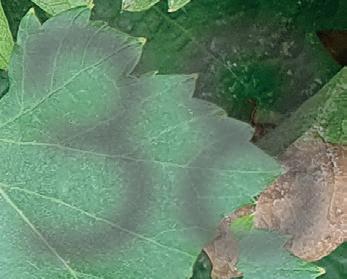
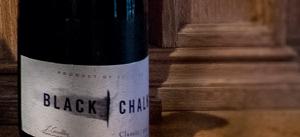
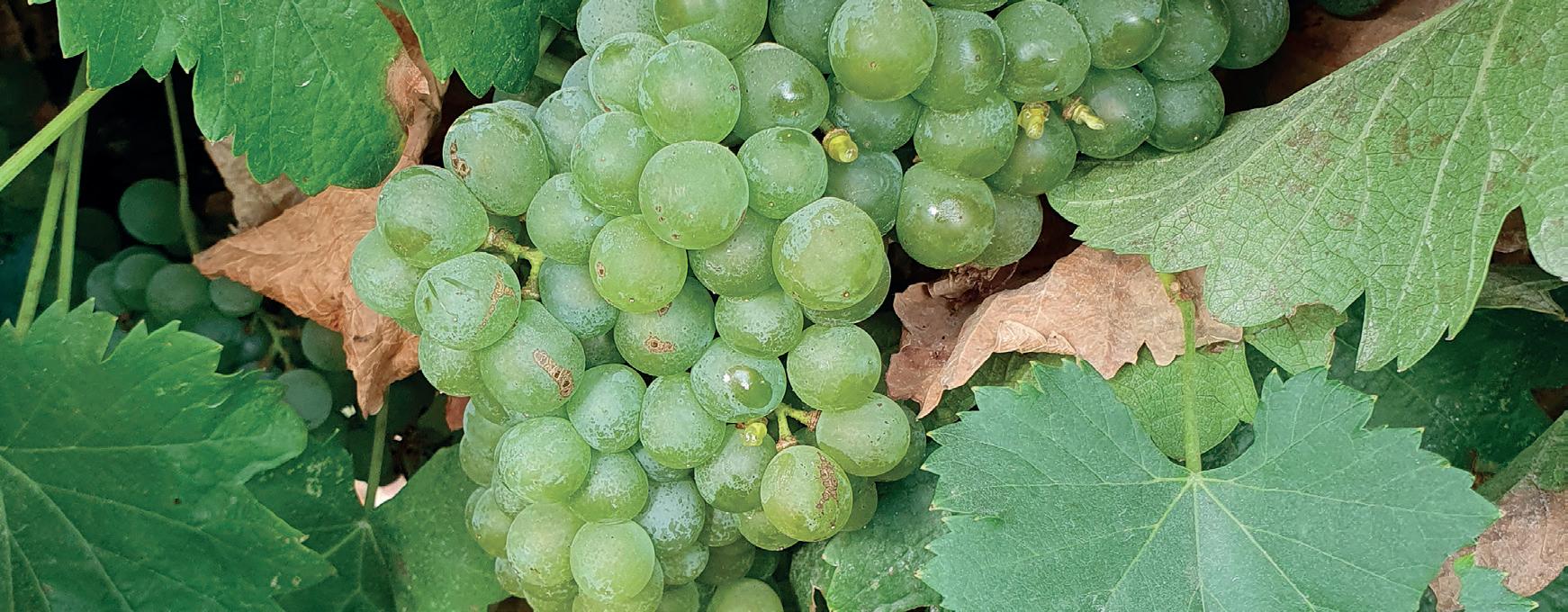
44


From strength to strength
Vitikit specialises in supplying equipment for making wine, cider, beer and spirits, together with sophisticated control equipment designed to improve results.


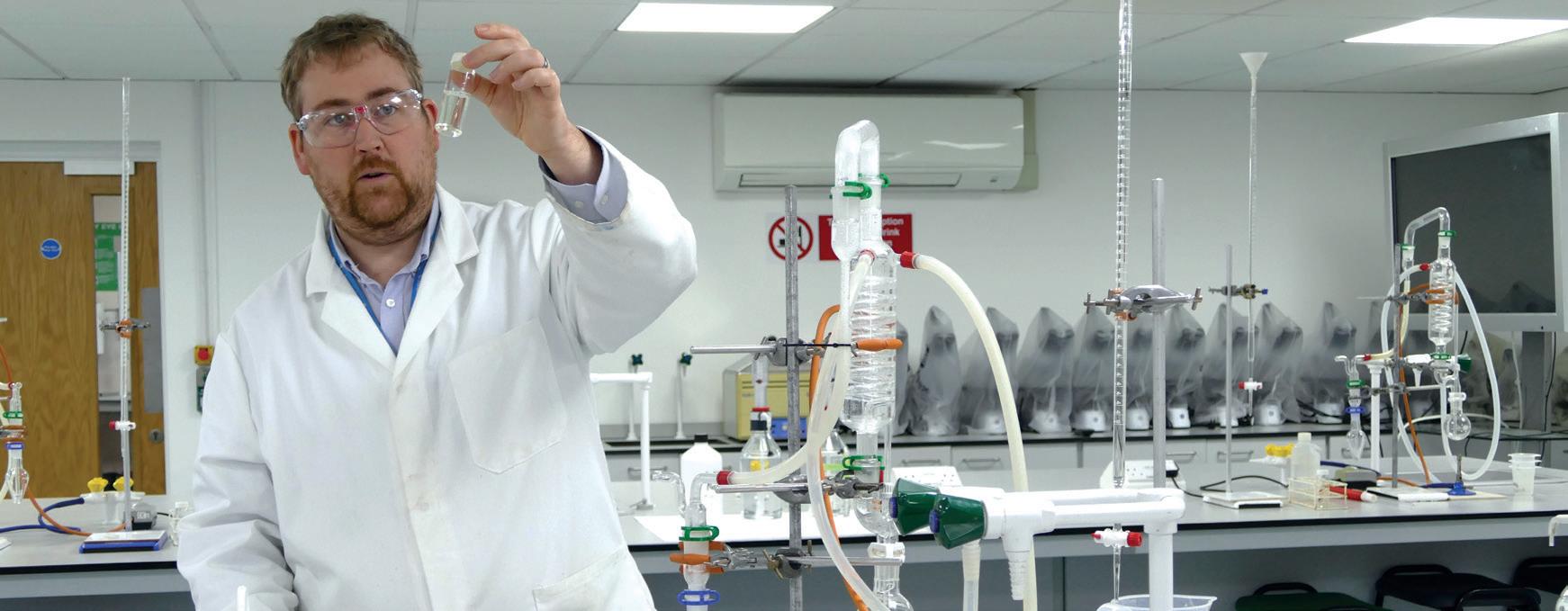

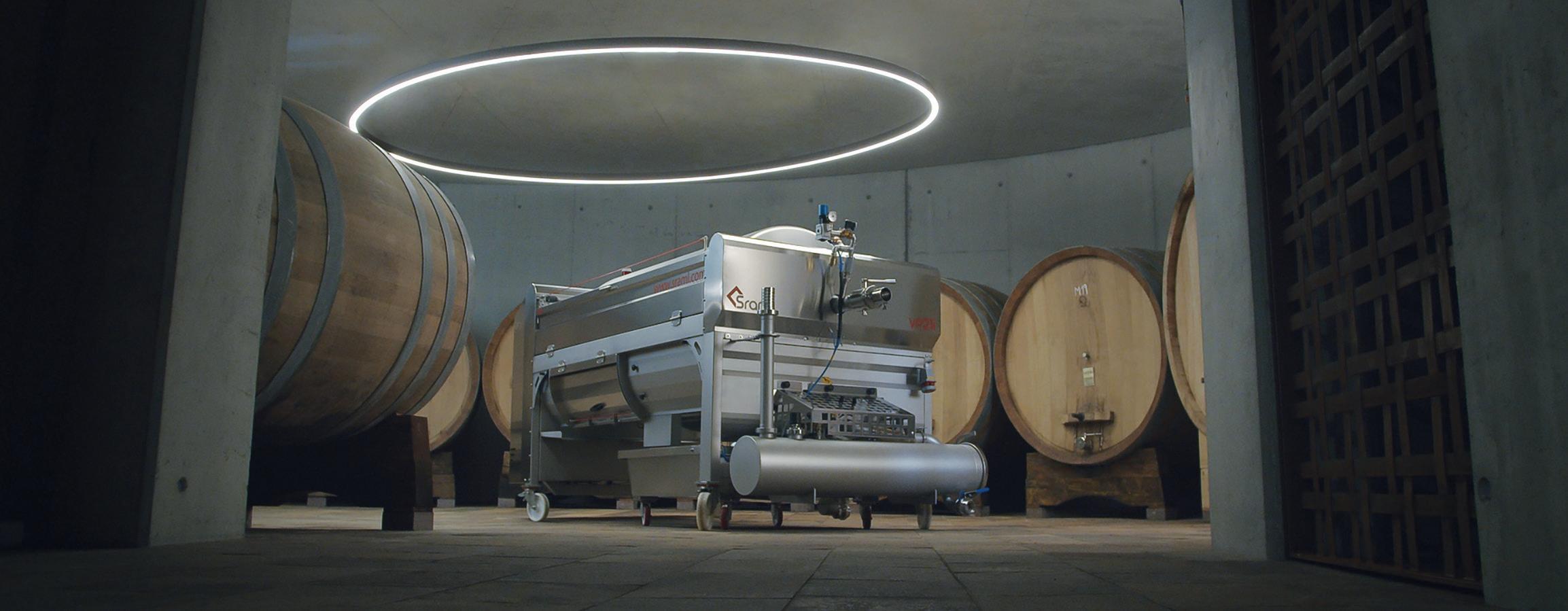
The leading Vineyard specialists
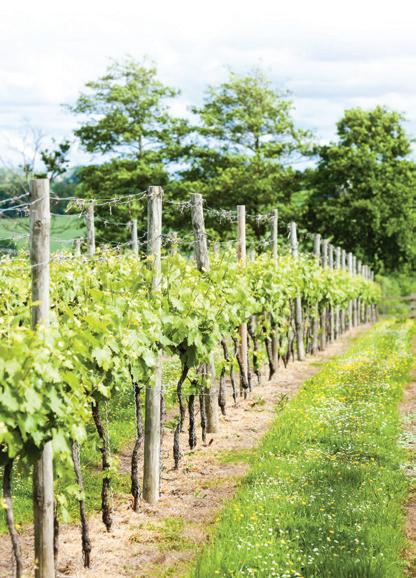
Offering specialist Viticultural agronomy advice nationwide
Backed by an unrivalled range of services
• Vineyard site selection
• Soil health strategy

• Omnia and TerraMap soil scanning
• Farm business consultancy
• Agrochemical input supply
• Biological and sundry products
• Environmental Stewardship advice
Every year those in the viticulture and winemaking industries strive to improve, learn and refine their techniques, skills and knowledge. This is such a fundamental element that its importance can be overlooked or at least underestimated.
On a visit to Plumpton College (page 28) it was clear that the idea of self-improvement and education is embraced not just by the students but even by the educators within this wonderful industry.
‘Cultivation of the mind’ is an ongoing process, not something that is ever complete and takes many forms. This was in evidence at the WineGB pruning competition (page 20) which highlighted how benchmarking your skills and learning from each other can be rewarding, beneficial and fun.
Talk
Your local depots:
HUTCHINSONS
Canterbury: (01227) 830064
PRODUCE PACKAGING
• Specialist packaging division H L Hutchinson Limited Weasenham Lane • Wisbech Cambridgeshire PE13 2RN
Tel: 01945 461177
e: information@hlhltd.co.uk
www.hlhltd.co.uk
Each year, cultivation in the vineyard leads to new vintages and in some cases new wine styles. These are currently being released and Vineyard magazine is always eager to hear from any vineyards about their new wines (page 50).
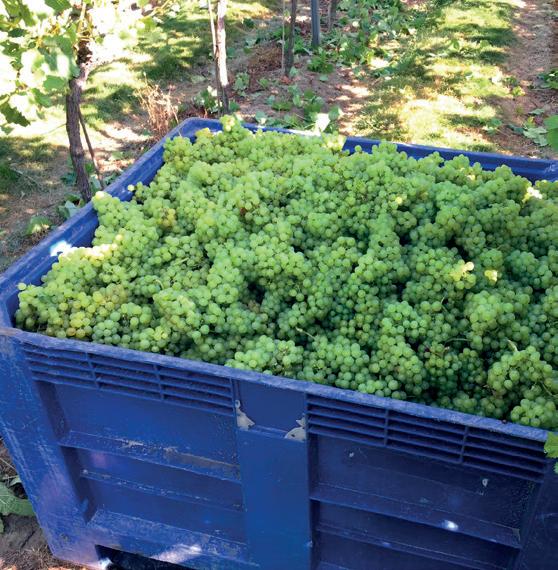

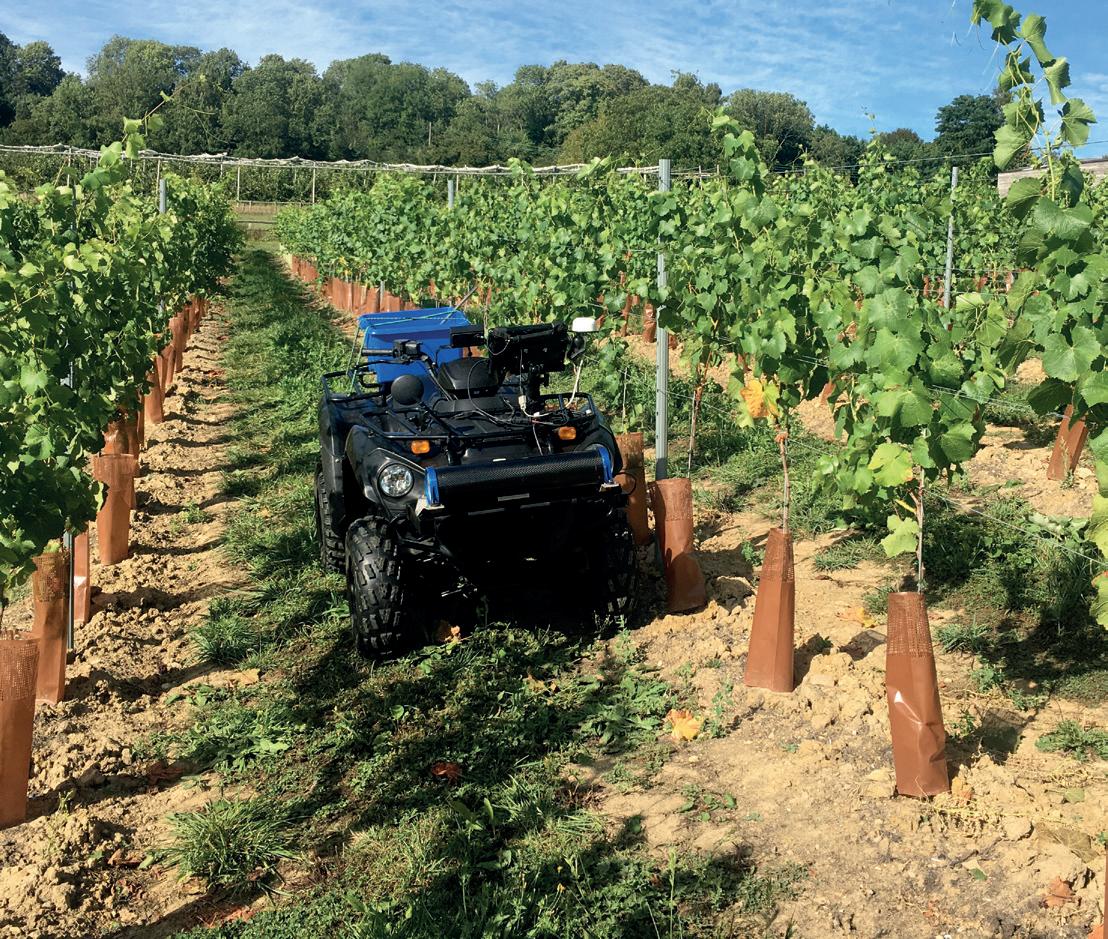
Ultimately the passionate journey of self-improvement has benefits that reach further into wider society than is evident at first glance. The ever increasing quality of wine being produced in England and Wales means it will be enjoyed, shared and form part of celebrations not only on our shores but in other countries as well (page 8). This thought is both humbling and inspiring reminding us of the centuries old English proverb “mighty oaks from acorns grow.”
21650HUT~advert_for_Vineyard_Magazine(93x270)no_flash.indd 1 11/04/2023 12:55 MAY 2023 | VINEYARD
6 Send your thoughts and comments by email to vineyard.ed@kelsey.co.uk
From the editor Reb
“Cultivation to the mind is as necessary as food to the body,” said Marcus Tullius Cicero (106 BC – 46BC).
www.producepackaging.co.uk to us and see the difference for yourself!
Marden: (01622) 831423


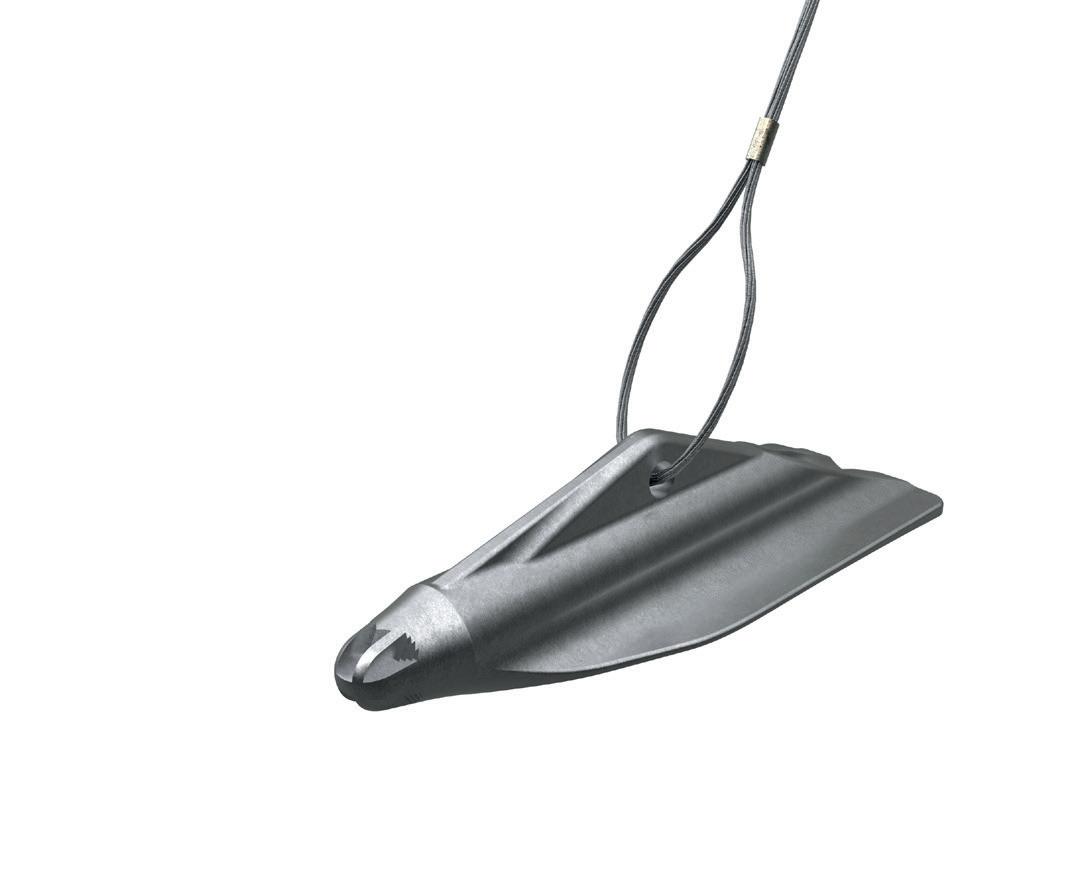
ONE VINE AT A TIME VINEWORKS HAS BEEN SUPPORTING UK VINEYARDS SINCE 2006 FOR MORE INFORMATION CONTACT: 01273 891777 VINE-WORKS.COM SALES@VINE-WORKS.COM VineWorks has been supporting UK vineyards since 2006 Specialising in: • Vineyard Establishment • Vineyard Services • Vineyard Shop • Fruit Brokering For MORE INFORMATION CONTACT: 01273 891777 vine-works.com sales@vine-works.com ONE VINE AT A TIME OUR RETAIL DEPARTMENT SPECIALISES IN: • Hadley UltraSteel HDG trellising posts • Gripple full range of accessories • Bekaert high tensile vineyard wire • & much more
Black Chalk secures distribution in US for first time
Five years on from its launch, Hampshirebased wine estate Black Chalk, has announced another significant milestone in its expansion. From April, Black Chalk will be distributed in the US market for the first time, via Sera Wine Imports. The focus will initially be on the two sparkling wines: Classic and Wild Rose. The new 2020 vintages will have an RRSP of $54.99 and $64.99 respectively, and be available to the on-premise and independent retail sectors.
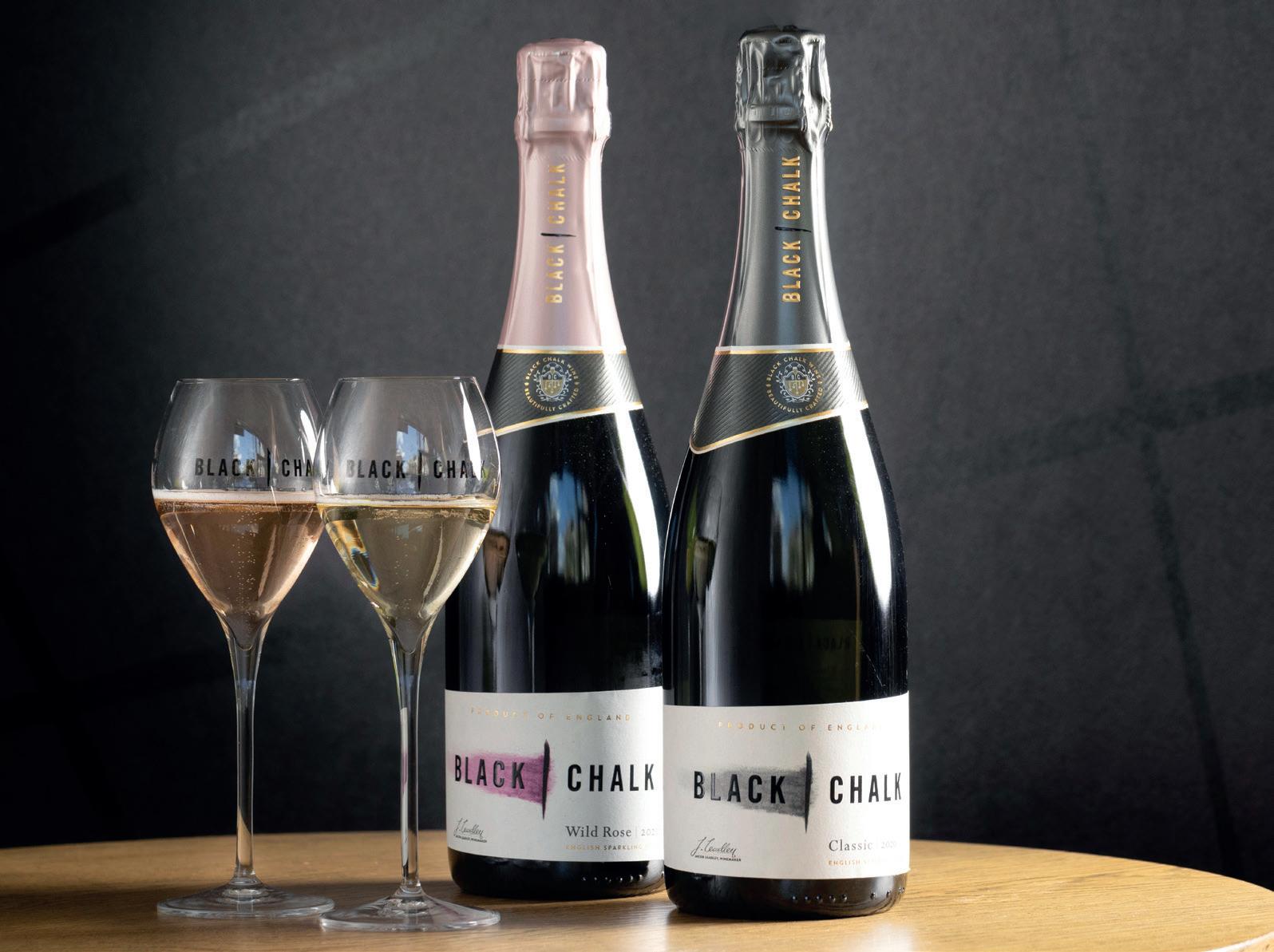
Black Chalk will be available to East Coast States initially, with New York the key focus for the first stage of the launch. Black Chalk started exporting to Japan – its largest market after the UK – in 2020 and Scandinavia in 2021.
Jacob Leadley, CEO and winemaker, said: “Getting the first bottles of Black Chalk onto US soil is going to be a really special moment for us. It’s a goal we have had since the outset, but until now we have been in the enviable position of demand outstripping supply in the UK and established export markets. With the 2020 vintage, our first sparkling wines to be estate status, we have been able to increase volume which has allowed us to explore new territories. We are delighted to be partnering with Sera Wine
Imports which has an excellent track record championing premium, boutique brands, including Bila-Haut by Chapoutier.”
Daley Brennan, Sales Director at Sera Wine Imports said of the new addition to the portfolio: “All the team at Sera Wine Imports are thrilled to be working alongside
Strengthening sales team
NP Seymour, the UK's leading fruit and vine machinery specialists, is pleased to announce the appointment of Ash Baldry as their new Sales Representative.

Ash, who has previously worked for a Land Rover main dealer and spent several years in tractor and machinery sales across a wide range of farming industries, will now be focusing on the horticultural and viticultural sectors in his new role.
Already experienced in working with Fendt, which he believes is the best tractor option for fruit and vine growers, Ash will also be providing growers across the UK with advice and machinery options from the world’s best manufacturers such as Aweta, Berthoud, BMV, Braun, Clemens, ERO, Felco, Fischer, OCLL, Pellenc and Perfect van Wamel.
Excited to have joined the family-run business, Ash is already busy with enquiries and is looking forward to getting out on the farm to meet growers.
"I am thrilled to have joined the NP Seymour team as their new Sales Representative," said Ash Baldry. "As someone who has worked in tractor and machinery sales across various farming industries, I believe that NP Seymour is truly the best in the business when it comes to fruit and vine machinery. I am excited to now focus on the horticultural and viticultural sectors and to be working with such a knowledgeable and experienced team in these industries."
Claire Seymour, Sales Director at NP Seymour, commented that Ash's new appointment will further strengthen the sales team at NP Seymour.
Black Chalk and look forward to introducing American consumers to an incredibly highquality winery from what is such a dynamic emerging category. We can’t wait to share these wines with our trade customers and toast to the beginning of what we believe will be a long and fruitful partnership.”
"Since my Dad, Nick Seymour, started this business in 1974, NP Seymour has been a leading force in the UK fruit and vine industries. Many dealerships have expanded into these sectors, but we are true specialists and our decades of experience mean we understand growers' needs like no one else. With Ash's experience and passion, we are confident that he will help us continue to provide the best service and equipment to our customers."
8
MAY 2023 | VINEYARD NEWS
Get
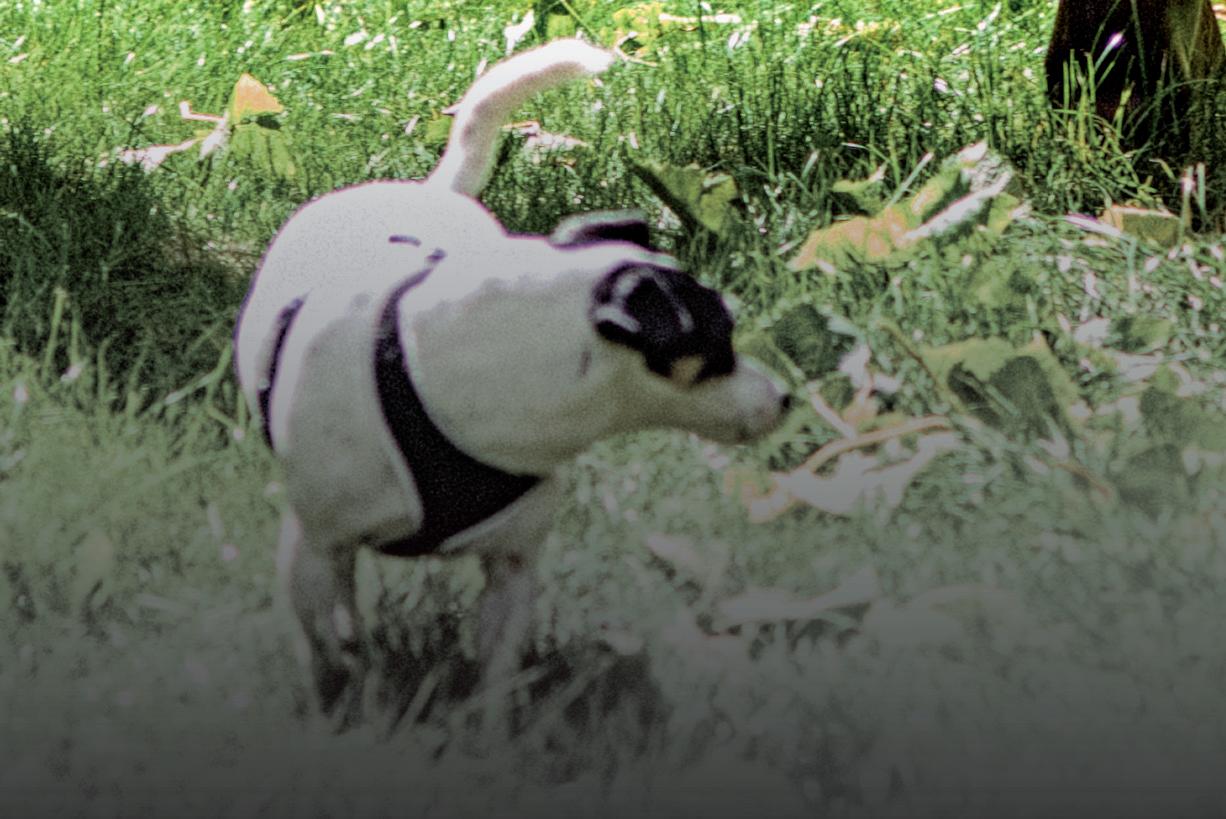

Certis Belchim has everything you need to achieve a premium product, every time. You’ll keep key diseases, particularly downy mildew, powdery mildew and Botrytis, firmly under control with our biorational and conventional fungicides. There are plenty of other solutions to help across the vineyard, too.


And, as you’ll see from our expert guide, we’ve the skills to secure your crop throughout the season, including guidance on effective IPM. Grab your vine-growers’ guide at www.certisbelchim.co.uk/viticulture

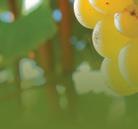


closer to a great vintage with Certis Belchim.
CUPROKYLT® FRUTOGARD® AMYLO-X® COSINE® KARMA® Use plant protection products safely. Always read the label and product information before use. For further information with regard to the warning phrases and symbols refer to the product label. Cuprokylt® contains copper oxychloride and is a registered trademark of Industrias Quimicas Del Valles, S.A. Frutogard® contains potassium phosphonate and 370 g/l algae extract (Ascophyllum nodosum) and is a registered trademark of Certis Europe BV. Amylo-X® WG (EAMU 2018/0469 – wine grapes) contains Bacillus amyloliquefaciens and is a registered trademark of Mitsui AgriScience International S.A./N.V. Cosine® (EAMU 2017/0846 – outdoor wine grapes) contains cyflufenamid and is a registered trademark of Nippon Soda Co. Ltd., Japan. Karma® (EAMU 2016/1327 – outdoor table & wine grapes) contains potassium hydrogen carbonate and is a registered trademark of Certis Europe BV. Contact Certis Belchim on 0845 373 0305, e-mail infoUK@certisbelchim.com or visit www.certisbelchim.co.uk. © Certis Belchim 2023 Successful vine-growing Your guide to tackling diseases and pests
Knight Frank bolsters specialist viticulture team
James Osborn, a leading figure in the English wine industry, has joined Knight Frank’s Viticulture team as a Partner. The arrival of James at the firm marks the latest high profile new hire into the global property consultancy’s rural division, which over the last three years has been on a major expansion drive.

James Osborn’s background is in branding and integrated agencies, having headed up the UK and European arm of Hakuhodo Inc, the eighth largest communications and innovation network in the world. At Hakuhodo he worked with brands including E&J Gallo, Asahi Beer, Youngs Pubs, Cunard and Adidas.
Prior to joining Knight Frank, James was Managing Director at Squerryes Wine Estate, a family owned 2,500 acre working English estate on the North Downs. Since 2017, he was responsible for the estate’s growth plans through the creation of a strong performing wine, hospitality and retail business. In his seven years with Squerryes, James turned the business from a boutique family run winery into an award-winning premium UK wine brand and destination – delivering a distinct brand, onsite food and drink offerings and built a 2,600 person strong membership programme.
In 2018, during his time at Squerryes, James helped to create and lead the Wine Garden of England, a group of eight wineries which exists to position Kent as the number one wine tourism destination in the UK.
At Knight Frank, James Osborn will work with Ed Mansel Lewis, the firm’s Head of Viticulture, to offer its clients a holistic consultancy offering. His focus will be on helping wine
producers with “profitable placemaking”; this includes advising on how to drive higher margin wine businesses, defining a brand, maximising the potential of owned retail and creating a hospitality-led destination with a strong community at its heart.
James Osborn, partner, Knight Frank Viticulture, said: “I am delighted to have joined Ed and the Knight Frank team to help further develop its market leading consultancy services. I look forward to working with the firm’s clients, and new entrants, on growing their margin and P&L through visitor destinations and the customer facing components of their wineries. Implementing my learnings and experience gained at Squerryes, to deliver strong consultancy advice across a wide range of other English wine brands, is an exciting prospect.”
Knight Frank’s Viticulture strategy is to help English wine estates and producers create a more sustainable commercial platform for future growth. The firm’s offering focuses on three core pillars: market leading property solutions, talked about brands and outstanding visitor destinations.
Ed Mansel Lewis, Head of Viticulture at Knight Frank, said: “I am delighted that James is joining us. I respect and admire his understanding of how to optimise the direct to consumer model within wine businesses. The significant cost that comes with producing sparkling wine means that businesses must have a strategy to increase bottle sales through the cellar door at a full retail margin, and James helps businesses achieve this in a way that’s thoughtful and very hard to imitate.”
Ten Poems about Wine
Poems dedicated to the subject of wine are being published as a pamphlet by Candlestick Press. The pamphlet will include poems by Li Bai, Jane Commane, Wendy Cope, Jonathan Davidson, John Keats, Gregory Leadbetter, Miriam Wei Wei Lo, Matthew Stewart, Emma Storr and James Thomson. The cover illustration is by Jane Walker. The poems are selected and introduced by poet, reviewer and writing mentor Jonathan Davidson.
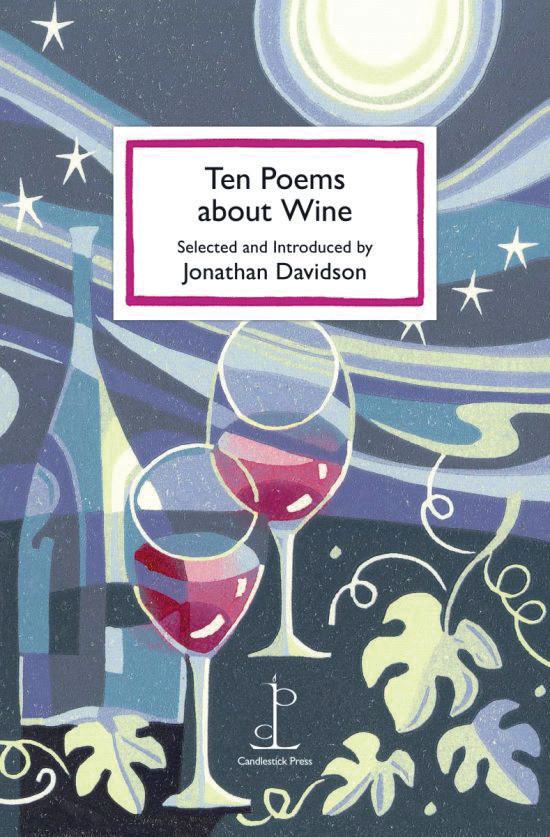
Jonathan favours an enigmatic red of a winter evening, but seeks out a crisp, giddy white when the sun shines – as it often does in the English Midlands.
Priced £5.95 (to include a new eco-envelope) the poetry pamphlet will serve as a wonderful alternative to a greetings card.
For more information visit: www.candlestickpress.co.uk
10
James Osborn
MAY 2023 | VINEYARD NEWS
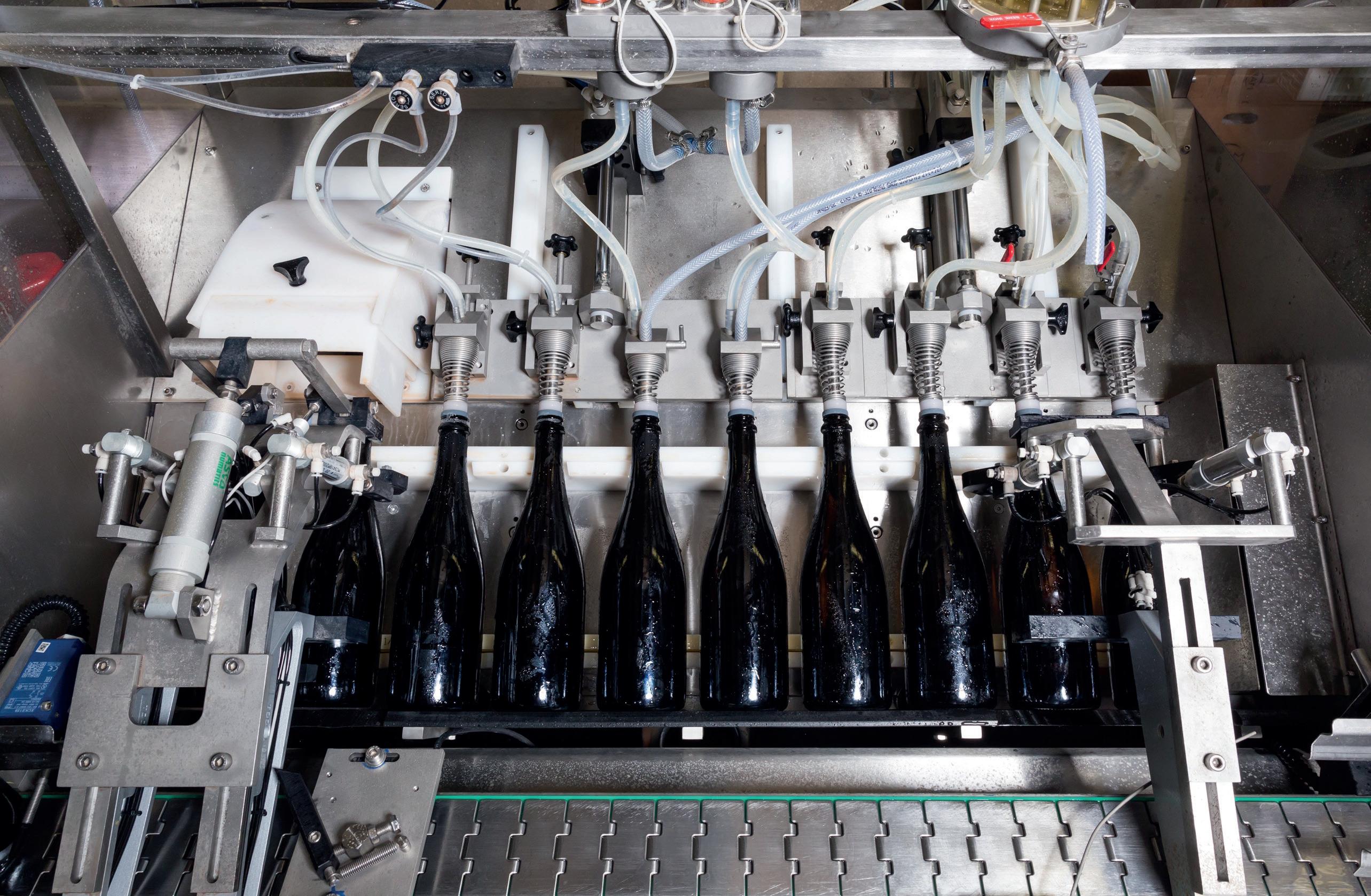
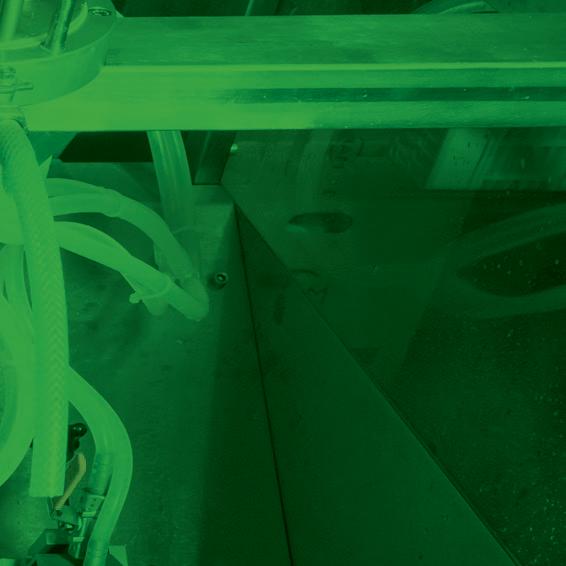
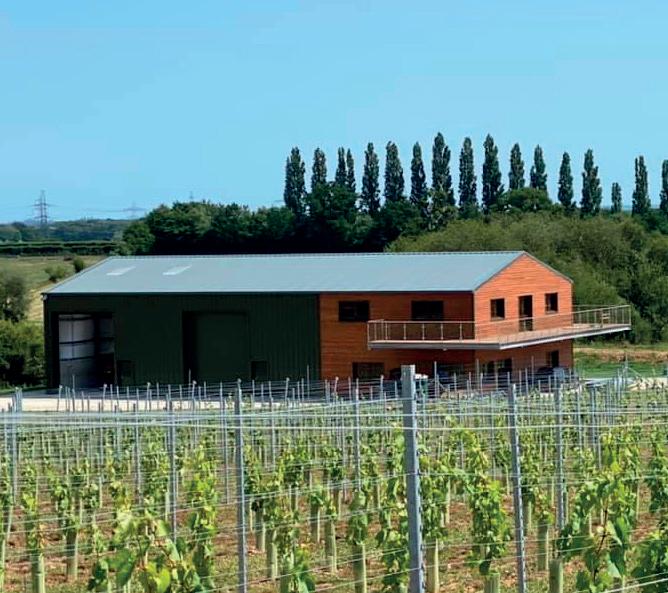
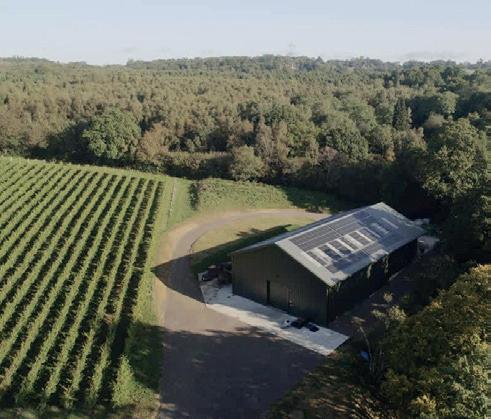

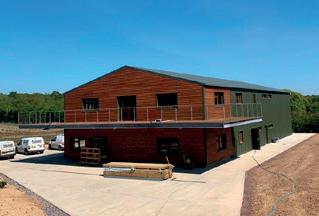



11 availabledisgorgingContract now Lab services • Pressing • Filtering • Bottling • Riddling • Disgorging • Labelling • Storing www.definedwine.com ⌂ Outside Canterbury, CT4 5HL henry@definedwine.com CONTRACT WINEMAKING SERVICES No vineyards or brands, just contract services for others To discuss your project in more detail email enquiries@kenward.co.uk or call 01403 210218 www.kenward.co.uk Kenward Construction based in Horsham, West Sussex offer a full design and build service for your next steel framed building including composite cladding, concrete panels, roller shutter doors and bespoke designs to meet individual planning conditions. Kenward Construction also offer a wide range of services offering a truly one stop shop for your next building project. Demolition, plant hire, access roads, drainage, sewage treatment plants, rainwater harvesting, paving, concrete floors/ slabs, walling and site landscaping. VITICULTURAL & WINEMAKING CONSULTANT - SIMON DAY. • 30+ years of experience in UK viticulture and winemaking, • Full site assessments and variety / rootstock and trellis advice pre-planting. • Vineyard management advice and mentoring. • Winery design and ongoing winemaking advice. • Business planning & legislation, HMRC, WSB, etc. • On an Ad-hoc, project, or annual retainer basis. Contact: e: sday@kingsthorne.co.uk t: 07796 141390 w: www.kingsthorne.co.uk MAY 2023 | VINEYARD
Sotheby’s worldwide chairman of wine and spirits to join Blockbar
Jamie Ritchie, one of the most respected authorities in the wine and spirits industry, is to join BlockBar, the startup company that has modernised the wine and spirits marketplace by democratising access and eliminating the possibility of counterfeiting.
BlockBar has created a new, fully authenticated, marketplace that benefits consumers, collectors, investors, wineries and distilleries alike. Mr Ritchie, who has been with Sotheby’s for 32 years, is joining the team in July.
Founded by cousins Dov and Sam Falic, BlockBar sells wine and spirits authenticated through the blockchain and offers its buyers storage, insurance, global shipping, and access to a thriving secondary marketplace.
BlockBar sources exclusive wine and spirits directly from luxury brand owners, including Moët Hennessy, Diageo, Rémy Cointreau, Bacardi, Treasury Wine Estates, Pernod Ricard and William Grant & Sons, to ensure that each bottle purchased is 100% authentic. Every physical bottle sold on BlockBar.com comes with a digital version that guarantees authenticity and can be traced all the way back to the winery or distillery. Purchasers of the digital version may resell, gift or redeem for the physical bottle at any time. The physical bottles are stored in a state-of-the-art facility in Singapore and can be shipped door-to-door anywhere in the world or made available for pickup at 250+ duty free retail locations. ‘Money can’t buy experiences’ are also included with many bottle offerings.
With a reputation for innovation, strategic planning, client service, relationships and operational excellence, Mr. Ritchie brings a wealth of experience and expertise to BlockBar. He joined Sotheby’s in London in 1990 and was responsible for opening Sotheby’s wine auctions in New York, Hong Kong and France, as well as Sotheby’s spirits category. Under his leadership, Sotheby’s wine and spirits auction revenues rose to $132 million. As one of the world’s leading auctioneers, Mr. Ritchie presided over several record-breaking auctions, and he holds the records for selling the most expensive bottles of both wine and spirits.
Dov Falic, Co-Founder and CEO of BlockBar, said: “Jamie Ritchie is recognised worldwide as a leader in the wine and spirits industry, and we are delighted and honored that he is joining our team. The fact that he has chosen to join an innovative startup like BlockBar is a testament to our business model and will help us to play a leading role in the evolution of the distribution of wine and spirits worldwide. More people than ever are purchasing liquid assets, both for consuming with friends and for investment, and BlockBar simplifies the purchase process. Based on the tremendous response to the unique bottles offered on our platform during our first year of operations, we are very confident about BlockBar’s rapid growth and we project significant revenue multiples over the next few years.”
Balfour Winery appoints new board
Balfour Winery, one of the UK’s most innovative and fastest-growing producers of English wine, has appointed Adam Williams as Chief Operations Officer and Jack Merrylees, previously from Majestic Wine, as its new Marketing & PR Director – as the company prepares for its next chapter after a period of strong growth.
Adam Williams and Jack Merrylees form part of a new board, which also includes Fergus Elias, Head Winemaker, and Sarah Easton, Commercial Director.
Balfour also revealed plans to double production to one million bottles per annum at its beautiful 400-acre Hush Heath Estate in Kent, supported by long term grower contracts in Kent and Essex. The 20 year old winery, also operates a network of ten bars and pubs with boutique hotel rooms across the South East, London and the Cotswolds, alongside a beer and cider arm – Jake’s Drinks.
As one of the most visited vineyards in England, Balfour believes wine tourism will become an even greater focus in the months to come, as more and more Brits look to staycations and connect with homegrown producers. A recent VisitBritain survey suggested 42% of inbound tourists would
enjoy a visit to a winery and Balfour will continue to capitalise on the trend with its full range of tours, tastings and events.
Jack Merrylees joins Balfour after an elevenyear spell at Majestic, where he initially joined as a graduate trainee in 2012. More recently he has held the position of Head of Content, Brand & PR; responsible for the company’s national brand, PR, e-marketing and events. He will have responsibility for driving growth and interest across the Balfour brands, as well as a key focus on increasing further visitor numbers to the winery which is situated just outside Staplehurst.
Adam Williams, who first joined Balfour in 2017 as Sales Director, has been promoted to Chief Operating Officer, and will continue to oversee the company’s sales strategy and growth.
Speaking about the move, Adam Williams said: “We’re proud to be one of the real pioneers of the English wine movement and have some fantastic and exciting ambitions for the next few years. Jack joins our new board to help make these plans a reality, working alongside the brilliant team we have here with Fergus and Sarah.
"We think there’s a huge opportunity for the
English wine Industry to really capture the hearts and imaginations of wine lovers across Britain; to help people to discover the incredible wine region that’s under an hour away from London. Bringing those connections and stories to life, helping to drive further interest in the category and making more delicious wines will be key to our continued growth.”
Balfour Co-founder, Leslie Balfour-Lynn added: “I am delighted to make today’s announcement as we prepare for our next, thrilling chapter at Balfour. When we established our first vines just over twenty years ago, our ambitions were to create wines that Richard and I loved, and I am proud that we now have a portfolio that rivals some of the best wines in the world. The reception and growth over the past 20 years has been superb as we go from strength to strength and with our new board in place it feels like we are still just getting started.
We have a lot in the pipeline, from new developments at the winery to some extremely exciting new wines soon to be released alongside the continued development of Jake’s Drinks and our pubs. I am pleased to have Adam and the team at the helm, to really help us capitalise on this momentum.”
12
MAY 2023 | VINEYARD NEWS

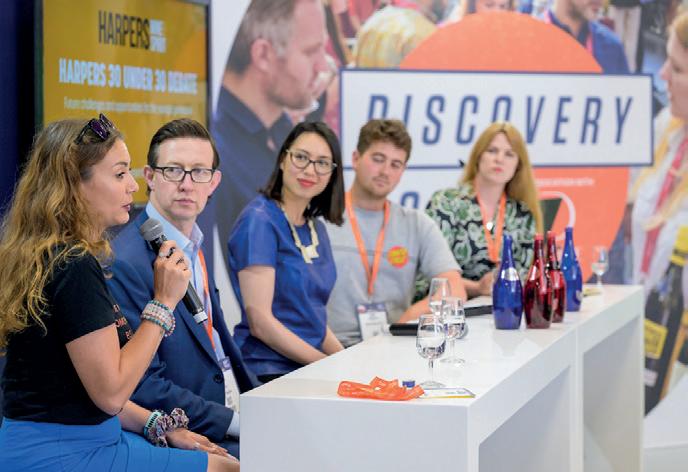
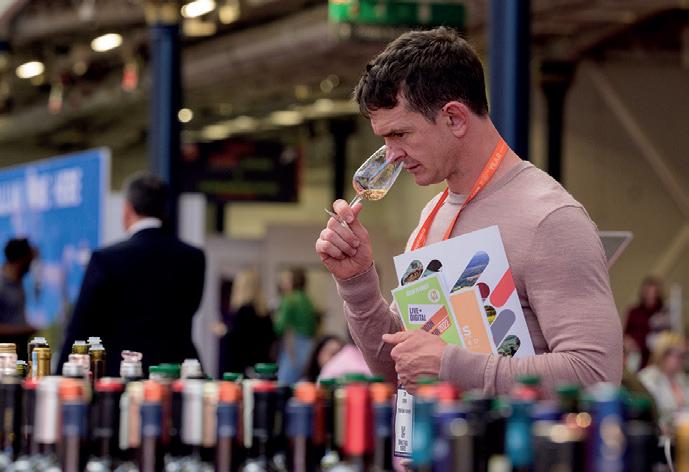
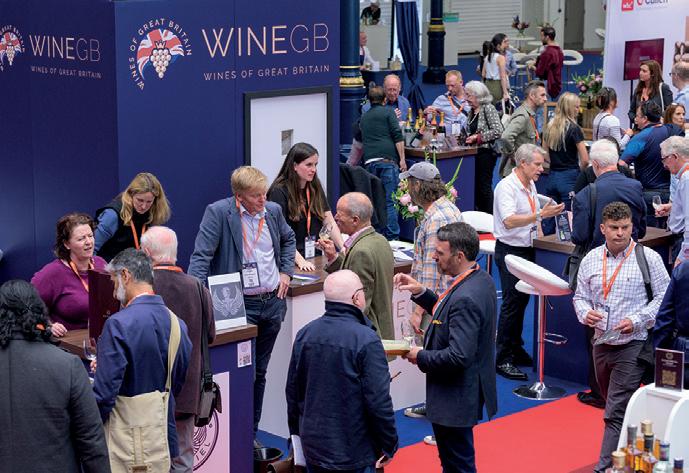
LONDONWINEFAIR.COM #LWF23 REGISTER TO ATTEND THE UK’S BIGGEST DRINKS TRADE
INTO DIGITAL EVENT
REGISTER:
EVENT REGISTRATION ALSO PROVIDES ENTRY
Vineyards of Hampshire Trade Tasting
Vineyards of Hampshire Trade Tasting took place on the 29 March at 67 Pall Mall, London.
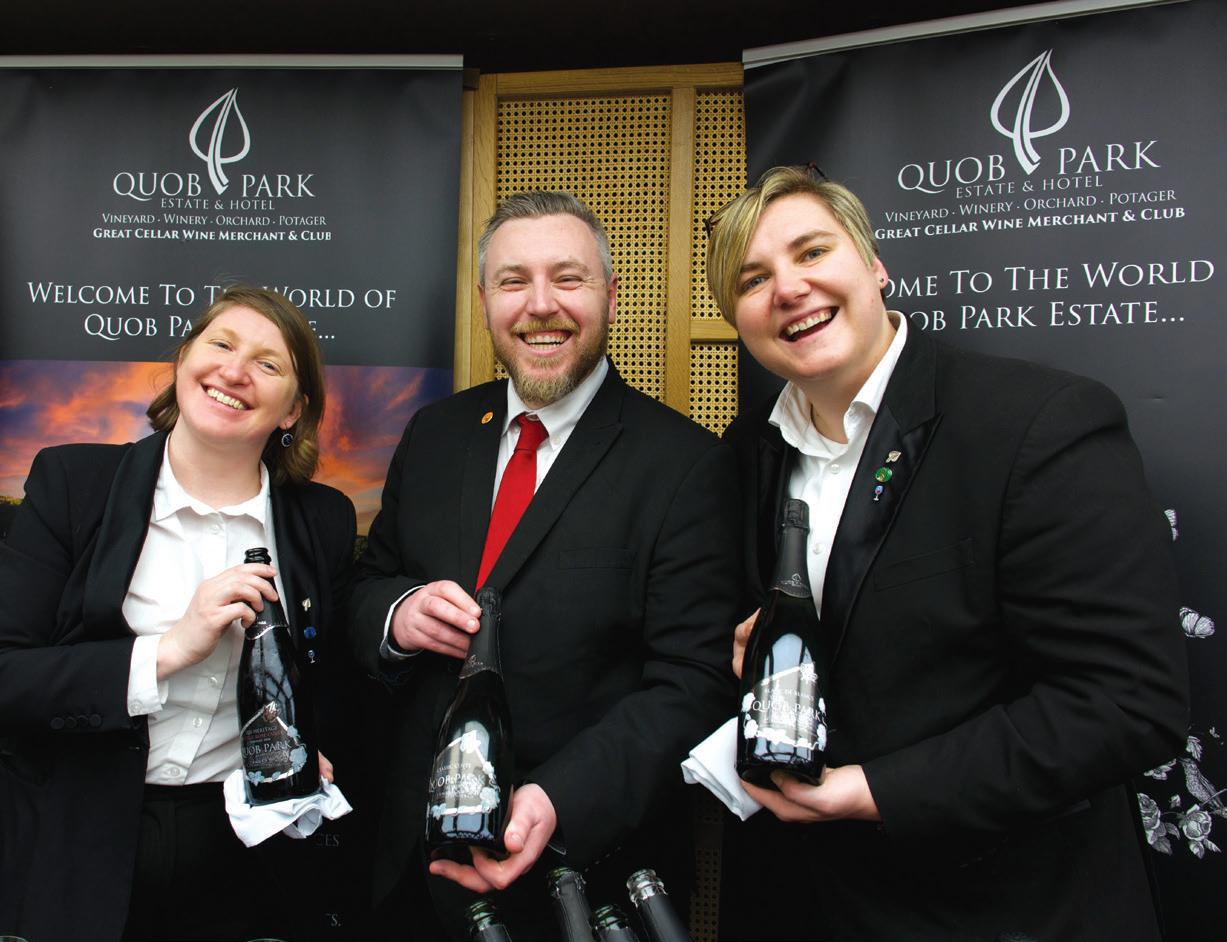
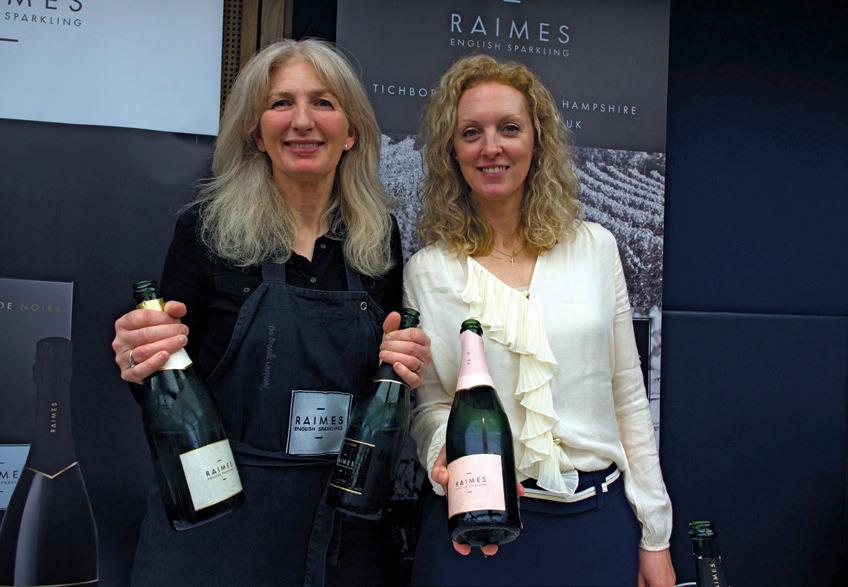
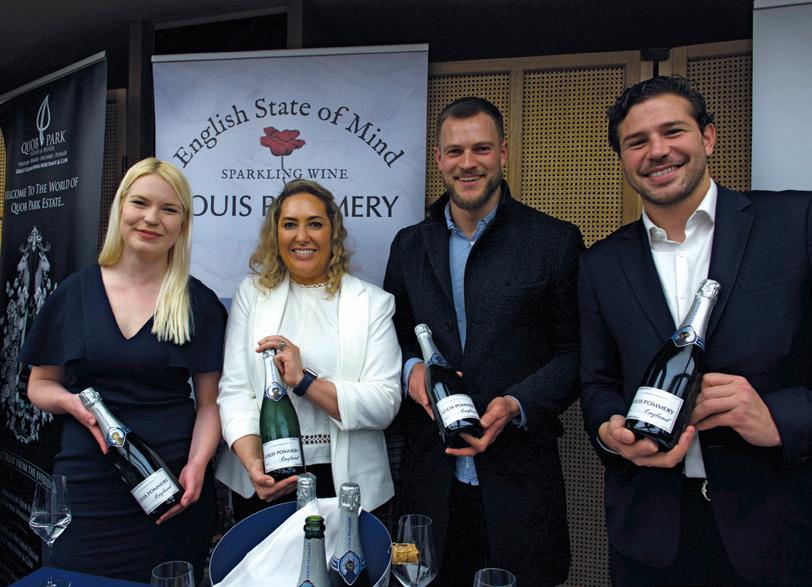
The exquisite venue was buzzing with invited guests from the world of wine including buyers within the on trade and the off trade, wine writers and members of the press. Attendees were able to meet winemakers and talk with producers.
At the tasting were ten different vineyards from across Hampshire:
Black Chalk, Cottonworth, Danebury Vineyards, Exton Park, The Grange, Hambledon, Hattingley Valley, Louis Pommery England, Raimes and the newest member Quob Park.
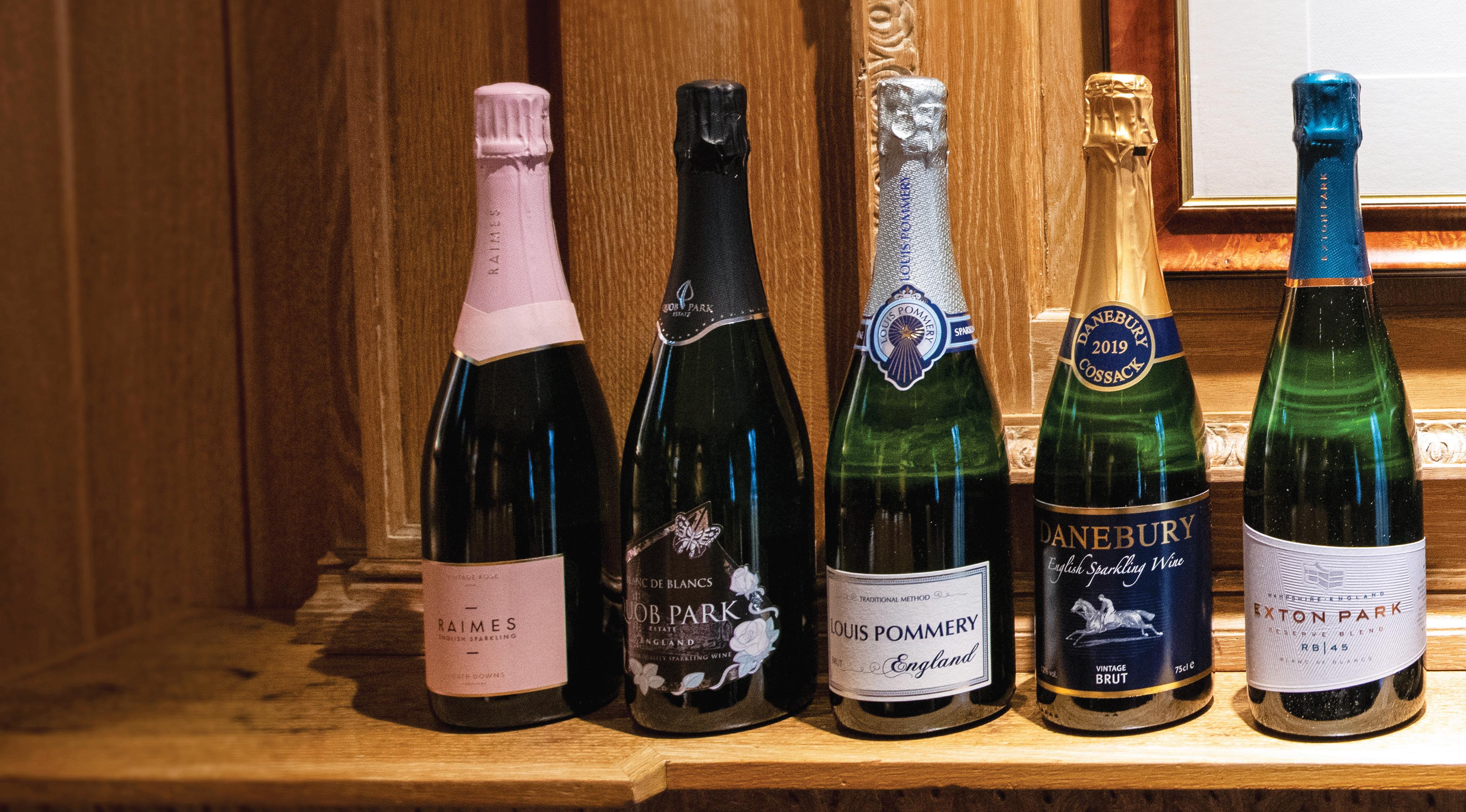
Trade tastings are an excellent way to highlight all that is on offer among the Vineyards of Hampshire and the event was a great way to gather the trade together and get them talking about regional English wines.

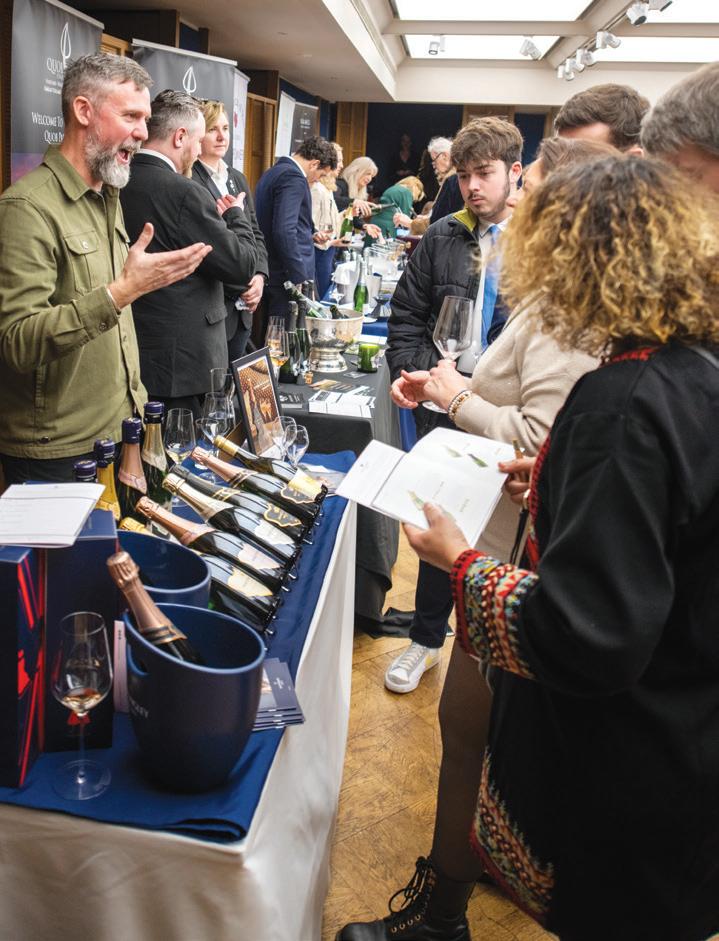
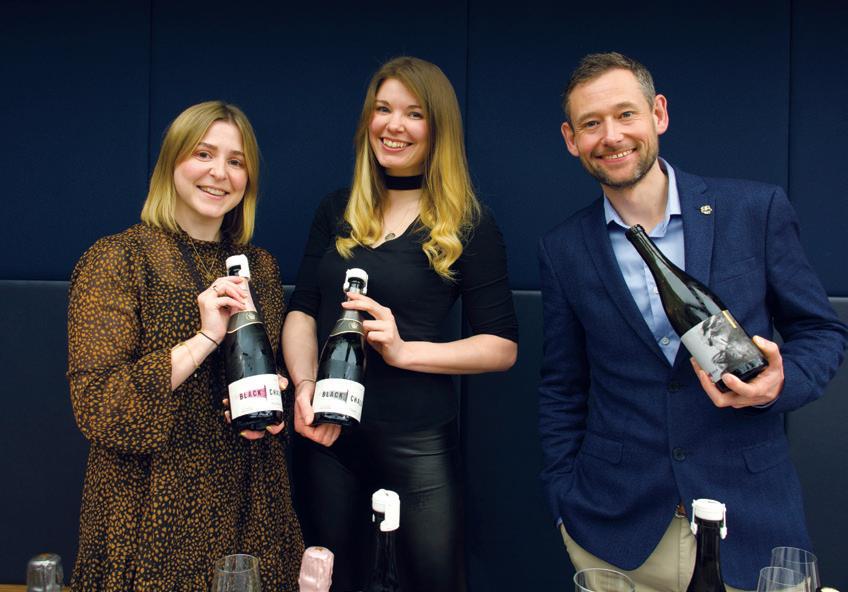
14
NEWS
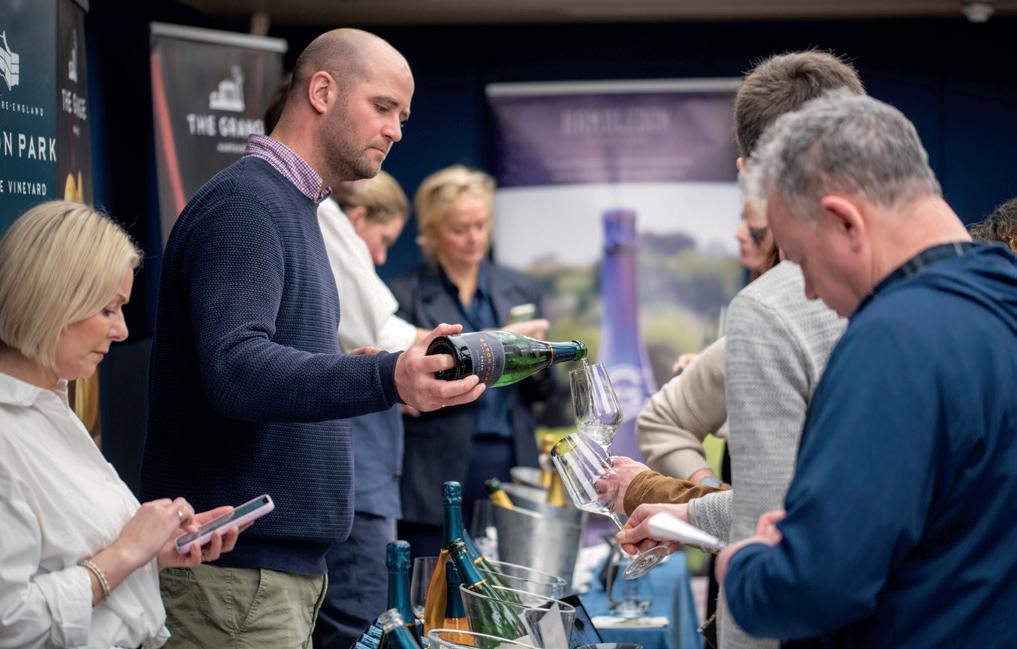
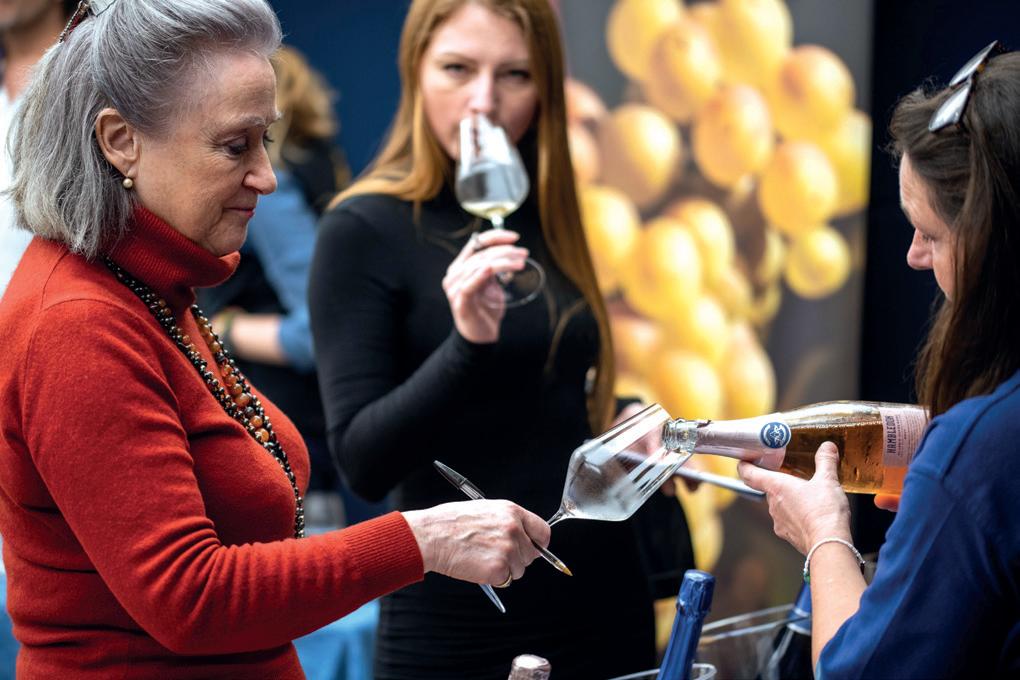
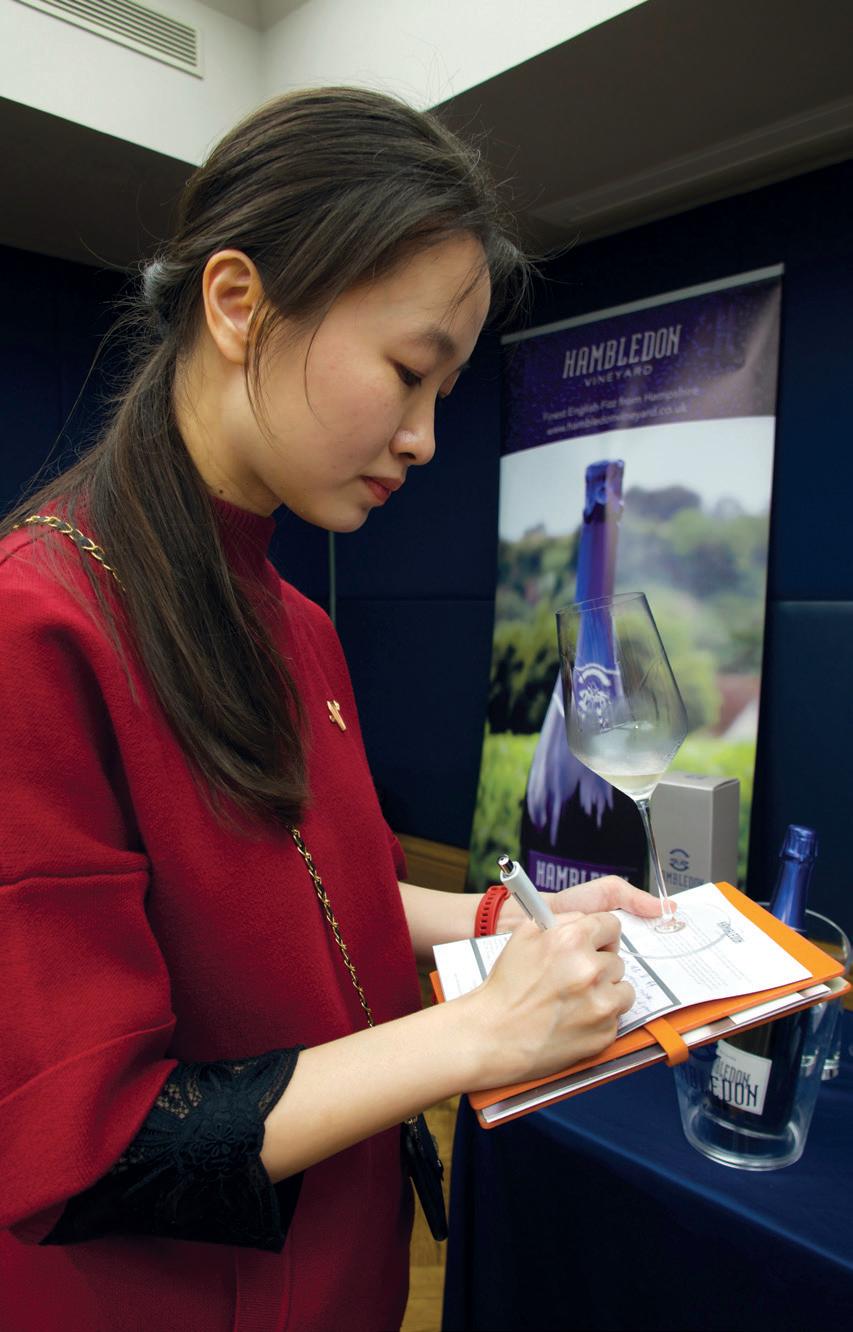





15
Knight Frank Viticulture
We are a modern, innovative consultancy, that’s built on the traditional values of outstanding customer service, that exists to grow profitable English wine businesses.
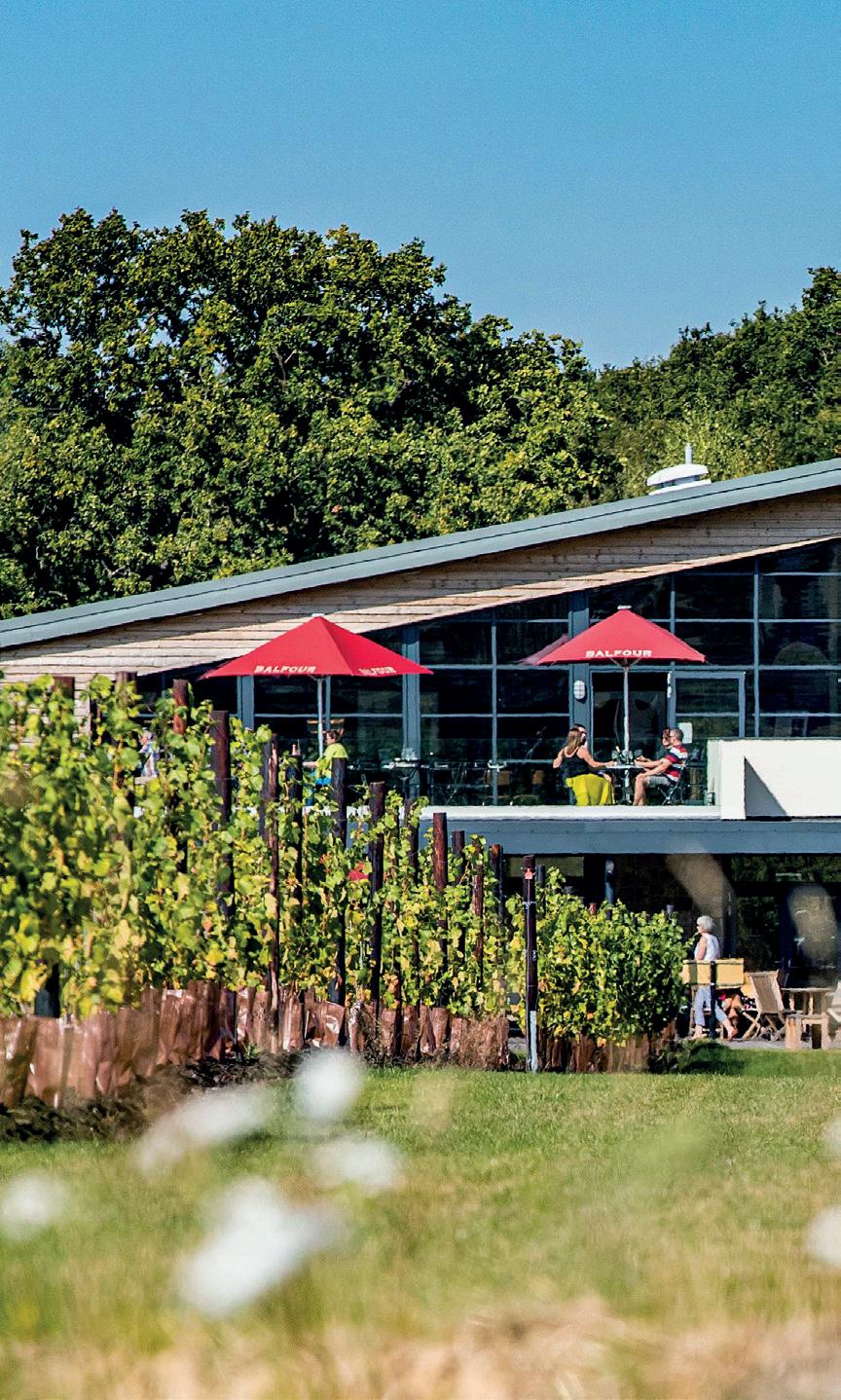
Through investment and sales advice, geospatial vineyard land search, the creation of outstanding visitor destinations and talked about brands, our expert team offers unique and market leading opportunities via our products and services.
Geospatial vineyard land search
Our in-house, bespoke digital mapping tool, reviews data on soil type, altitude, slope direction, historic weather patterns and title ownership to allow us to identify and approach the owners of premium land suitable for vines on behalf of wine producers.
Investment and sales advice
As wine businesses grow and new entrants join the market, the value of wine businesses is quickly surpassing the asset value of their planted vineyards and built wineries. This requires a highly specific valuation capability, and a deep understanding of the cash requirements of wine businesses. Our team of winery investment consultants have been involved in this market for longer than any consultants in the sector and are the market leaders in offering winery business investment and sales advice.
Higher value wine business
The English wine market is saturated with wine brands and is incredibly competitive in the sales of wine through the on and off-trade, putting pressure and uncertainty on margins and wine business P&L’s.

We have developed a tried and tested service that is recognised as a more sustainable and profitable commercial platform for the future growth of English wine estates. It creates a higher value wine business, opportunities for diversification and retail solutions that reduce a reliance on lower margin trade channels.

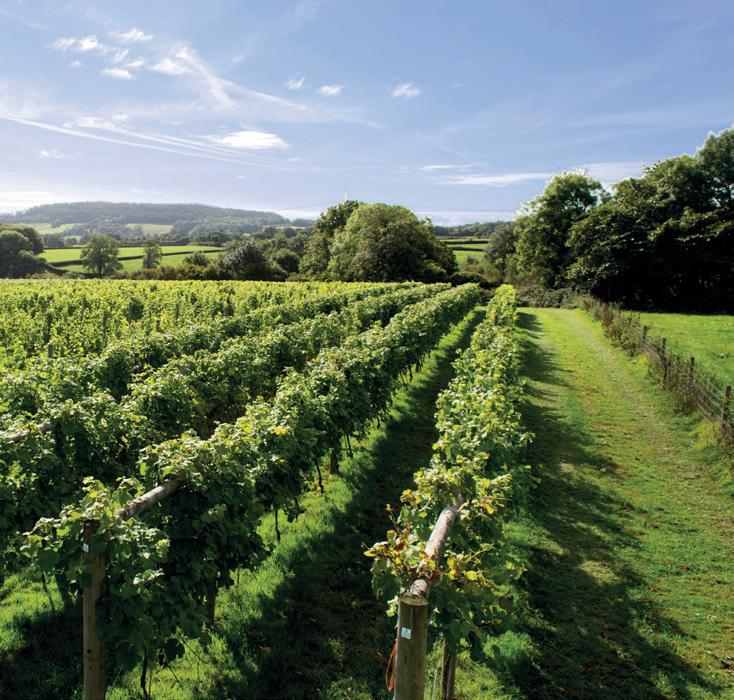
Renewables
In partnership with Zestec Renewable Energy, Knight Frank provides clients with a zero-capital outlay solar PV solution with no maintenance costs. In a world of inconsistent cost pressures, this vineyard and winery solution produces cheaper, greener power, generated from your own land and roofs, a reduction in your energy bills and support for your ESG objectives, with a big step towards net zero.

Grant funding
Grant funding is available for all sectors of viticulture, from startups to well established businesses looking to invest in expanding operations. Our unique grant funding service has access to 9,000 public and private grant funding opportunities available to our clients. Importantly this knowledge allows grant funding to be stacked together and developed as part of business plans and proposals.
Regenerative
Find
With regenerative agriculture there are significant opportunities to introduce changes within and around the vineyard which will benefit the overall health of the environment and enhance the visitor experience. Examples include changing inter row management, using micro clovers as a perennial living mulch under the vines and introducing low height pollinators and nitrogen fixing plants to add diversity in the rows. Changes can be implemented in a controlled and managed way which takes account of individual vineyard requirements and recognises the high value of the crop. Out More
Roebuck Estates launches
‘Viticulture Academy ’
Sussex’s Roebuck Estates, which is celebrating its tenth anniversary this year, has launched its Roebuck Viticulture Academy – a three-day vineyard training programme available exclusively to its trade partners.
Established in 2013, the multi-site vineyard owner released its first sparkling wine in 2019 and has always had a clear vision: to make classically crafted vintage sparkling wines every single year from its estate-grown fruit. Roebuck owns and manages 60 hectares of vineyards throughout Sussex and Kent with each vineyard site planted with carefully selected clones and varieties best suited to the soil.
Every year, Roebuck will now offer its trade partners the chance to join Head Viticulturalist Jake Wicks and his vineyard team during the growing season to gain an immersive, hands-on experience at the most
important stages of the viticultural calendar. The programme consists of three one-day workshops focusing on the technical aspects of pruning, canopy management, grape berry analysis and harvesting.
Michael Kennedy, CEO at Roebuck Estates, said: "We believe the quality of the wine in your glass starts with viticulture and for the past decade we have invested heavily in our vineyards, ensuring that we have established the finest sites which are producing the very best fruit for our vintage sparkling wines. We are also incredibly fortunate to have a vineyard team made up of highly qualified viticulturalists who have worked all over the world.” He added: “By sharing our expertise, we aim to provide our partners with an in-depth insight into the skill, craftsmanship and technical knowledge needed to produce wonderfully individual sparkling wines, every single year.”
Roebuck’s Head of Viticulture, Jake Wicks, will lead the Academy, covering class-based theory sessions plus practical experience working with the Roebuck team in its vineyards close to Petworth in West Sussex. Jake said: “Our Viticulture Academy got off to a fantastic start last week. The pruning workshop was attended by a very talented group of sommeliers from some of the finest restaurants and hotels in the country including Bacchanalia, Mandarin Oriental and Noble Rot. The course’s aim is to rapidly accelerate their knowledge of viticulture in the UK, allocating them their own Pinot Noir vines to nurture and follow throughout the 2023 growing season. Our next workshop in July will focus on canopy management techniques, looking at how we improve grapevine balance and optimise fruit quality. And then… harvest!”
Gripple reveals new high tensile barbed wire joiner
Gripple, the market leading manufacturer of wire joiners and tensions for agricultural fencing, has released a new wire joiner specifically for use with high tensile barbed wire.
The new High Tensile joiner is 16% stronger than using a traditional wire knot, thanks to Gripple’s patented corrosion resistant ceramic wedge technology, which means barbed wire joints last the lifetime of the fence.
Part of Gripple’s new Barbed range, which also includes a Mild Steel joiner, the High Tensile joiner has been specifically designed to grip the unique shape of barbed wire, proving long lasting joints for installation or repair.
Manufactured from corrosion-resistant materials, the High Tensile joiner is designed to last the lifetime of the fence. In addition, with its built-in release function, it enables release and adjustment if needed.
Gripple Product Manager, Tom Wire, explains: “We have responded to demand from the market for a wire joiner which is compatible with high
tensile barbed wire. The wire joiner makes fences even quicker and more straightforward to install and allows for easy maintenance and repair. This will mean major time and cost savings.”
Gripple’s new High Tensile joiner is compatible with standard wire thicknesses from 1.57mm to 2mm. As part of the new Gripple Barbed range, both the High Tensile and Mild Steel Barbed wire joiners offer a multitude of benefits. Compatible with barbed wire of 2.00mm to 2.50mm thicknesses, the Mild Steel Barbed wire joiner, like the High Tensile version, is easy to use, quick to install and very reliable.
Gripple has applied 30+ years of tried and tested wire joining technology to its Barbed wire joiners, which have been specifically developed to grip the unique undulating shape of barbed wire.
Gripple’s Barbed range is available from local, regional and national fencing and agricultural retailers across the UK.

17
MAY 2023 | VINEYARD NEWS
• MAGNIFICENT MONMOUTH FARM WITH 120 ACRES •
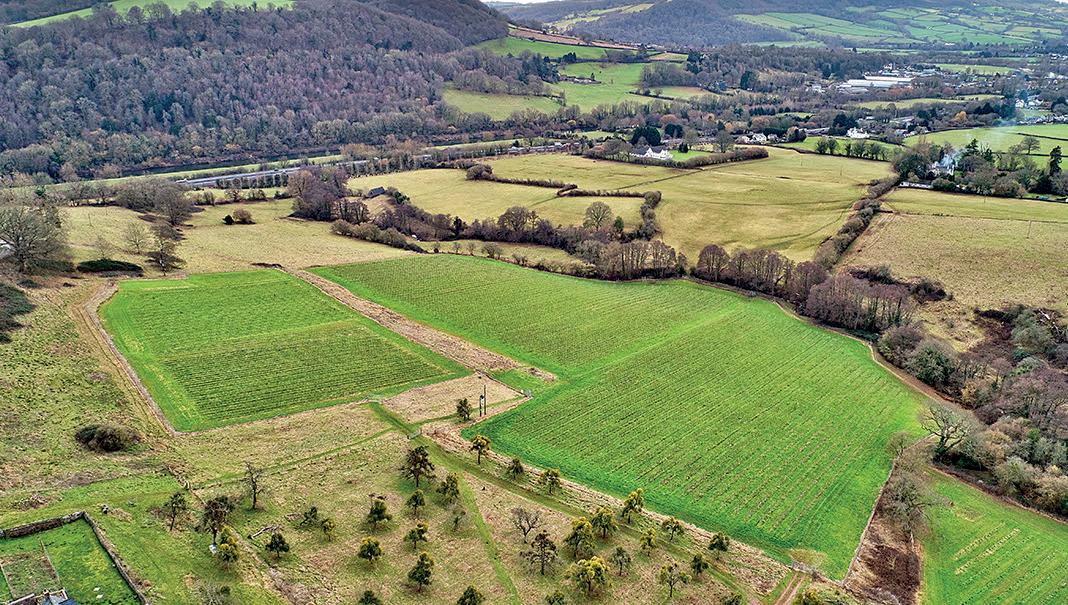
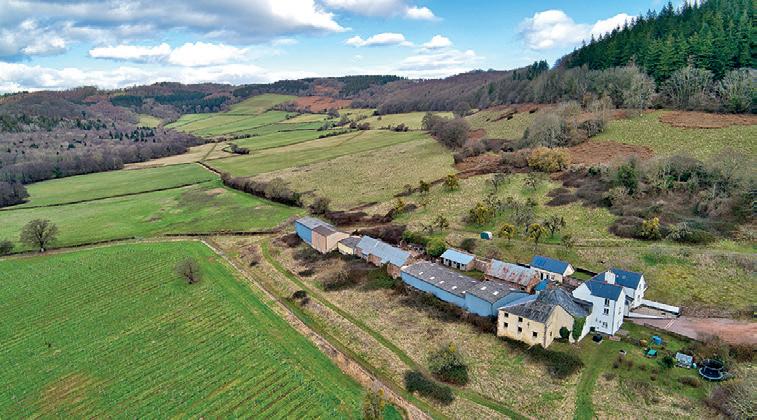
• BEAUTIFULLY RENOVATED FARMHOUSE •
• 20 ACRE VINEYARD PLANTED WITH PINOT NOIR AND CHARDONNAY •

• 50 + ACRES OF PRIME VINEYARD LAND AVAILABLE FOR FURTHER PLANTING •

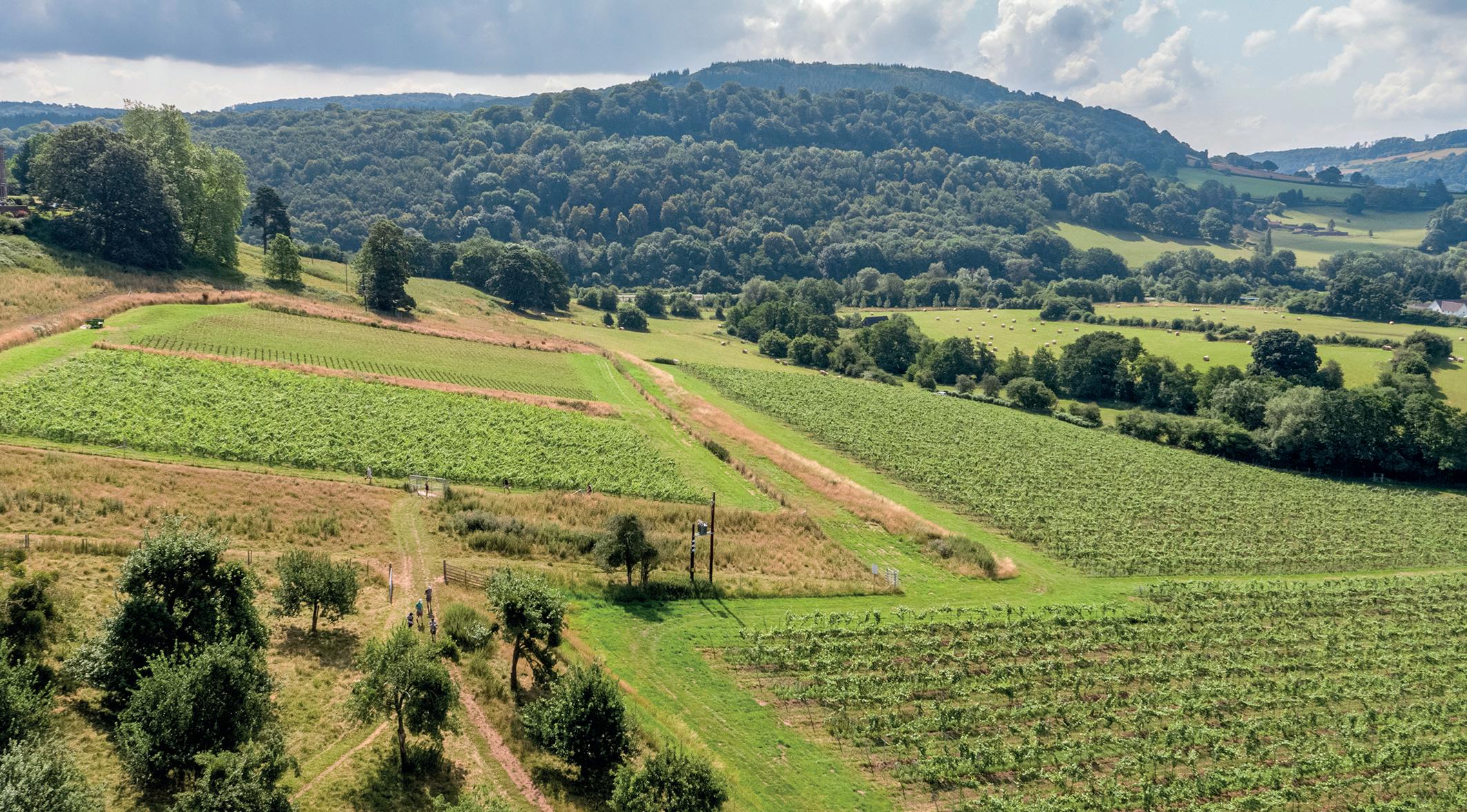
• DEMETER CERTIFIED BIODYNAMIC AND ORGANIC •
• SOUTH FACING, SHELTERED ASPECT ON VIRGIN SOILS •
• FULLY DEER AND WILD BOAR FENCED •
• WINE MAKING CONTRACT AVAILABLE •

• MANAGEABLE HANDOVER ARRANGEMENTS • Guide Price £3,600,000

PROPERTY CONSULTANTS • LAND & ESTATE AGENTS • CHARTERED SURVEYORS • PLANNING & DEVELOPMENT
01600 714140 enquiries@powellsrural.co.uk www.powellsrural.co.uk
NEWTON COURT FARM, DIXTON, MONMOUTH, MONMOUTHSHIRE
Organic and biodynamic
DIXTON | MONMOUTHSHIRE


Situated on the edge of Monmouth town, Newton Court Farm has much to offer, including the newly renovated farmhouse with stunning views over the 20 acres of vineyards and surrounding rolling countryside.


There are a further 50 plus acres of prime vineyard land waiting to be developed on the estate and also a varied collection of outbuildings with great redevelopment opportunities. The farmhouse has been lovingly restored by the current owners creating a magnificent family home bursting with character and charm. There are good connections to the main road network with the A40 nearby connecting on to the M4/M5 and M50 motorway networks making Newton Court Farm and Vineyard very accessible to major cities such as Cardiff, Bristol and London.
Outside
Outside there are a range of outbuildings including a cider mill, former cow shed, stone barn and a further enormous stone barn measuring 89ft x 17ft. All these buildings have potential for conversion (STP) for residential, commercial, holiday lets and weddings. In addition to the traditional buildings are a range of farm buildings to include steel sheds and stables. One of the outbuildings has been converted into
GUIDE PRICE: £3,600,000
a bunk house with an attached toilet, shower block and a laundry room nearby, all available for vineyard staff and visitors.
The land comprises of approximately 90 acres of pastureland and 20 acres of planted vines. 71 acres of land is laid to grass and is subject to a grazing licence agreement. The bulk of this land is well suited to viticulture with a south facing aspect and suitable terroir. There is excellent scope for a purchaser to expand the vineyard should they wish to do so and take the vineyard plantings to in excess of 70 acres.
The existing vineyards
The existing vines are planted on three adjoining sites mainly on GDC trellising and some Burgundy style VSP. The plantings are broadly 50:50 Pinot Noir and Chardonnay, with a small amount of Solaris introduced in 2021. Clonal selection and rootstocks have been carefully sourced to suit the sites and their terroir. About 50% of the vines are Selection Massale. More details are available to interested purchasers.
The vineyards have been professionally deer and wild boar fenced. They all have a southerly aspect, are planted on slopes with excellent drainage and shelter. The land was previously used for sheep and dairy cows which is reflected in the rich, virgin soils.
20 ACRES OF PLANTED VINES
The vines have been brought on very slowly as a deliberate long-term policy and yields are expected to grow considerably now as the vineyards begin to mature.
The vineyards are currently farmed organically and biodynamically and are accredited through Demeter.
There may be potential for a wine making and/or farming contract to be agreed with Ancre Hill Estates, the current owners. Various viticulture and farm equipment may also be available for purchase by negotiation. If this is of interest to a purchaser, please discuss this with the selling agents.
The farmhouse
The farmhouse has a colourful live-in kitchen with a central island. A door from the kitchen opens into the generous living room and just off the living room is a very cosy family room, with a beautiful arched window with shutters overlooking the vineyard. Steps lead down to a staff room and office. This area could be adapted for other uses. A staircase crafted from a fallen Oak tree from within the grounds of Newton Court Farm leads from the rear of the living room up to the first floor. Four double bedrooms can be found along with a shower room and a large family bathroom.
19
more information, contact Powells on 01600 714140
For
MAY 2023 | VINEYARD
In competition...






In weather which can only be described as hostile, pruning teams from Hazel Street Vineyard, Davenport Vineyard, Simpsons, Ridgeview, Vineworks, Plumpton, two teams from Gusbourne distinguished as Gusbourne Kent and Gusbourne Sussex and two teams from Brenley went head to head displaying their excellent skills to both the judges and the brave, though slightly soggy, spectators.
The atmosphere was amazing and it was a privilege to witness an event that celebrates those who work really hard to improve the quality of grapes produced. Award winning wines often grab headlines but these wines would not be possible without outstanding grapes and the very best grapes come from the healthiest vines. Outlining details of the competition, joint organiser Tony Purdie, Vineyard Manager of Yotes Court explained: “Production should come second to the health of the vine… Pruning is a constructive job.” Teams of three had to prune, pull out and tie down five vines in 10 minutes. There were penalty points for not tying down and extra points to be gained
from pruning additional vines.

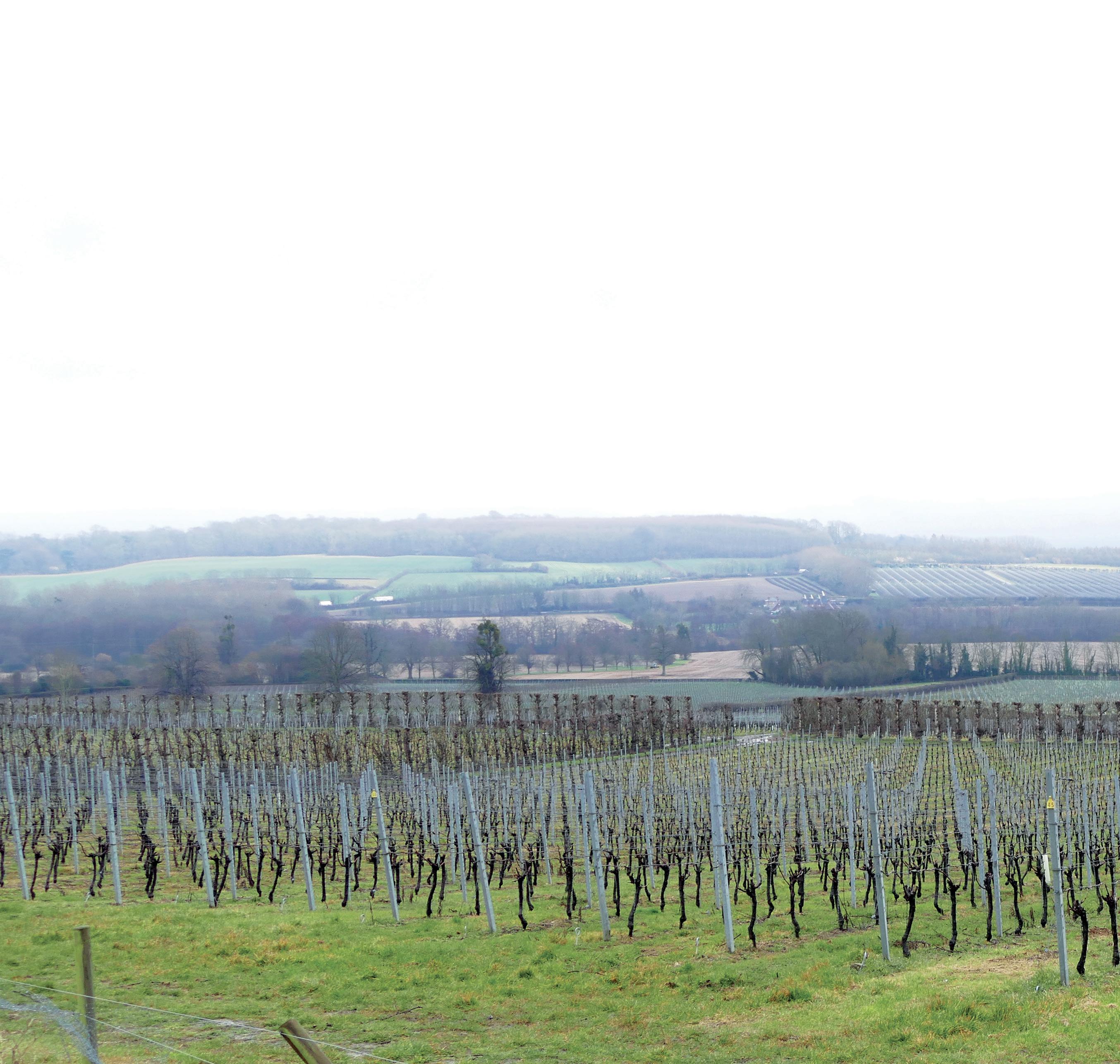
The challenge was made even more interesting as there had been no shoot thinning of the vines. One competitor joked that the vines “looked like a set of bagpipes.” Despite the complexity of the challenge, Tito Sordi of Simonit and Sirch said: “The time limit may have had an influence over some choices. It was not easy as there were lots of options but this can be better as it gives the opportunity to make a definite choice, the competitors made a good job.”
Marco Simonit was overseeing the panel of judges. The author of Cordon, The Handbook of Vine Pruning, Marco said: “There was a good technical level displayed and respect for the wood was shown, which is good news.” Marco suggested that pruners take care over the age of the wood they select when making their choices. When asked about the weather Marco – who was head to foot in wet weather clothing – smiled charmingly and said simply: “The weather is not the best for pruning.”
Tony Purdie and James Dodson of VineWorks started the competition together several years ago. Tony Purdie explained that although

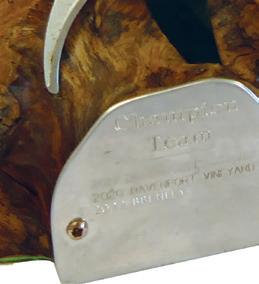





March does not always have the best weather it is important that the competition is held when those taking part have had the opportunity to get their skills back up to full speed. Tony also explained that it was important for the host venue to find the right uniform bays so there were no unfair aspects to the competition.
James Dodson was very upset at the fact that he was stranded at an airport as his plane had been seriously delayed so he was not able to attend the competition, he extended his apologies and was very disappointed at being absent. He has never missed a competition before and he wanted to thank all who had taken part. “I would like to say a special thank you to all the sponsors Agrii, Bedlam Brewery, Felco, Hadley Group, NFU Mutual, Bekaert, NP Seymour, Pépinère Tourette, Vineyard Magazine and VineWorks,” said James. “The feedback from the competition was good in all cases and we are looking for more sponsorship in the future to develop the event and encourage more participants whilst maintaining the focus as a celebration of the viticultural side of the industry,” he added. <<
Photo: Simon Buck
20 WINEGB PRUNING COMPETITION
The annual WineGB Pruning Competition provides a perfect opportunity for viticulturists from the UK to get together to celebrate the art of pruning. It was impressive to see so many vineyard professionals come together on 17 March 2023 at Yotes Court Vineyard for the ‘Batt le of the Secateurs’.
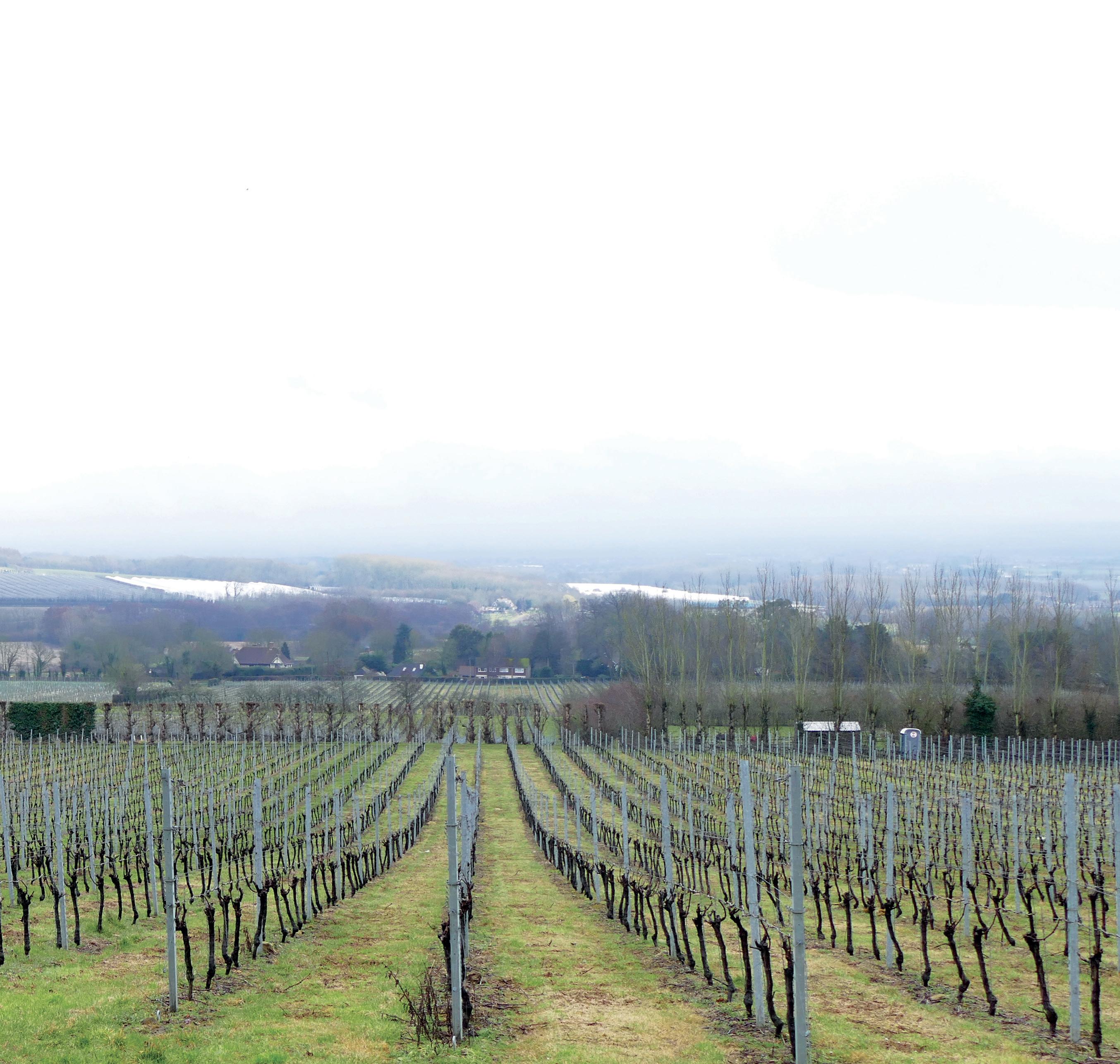
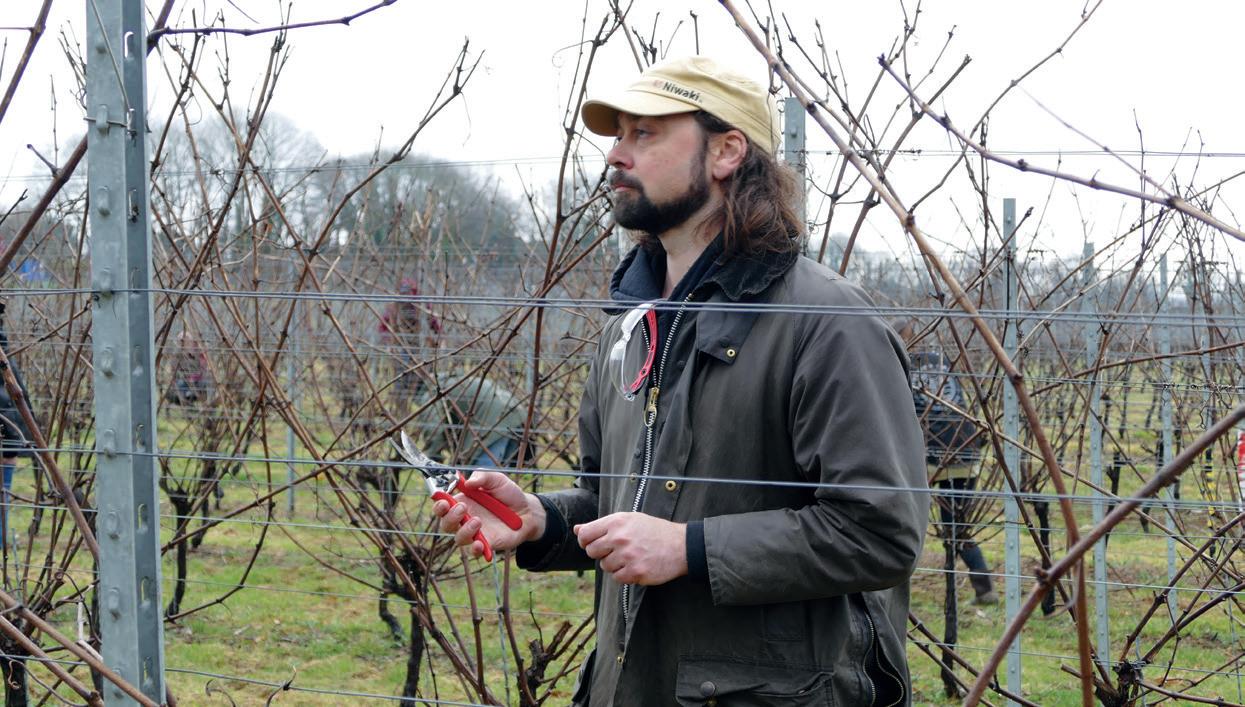
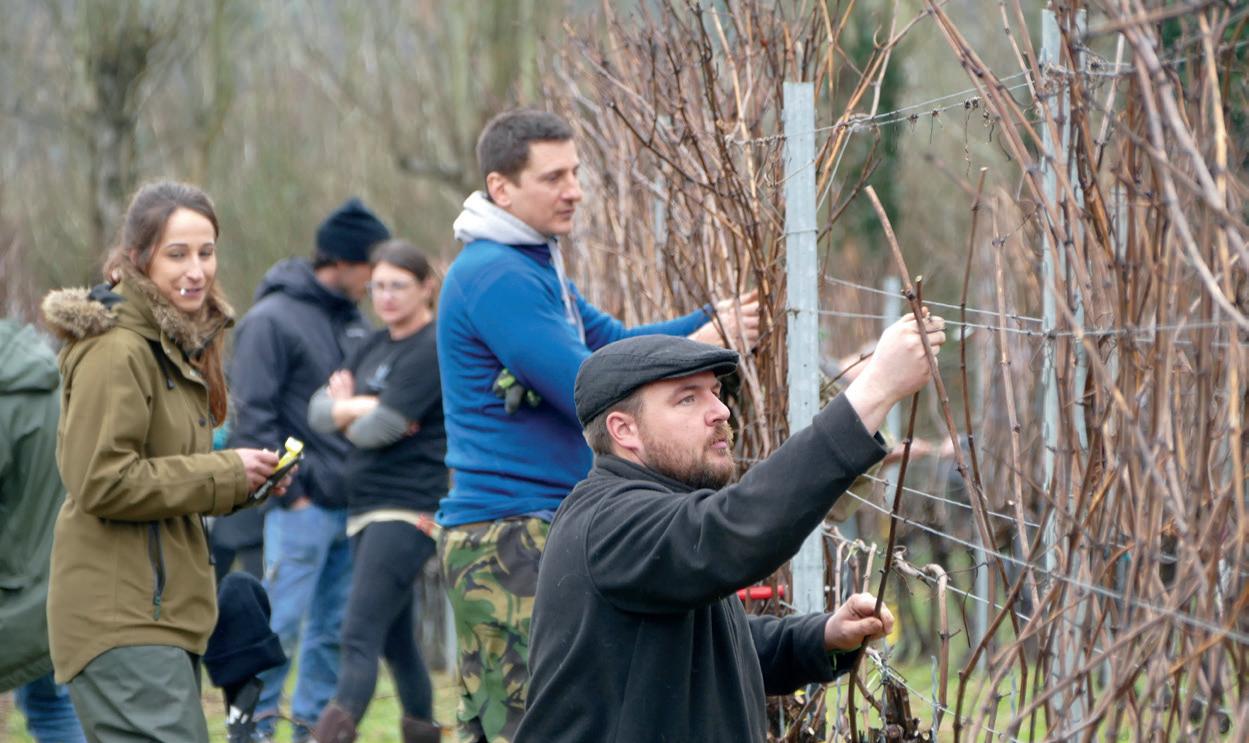



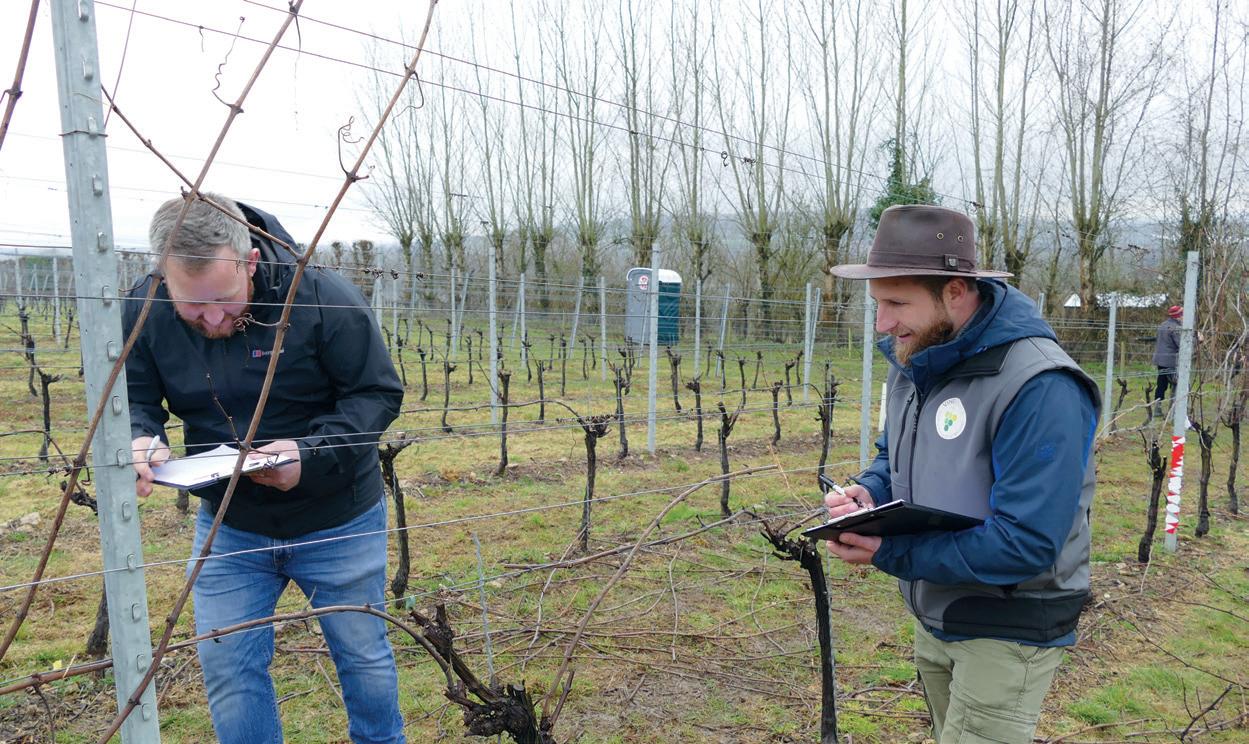 The team from Brenley A were runners up
Huw Rhys-Davies
Braving the weather are Stephen Skelton MW and Julian Searle
The team from Brenley A were runners up
Huw Rhys-Davies
Braving the weather are Stephen Skelton MW and Julian Searle
MAY 2023 | VINEYARD 21
Team winners Gusbourne Kent
<< The atmosphere and camaraderie were evident throughout the day, it was a great opportunity to celebrate vineyard skills was great. Everyone, including the judges, was in good spirits and as the judges gathered in the vineyard to ensure the marking was standardised Joel Jorgenson of Vinescapes joked that he was “not so comfortable with a clipboard and more comfortable with the secateurs.”
“Of all the disciplines in the vineyard pruning is the most skilled and the competition offers the chance both to show off skill and to learn something,” explained Matt Strugnell Vineyard Manager of Ridgeview Estates and part of the judging panel. Speaking to the judges it was clear that they all felt that overall quality year on
year is getting better. A common observation amongst all the judges highlighted how the pruning was very respectful of the health of the vine.
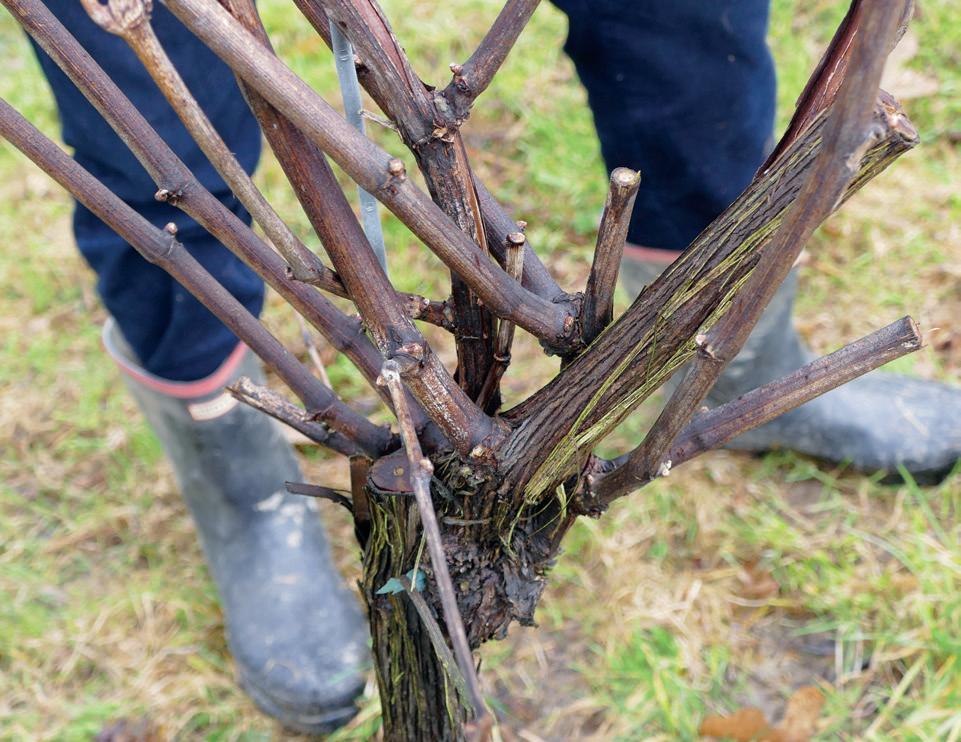

Before the teams commenced their competition there was a solo competition in which Naomi Solomon was the only female entrant. She was supported by her dog Ernie who she said had picked up on the tension as he was far more alert than usual. First place in the Solo Pruning Competition was awarded to Phil Harris, Vineyard manager at Davenport Vineyards and owner of Natalia Harris Vineyard, Naomi Solomon was awarded second place whilst Jim Pritchard achieved third place.

Congratulations go to the winners in the team event with Gusbourne Kent taking first
place. The three-person team at Gusbourne Kent comprising of Alex Stancu, Jim Pritchard and Ben Osbourne took home the trophy. The team from Brenley A (last year’s winning team) consisting of Ben Turner, Peter Davis and Naomi Solomon placed second and the team from Ridgeview were awarded third place.
The winners were provided with Felco goody bags donated by NP Seymour who were there on the day to support the event. Prize bags for the winners included a pair of Felco 8, 911 holster, f602 saw, 703 gloves XL, and a Felco 501 knife. Second place prizes included a pair of Felco 8, 910 holster together with 702 gloves XL, whilst the prize for third place was a pair of Felco 8 and 701 gloves XL.
Congratulations to all the participants –we are all looking forward to next year.
 Supporting Naomi Solomon was Ernie
Marco Simonit headed up the judging panel
Supporting Naomi Solomon was Ernie
Marco Simonit headed up the judging panel
MAY 2023 | VINEYARD 22 WINEGB PRUNING COMPETITION
Battle of the Secateurs
A respectable sixth place.



On 17 March Plumpton College wine students competed in the 2023 WineGB ‘Battle of the Secateurs’ contest at Yotes Court vineyard for a chance to become ‘pruners of the year’.
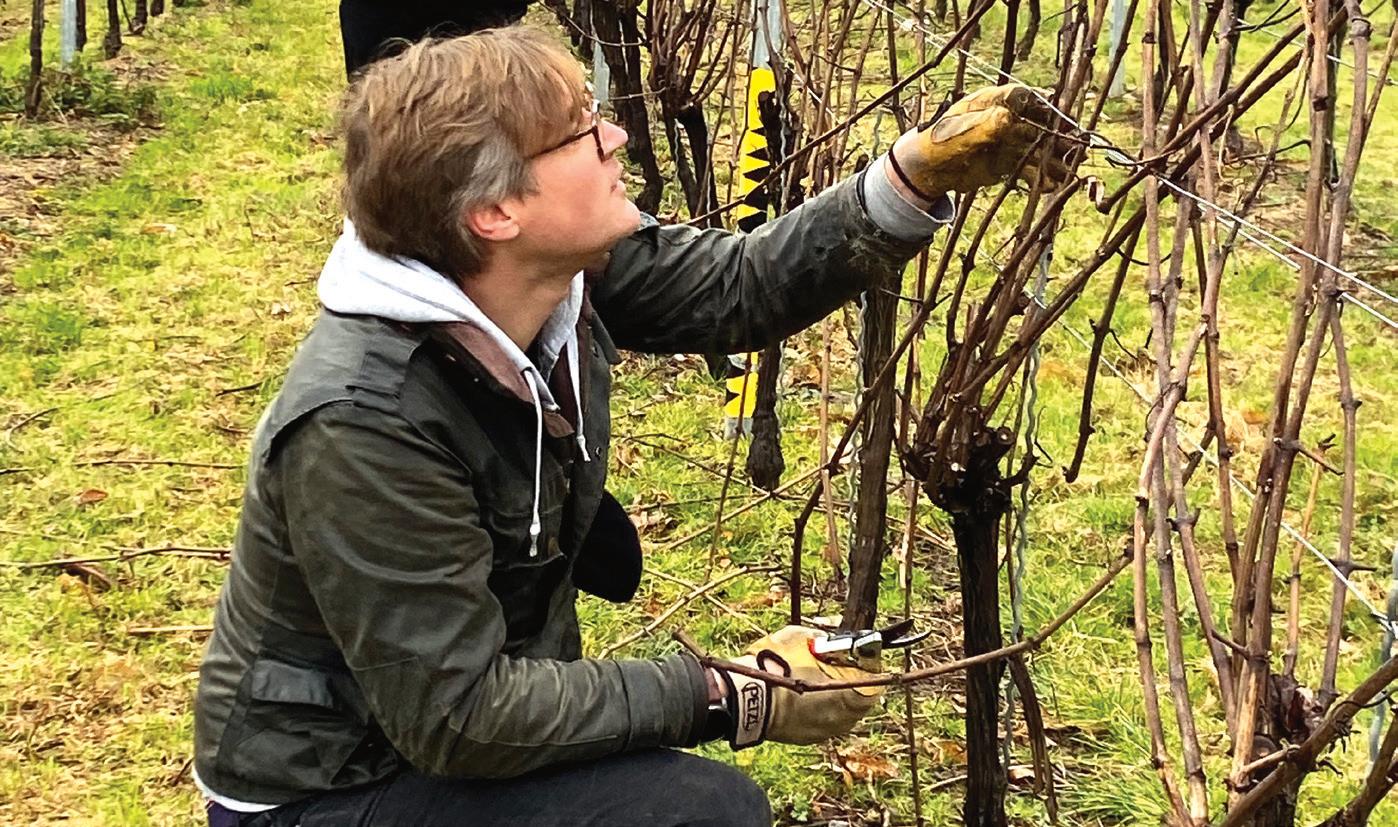

The team comprised Christian Malnig (left), Will Beasley (centre) and Huw Rhys-Davies (right). The team finished a respectable sixth and had a great time.
Will in deep thought
DESKTOP www.plumpton.ac.uk ENVELOPE wine@plumpton.ac.uk INSTAGRAM @plumptonwine EDUCATION
23 MAY 2023 | VINEYARD


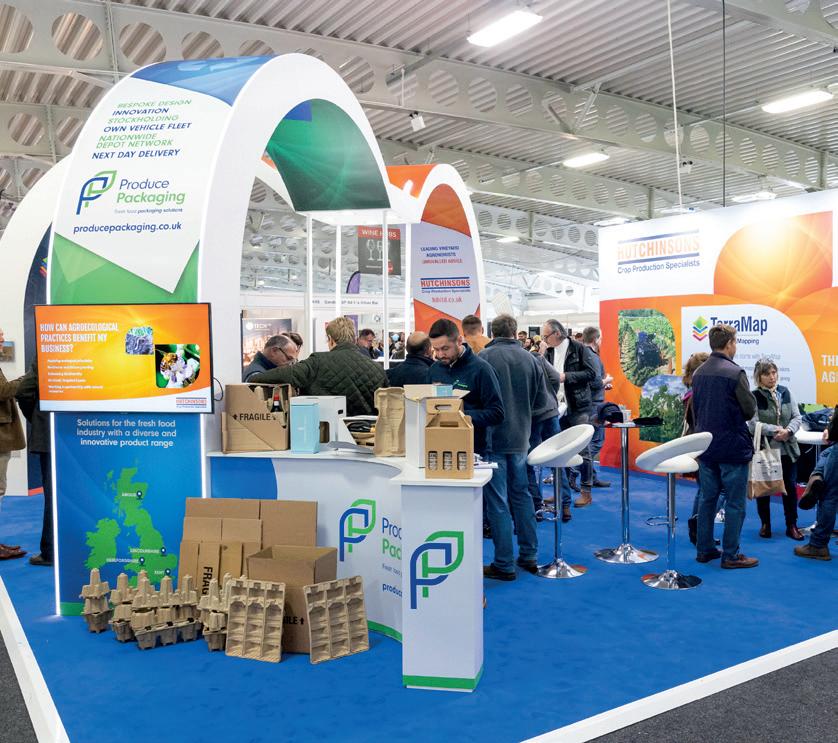




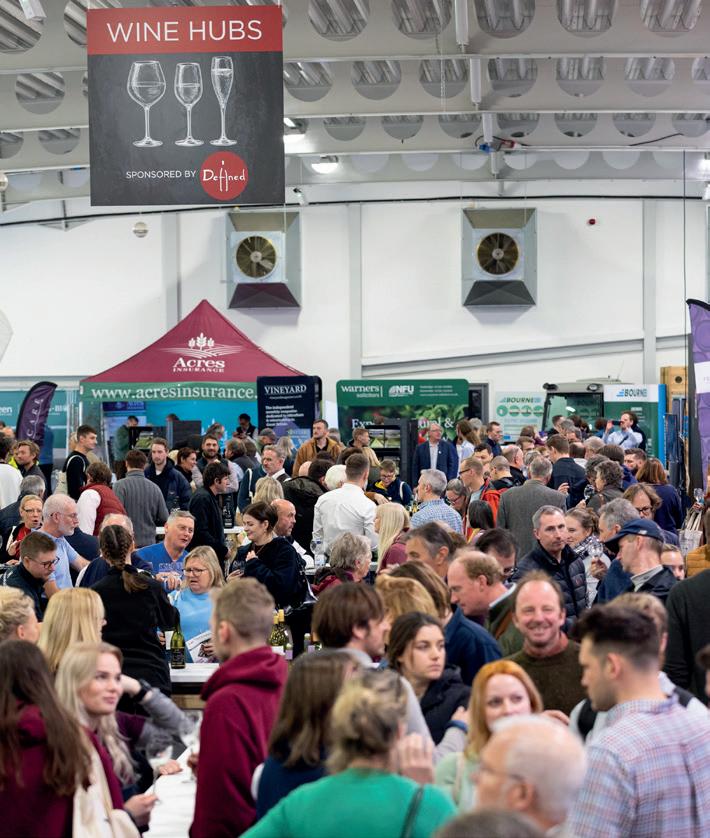
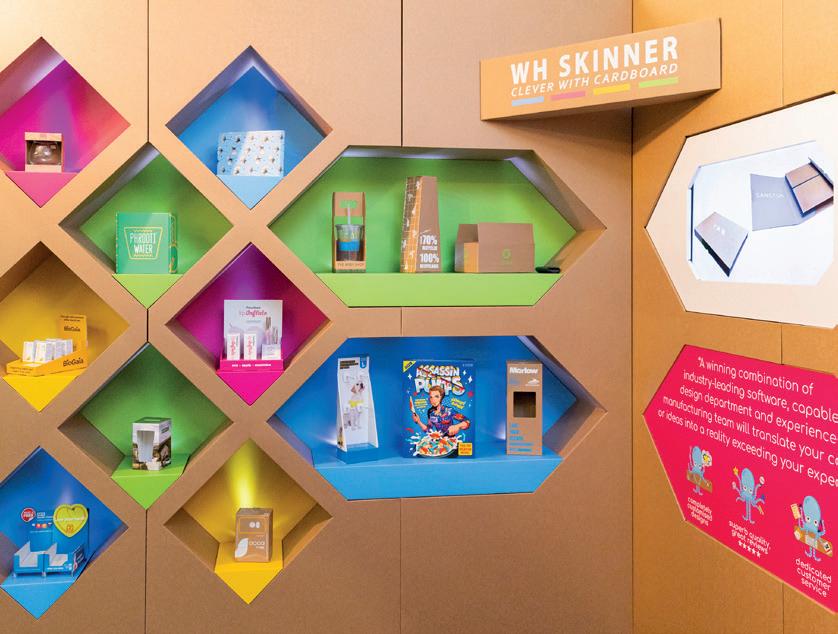



For Growers and Winemakers in Great Britain For general enquiries please contact: Jamie McGrorty 01303 233883 In association with 22nd November 2023 Kent Event Centre, Detling, Maidstone, Kent ME14 3JF 2023 Sponsored by Vitifruit Equipment Sales and Hire RESERVE YOUR TICKET NOW www.vineyardshow.com
More space created for Top 100 Wines
This year’s Vineyard & Winery Show, being held on 22 November 2023 at The Kent Showground, Detling, will have even more space to showcase the very best English and Welsh wines.
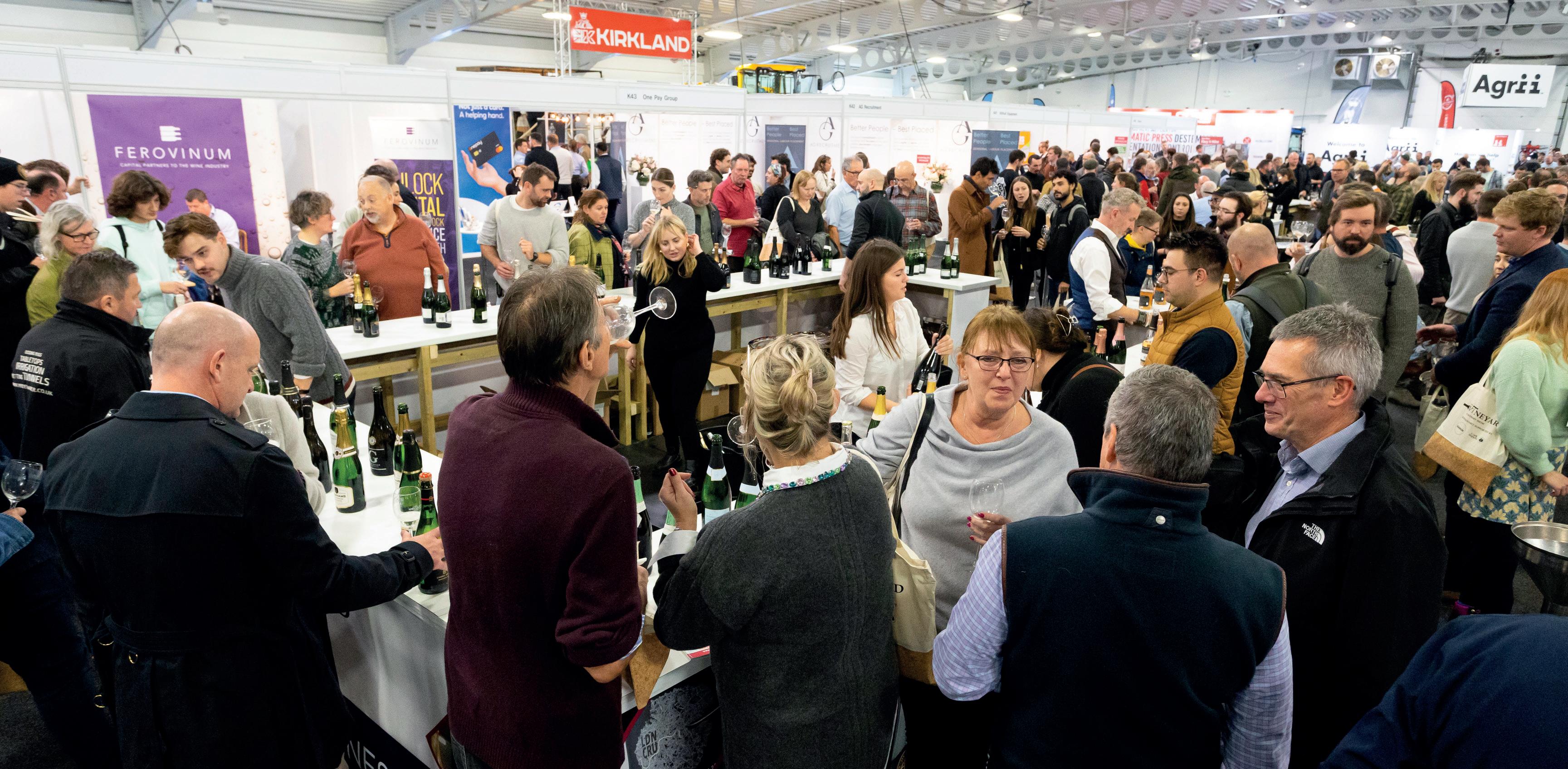
Due to overwhelming demand from growers, wine makers and wine writers, extra space has been generated by revamping the hall known as ‘The John Hendry Pavillion’ to incorporate a second WineHub showcasing 50 sparkling wines. “This extra space has been made possible by working with local marquee company Brooks Marquees to bolt on a 24m hall for the seminars, giving the seminar area its own bespoke space and creating more space for the wines,” commented Jamie McGrorty, Publisher of Vineyard Magazine whose team are responsible for organising the show.
“The seminars, which are once again sponsored by Ferovinum, will benefit from having their own area, a bespoke marquee bolted onto the side of one of the show halls, ensuring that delegates can concentrate fully on speakers without outside interference from visitors or exhibitors walking past, as well as creating even more space for growers and producers to taste the UK’s top 100 wines” added Jamie. The Top 100 wines are chosen by Matthew Jukes and WineGB with particular interest taken to provide a complete cross section of winemaking style, price point and grape variety. The final selection process is taking place later this year.
In continuing with The Vineyard & Winery show’s rapid growth, the ever popular Matthew Jukes master class has also been moved to its own devoted room within the showground, and will now take place in the Astor Pavillion which overlooks the Kent Show Ground. “The Astor is perfect to host Matthew’s Master Class” said Jamie. “It’s a lovely bright room, with big windows looking out over the showground and
will be perfect for Matthew to muse about six UK wines that he feels warrant acclaim”. Matthew’s master class has been sold out two years running so be sure to book your tickets early, with details on how to do so being announced in the next edition. Money from ticket sales to Matthew Jukes Masterclass is donated to The Drinks Trust, a charity chosen by Matthew with over £1,000 raised in 2022.
The land on which The Vineyard & Winery Show is based was donated many years ago by farmers, who were keen for the site to bring the agricultural community and buyers together in one place. “It is very fitting that the Vineyard & Winery Show continues to be held at the Kent Showground because the aim of the Vineyard & Winery Show is to bring the whole viticultural community together under one roof,” added Jamie.
“For many years the committee at the Showground have done an excellent job of showcasing the very best of farming. The 100th Kent County Agricultural show will be held in July this year signifying a major milestone. For a whole century the event has continued to bring joy alongside education despite many trials including wars, foot and mouth disease and more recently Covid-19. I hope the viticultural industry can follow in their footsteps for many years to come,” concluded Jamie.
For 2023, The Vineyard & Winery Show is sponsored by Berlin Packaging, NFU Mutual, Vitifruit, Core Equipment, Hutchinsons and Royston Labels.
2023
book tickets simply go to: www.vineyardmagazine.co.uk
To
25 22 NOVEMBER 2023
When you least expect it


I am always on the lookout for great bottles. I take pictures of labels, make hasty notes on my phone, and sometimes even accept random sips from strangers, but it is still amazing how many remarkable wines come to my attention when I least expect it.
I am often asked, “Do you manage to drink wine for pleasure?” I answer that even the most disappointing and tedious days chained to the tasting bench are always pleasurable if there is one good wine in the mix. But sometimes, inspiration eludes me and coherent themes don’t seem to appear during the month when I plan this column, so here is a collection of wines with only one thing in common – I did not expect them to make such an impact on my palate when I was least expecting it.



The first discovery came about when those pesky Eurostar rail workers cancelled a day trip to France at the last minute. My wife suggested we do something completely impromptu, given that we had cover for our children, and we both came up with the same idea – The Pig. We










dropped everything and made it to the South Downs in time for dinner. After a delicious glass of Roebuck Blanc de Noirs, we eased into a bottle of 2020 Gusbourne Chardonnay, a wine I have tasted a couple of times but never enjoyed with food – and what a wine!
My second featured wine is from an estate I have reviewed before in Vineyard, but I have never considered tasting a Westwell wine that is only six months old. I could have sworn that this winery’s creations demand age, loading texture and gravitas as the months and years roll along. But no – this is another bottle that astonished me when I least expected it.
Finally, a parcel arrived from the Bedfordshire Rural Communities Charity. I am confident that this august body will forgive me if I say I was not expecting vinous glory. It just shows that the wine world can still amaze and confound the senses when one’s guard is down. As I enter my 37th year working in wine, I can guarantee that I would not have made it this far if there were no surprises left around the corner.
2019 Warden Abbey, Traditional Method, Bedfordshire



I take my hat off to the Bedfordshire Rural Communities Charity, which runs the four-acre Warden Abbey Vineyard as a not-for-profit community project. Reliant on volunteers and working with other local charities to provide opportunities for social and therapeutic horticulture, wildlife and heritage projects, this is a noble set-up, and it happens to craft jolly tasty wines, too.
Founded on the site of a medieval vineyard, first planted by Cistercian monks, a mere 2,640 bottles were made of this sparkling wine, and I must admit that I did not expect it to be so downright delicious.

Made from 43% Muller Thurgau, 39% Reichensteiner and 18% Bacchus, and fermented and bottled by the wizards at Halfpenny Green, it is balanced and charming, with an admirable level of flair and panache. I like the fact that it is a considered sparkler that does not need to rely on Chardonnay or the Pinots for complexity and class.
I have to thank Tim Taylor for sending me these wines. I know that he works part-time in the vineyard, and I apologise in advance if he has to jump in his delivery truck a couple more times than usual if, as I hope, people phone him to find out for themselves that great tastes can creep up on you when you least expect it.
26
DESKTOP www.matthewjukes.com ENVELOPE vineyard.ed@kelsey.co.uk Mahe Juk e s
The wine world can still amaze and confound the senses when one’s guard is down.
Tim Taylor, Vineyard Manager ENVELOPE info@wardenvineyard.org.uk �� 07955 935877
£28.00
MAY 2023 | VINEYARD WINE REVIEWS
2020 Gusbourne, Guinevere Chardonnay, Boot Hill Vineyard, Appledore, Kent





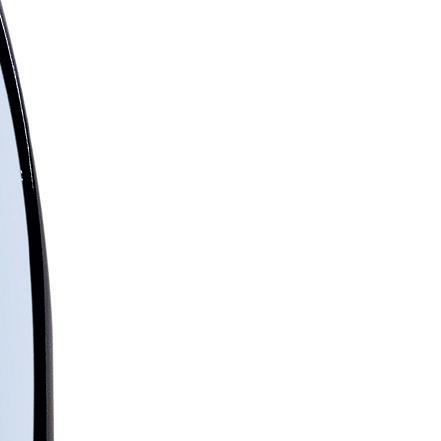
£35.00 www.gusbourne.com



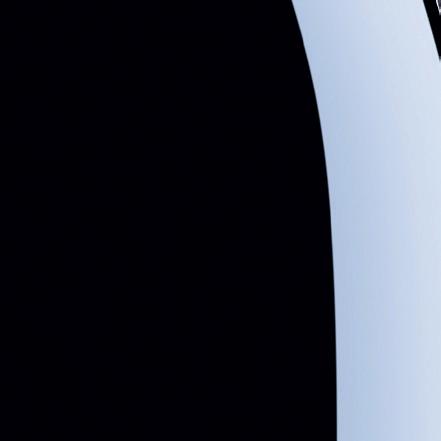


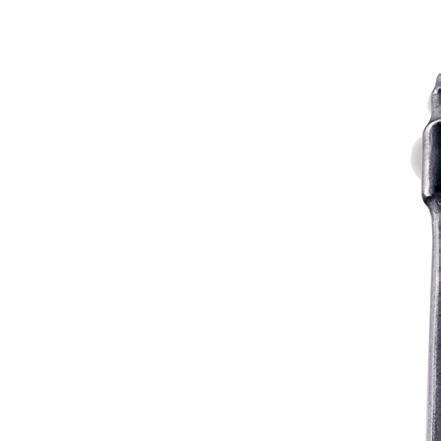
www.fortnumandmason.com











£40.60 www.hedonism.co.uk
I have reviewed this wine’s 2014 and 2017 vintages in Vineyard, yet I believe this thrilling 2020 is in a different league.


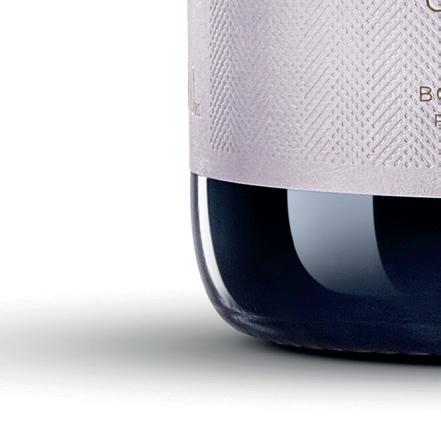
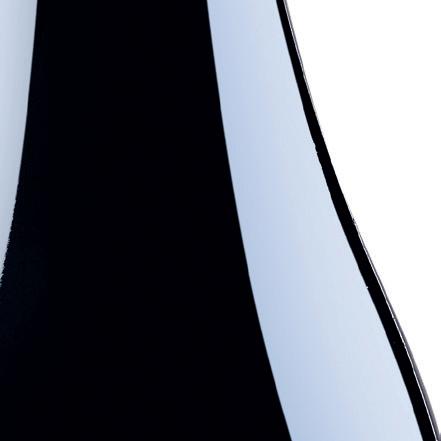
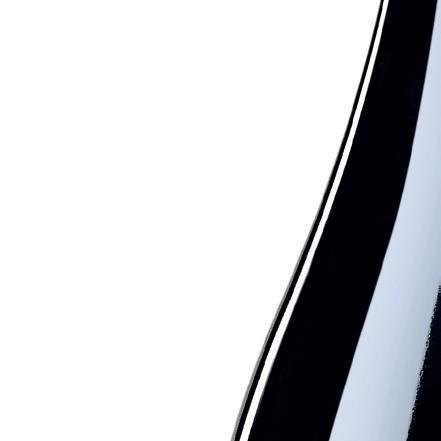
My wife, Amelia, also works in the wine business and has a particularly acute palate. She is rapier-sharp at assessing any wine in her glass, yet we both sat there silently spellbound when this wine was served.
As we all know, the Chardonnay game has moved briskly in the UK over the last few years. While some are playing a relatively robust oak card, which I find a little too brusque in many examples, Guinevere is the model of composure and elegance.


100% whole-bunch-pressed, with fermentation at cellar temperature in barriques followed by barrel ageing for 10 months in French oak, of which only 20% is new, is the not-so-secret recipe here. These tactics underpin the beautiful fruit perfectly while gently seasoning but never crowding the palate. The result is a wine that gives serious quality white Burgundy a real scare.
At £35, it squares up to decent Pouilly-Fuissé, notable Givry Blanc and Rully Blanc and famous label Viré-Clessé, among others, but I genuinely feel that this is a more balanced, complete and age-worthy wine than those French estates whose wines I have stalked for decades.
2022 Westwell, Ortega

I must admit that I was expecting a completely different shape of wine when I poured this into my glass. Westwell, to my mind, makes textural, layered, brocaded wines, particularly from the gorgeous Ortega variety. But, being a 2022, this wine has not had long enough to assemble these traits in its core.
By contrast, this is a breathless, raw, nervy wine with shivery acidity under a layer of delicate and demure exoticism. It shows a side to Ortega that I have never seen before. This grape usually loads a little heft into its delivery, and age and succulence help here, but 2022 Westwell Ortega is a flashing epée of a wine wielded by a true artist.
The chalky soils of the North Downs bring so much drama to this balletic creation it is amazing. I venture that legions of thirsty Brits will gulp this wine when the mercury rises this year and the flavours will be lodged in their memories for years to come. Like I said – when I was least expecting it…

27
£18.50 www.westwellwines.com
MAY 2023 | VINEYARD
A fine education
It is a fact that many reading this article will be well acquainted with courses at Plumpton College but like all things relating to wines and vines the wine division at Plumpton is determined to develop and grow. In vineyards the world over each year there is a concerted effort to implement new procedures, techniques and technology in an attempt to improve quality and in wineries the same can be said of the winemakers who each year seek to produce outstanding wines. It is an industry driven by self improvement and it is fitting that Plumpton College, the leading UK educational facility for wine is following this same model.
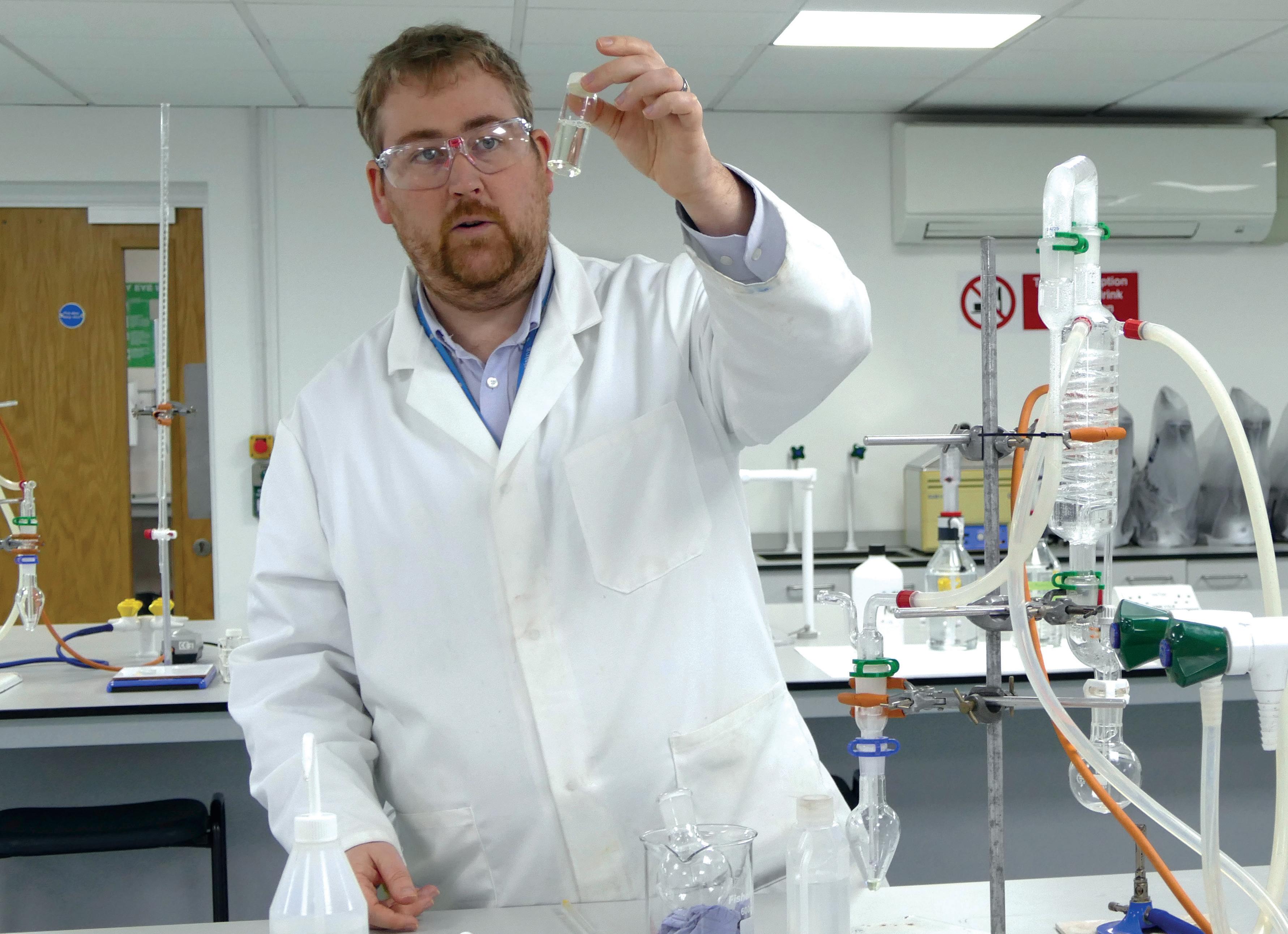
It is usually good to start a report at the beginning but in this instance, it was during a summary at the end of the visit that Dr Gregg Dunn Head of the Wine Division at Plumpton College put into words the way in which the wine division at Plumpton is developing. “This country produces about 12 million bottles of wine a year and will max out at about 40 million bottles,” explained Dr Dunn. To contextualise this figure Australia (not the largest
producer of wine in the world) makes 1.5 billion. The Australian wine industry only “supports 2.5 wine schools,” so it is important to train people from overseas and also train people not just for the UK industry but the international industry. “Plumpton is an internationally recognised provider of education and training in viticulture, oenology and wine business,” that is the vision of the college explained by Dr Dunn.
Plumpton offers students a unique opportunity. Not only do students have the ability to accumulate knowledge of both the vineyard and the science of winemaking mixing theory and practical but Plumpton is the only teaching college in the world that also has a commercial winery onsite. A unique aspect to the education offered at Plumpton was mentioned by Dr Dunn “The courses are offered in English in an English speaking country,” which gives international students the ability to learn or improve their English language skills at the same time as developing their knowledge of their chosen subject. Proximity to old world wine areas is also a positive for the college and details of student visits to Europe are

28 Rebecca Fa er Ed i t o r
Plumpton College invited a group of journalists to a behind the scenes look at life as a student providing, as it were, a glance through the window at the many opportunities on offer to those wishing to become absorbed in the world of wine.
EDITOR'S VISIT
often covered in Vineyard magazine. A trip to Vinitech in Bordeaux being featured in the January 2023 edition. It was a recurring theme throughout the visit to Plumpton that there are major benefits for the students through the proximity to London that the college enjoys. Not only does this provide students with the ability to attend the many trade tastings that happen throughout the year but there are other benefits too. The historical significance of London as an international centre of the wine trade dates back many centuries with The Vintners’ Company first Royal Charter dating to 1363. Dr Dunn also pointed to London as the origin of the Institute of Masters of Wine. From the perspective of wine production England and Wales are considered new areas and according to recently published figures by WineGB the number of hectares under vine has increased 70% in the years 2017-2021 however this relative youth in terms of production has happened in tandem with a long connection to the trade itself.
This complex relationship and the diversity surrounding wine is reflected in the varied courses offered by the Wine Division at Plumpton which cater to many aspects of the industry ensuring a fresh influx of skills with each new year. Currently there are 130 Higher Education students across three main courses at Plumpton. Students applying for the MSc in Viticulture and Oenology are required to have a background in science but are not necessarily required to have taken the BSc course that is offered at Plumpton.

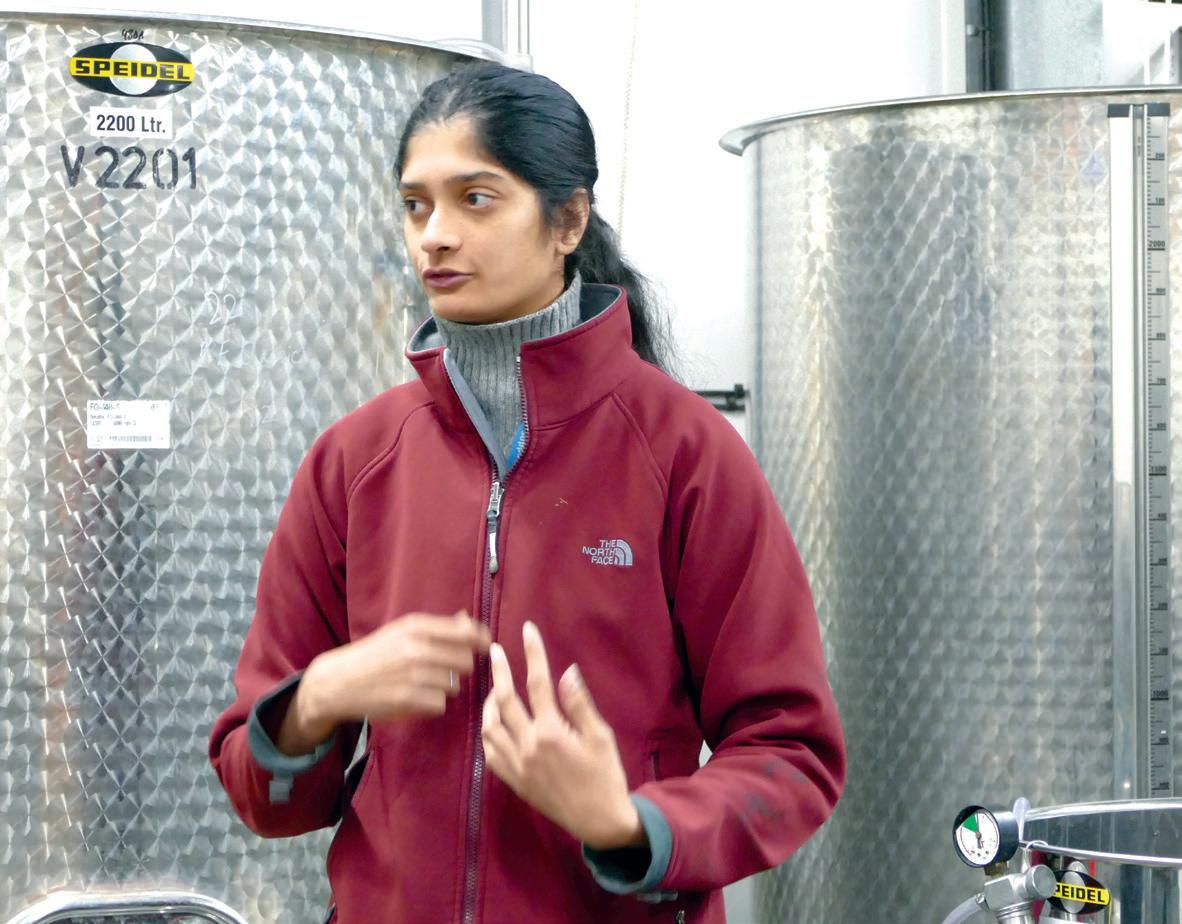

In the laboratory, James Clapham Laboratory Manager had set up a basic experiment to highlight how the amount of SO2 in a wine is measured. Since SO2 is fundamental to protect wine from spoilage it is a highly valuable tool for the winemaker but James explained that “SO2 sits differently for each wine” so understanding the chemistry is a fundamental element of the final wine. “The BSc degree offers deep understanding <<


29
James Clapham
Paul Harley
Deepika Koushik
Dr Akshay Baboo
<< of how wine making actually works,” said James. This knowledge allows students “the possibility of trying something new or having the ability to fix problems should they arise,” he continued. It is clear from the simple lesson James had prepared for the journalists present that he enjoys his teaching job. “Most people who teach to degree level have their own area of interest,” James explained and he is currently working towards his PhD thus continuing to prove that this is an industry striving for improvement at all levels.
Outside of the laboratory, teaching also takes place in a classroom with custom designed individual booths with taps and sinks. Each of these booths are sponsored by various industry players including retailers such as Waitrose and the Co-operative along with wine associations from around the globe. Joining a lecture by Dr Akshay Baboo afforded a brief look into the principles that will enhance the students’ lifelong knowledge. “Think about your grapes year on year,” said Dr Baboo.
Although he is the programme manager and lecturer for the BSc Dr Akshay Baboo also spent six years as a winemaker. “First and foremost I am a winemaker and I don’t want to add things I don’t need to,” he told his students; yet another reminder of the rounded education that is available to students at Plumpton Wine Division.
During the first year of the BSc in Viticulture and Oenology, students spend one day a week in the vineyard. There are two parcels of vines at Plumpton. Students experience the whole cycle of the vineyard and are provided with hands on experience working with different clones and also different training methods such as Cordon training on Pinot Noir. Spraying, pruning and tying down are all part of the students work in the vineyard and working in pairs they are allocated a certain number of rows to oversee. The 1.6 hectares of vines are still run as a commercial vineyard and so when it comes to harvest students are paid to come in and help gather the grapes. Tom Newham is the Vineyard Instructor and he spoke alongside some of the vineyard students about the benefits of studying the BSc at Plumpton. It is necessary for students wishing to work internationally to be trained to degree level but alongside the obvious gaining of knowledge and a qualification it became clear that students at Plumpton learn from each other with some of those on the course already having significant experience including being part of multiple vintages. Alongside this peer transfer of knowledge, studying at Plumpton is an excellent way to connect with others in the industry.

The BSc is not the only route for people to train for a career in viticulture. Charles Negus, the Viticulture Apprenticeships Programme Manager explained that the apprenticeship offers the opportunity for career progression. There is the opportunity to achieve “hands on training that is not necessarily available in a commercial setting,” said Charles. This could be because there is not enough time in a commercial setting and the apprenticeship scheme allows people to upskill. At 26 years of age Charles has often found himself to be the youngest person in the classroom as the age demographic for the apprenticeship is generally anyone aged between 17-50. He is quick to declare that he has found “British agricultural workers to be motivated and quick,” and the

30
For independent advice on: Interpretation of soil and tissue Formulation of nutrient programmes Supply of tailor-made products General agronomic advice john.buchan@btinternet.com 01630 639875 07713 632347 1a. Garden City Tem Hill Market Drayton Shropshire TF9 3QB John
AGRONOMY LTD Vinenutrition: The balancing act For independent advice on: Interpretation of soil and tissue Formulation of nutrient programmes Supply of tailor-made products General agronomic advice john.buchan@btinternet.com 01630 639875 07713 632347 1a. Garden City Tem Hill Market Drayton Shropshire TF9 3QB John Buchan AGRONOMY LTD Vinenutrition: The balancing act MAY 2023 | VINEYARD
Buchan
retention rate for the apprenticeship is a remarkable 95%.




















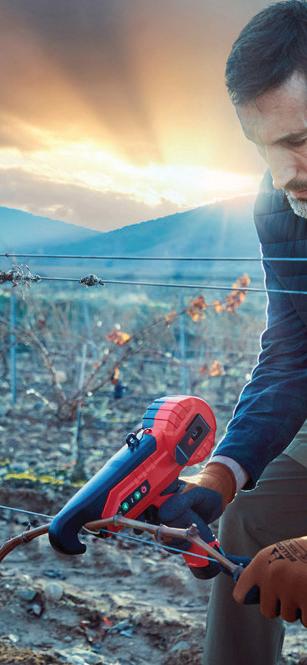


During the day we met students with different objectives, some were studying in order to improve their own vineyard whilst others were expanding their options having already achieved a high level of knowledge through working many vintages in big commercial operations. Students from a range of different countries including Sweden, Latvia and Denmark work together in these cool climate vineyards and will disperse all over the world taking different ideas with them but it seems to be that the connections that are made between students at Plumpton last, in some cases, for a lifetime. Plumpton alumni in the wine industry automatically have a point of reference even if they now work in different countries or even on different continents.
Tom Newham spoke about the varieties that are planted at Plumpton including the slightly unusual Acalon, a Red Vitis Vinifera grape, but it was interesting to note that there is a student led idea of planting more PIWI varieties.


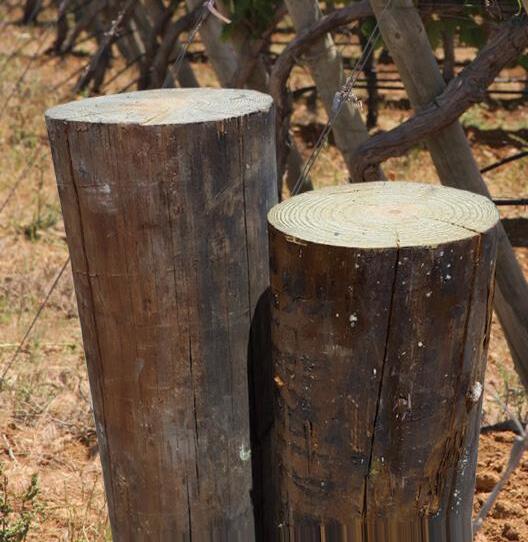


What really shone through at Plumpton was the students influence over their own learning experience. This continues in the winery, where Deepika Koushik is the winemaker. As an example, a sweet Ortega wine was suggested by the students and presented as an idea. That wine is now part of the library of wines that Plumpton have produced. There is also a sparkling red that is part of this library. “The second-year students are required to spend a minimum of three hours a week in the winery,” explained Deepika. Bottling is an example of how the students are prepared for various situations they may face. “Sometimes we bottle in house and sometimes we use a bottling truck,” Deepika said. Students get to experience the thousands of bottles per hour but also the “600 bottles a day” from very small-scale in-house bottling from cork and screw cap through to labelling and boxing, Plumpton students get to experience the whole production process.
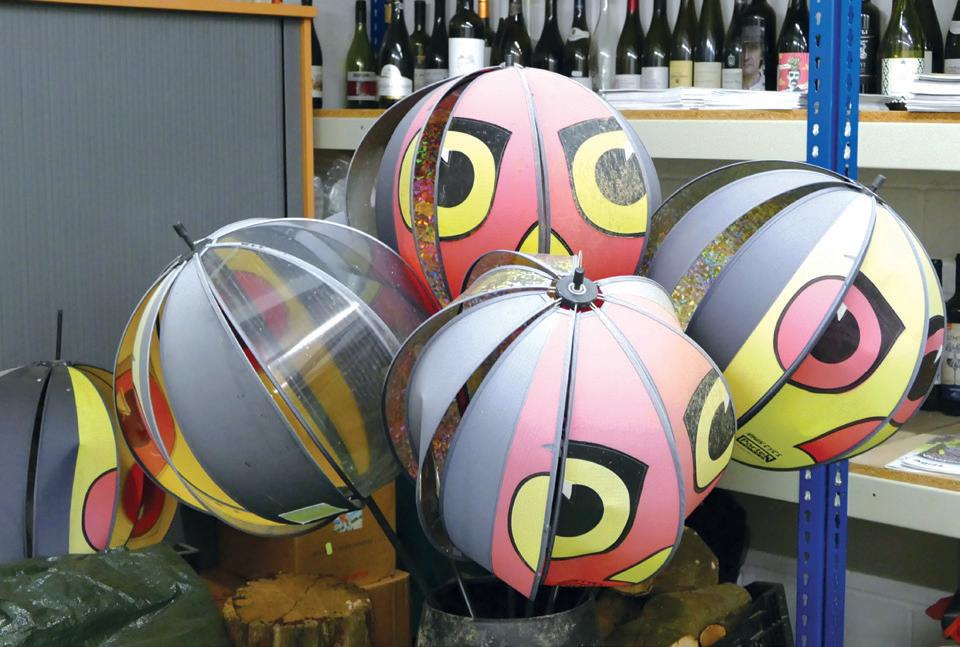
Around 15,000 bottles a year are made at Plumpton. Some of that is done for other small-scale producers but “over 60% of what we produce is sparkling wine” Deepika added. “We do hand riddling and also use a gyropalette which is faster than the hand riddling but something that always happens is that when we get a bottle out and show it to the students, we say don’t turn it up the other way and yet the first thing they do is turn it up the other way, it always happens!” Deepika said smiling. According to Dr Dunn: “Staff speak eight or nine languages” and dosage trials are done with both the students and the staff which is a good example of the inclusive nature of Plumpton.
Winemaking, its history and future are part of the fabric of the college creating an absorbing atmosphere. Hidden gems relating to all things wine are dotted around campus. HARVESTING HARVESTING TUNNEL&SHELTER SUPPORTING & PROTECTING UK VINEYARDS Carmo Posts www.agricareuk.com sales@agricareuk.com 01304 842280 Cooting Road, Aylesham Industrial Estate, Canterbury, Kent CT3 3EP

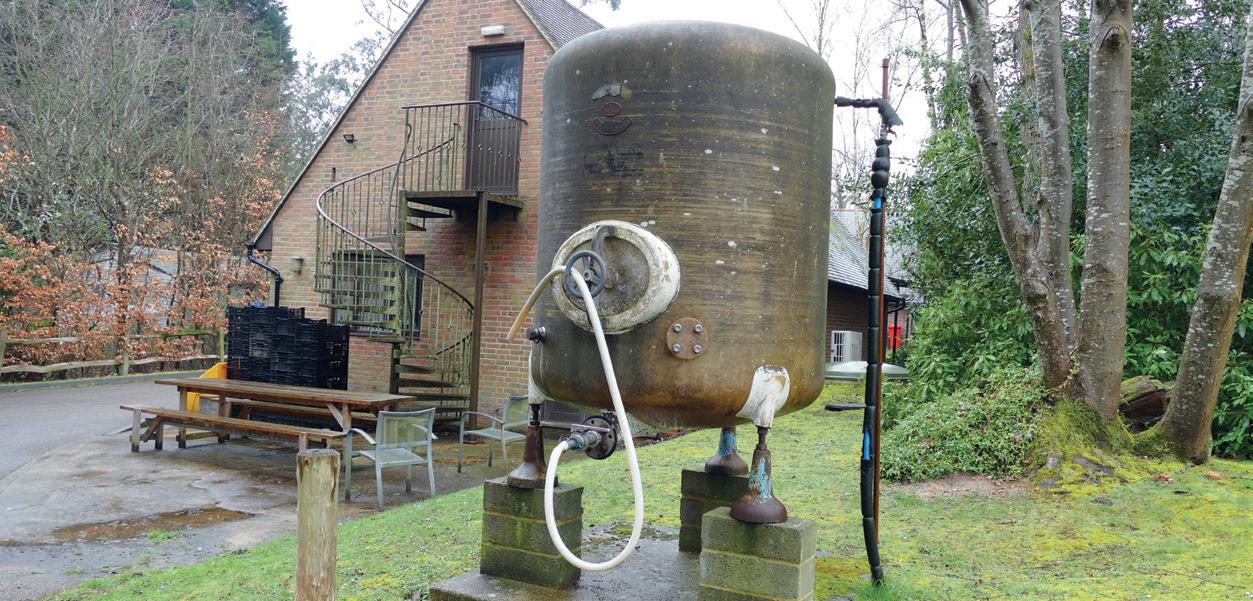
31
Alongside the BSc Plumpton also offer a foundation degree and a BA International Wine Business degree. These students are able to present ideas for the development of the labels for the still wines. This again shows how the Wine Division whilst having many elements is not divided but is instead a cohesive whole. Paul Harley is the programme manager for BA International Wine Business. The course trains students who then travel around the world in diverse jobs from brand ambassadors to journalists and everything in between. The course covers an array of topics including wine tourism, gender empowerment and industry innovations along with social responsibility including << PLANTING&GROWING PLANTING&GROWING PLANTING&GROWING TUNNEL&SHELTER TUNNEL&SHELTER PRUNING&FRUITTOOLS HARVESTING TUNNEL&SHELTER PRUNING&FRUITTOOLS
Thomas Bailey
prohibition, alcoholics anonymous and schemes such as drink aware. From a visit to the classroom and eavesdropping on a lesson in wine tourism there is a clear level of engagement with the students demonstrating a high amount of course preparation and pre-reading.
The focus of Thomas Bailey's study is the Solaris grape. Thomas has been working with the Swedish Sparkling Wine Association (SSWA). Describing the project details, Thomas said:

“They were using a consultant from Champagne and wanted some research on Solaris and the consultant suggested Plumpton since the UK is cool climate viticulture with a focus on sparkling wine.
“In Sweden they have really bought into Solaris. Firstly they want to reduce their reliance on sprays and secondly it is a variety that works. Wines using the SSWA logo on the bottle must be at least 80% Solaris. The primary reason that solaris works in a cool climate is that it is very resistant to downy mildew and pretty resistant to powdery mildew. The crossing processing for Solaris includes Vitis aumerensis which is a cold tolerant variety so the growing season is much shorter. It can get pretty ripe even in a short growing season.
“Everyone in the second year of the course is required to put together a project proposal for their third year but for me that was also an actual proposal to an organisation. There are five vineyards in the project, two right in the south, one on the west coast, one on the east coast, and one a bit further north towards Stockholm.
“The project looks at flavour compounds and how that relates to ripeness and how that relates to the different regions within Sweden. The flavour compounds that we chose were Thiols. Thiols are the compounds responsible
for tropical flavours but also some other fruit flavours. Using sugar as an indicator of ripeness the project looked at if there is a link between the development of sugar and the development of Thiols.
“Some of the early findings are that sugar and Thiols in Solaris grapes in Sweden do not really have a correlation. This is useful because what it highlights is that leaving grapes for longer may not be the best solution.
“We also found that based on the groupings of the vineyards and their geographical location there is a significant difference between vineyards. In some of the northern vineyards where they have less thiols generally there will be more citrus and lime flavours whereas the vineyards further south have peach, nectarine, pineapple led flavours.
“Before I arrived at Plumpton I worked in Bergerac at a family run estate and that was generally sunny and then in the UK I was walking over frosted ground and pruning.”
“Sparkling wine is an area of specific interest to me because of the unique challenges it poses; the parameters in the vineyard and the processes in the winery for sparkling wine are very different.
“I had a really good time working with the vineyards in Sweden but I also have quite a lot of passion for what the sparkling wine industry in the UK is doing. I think that both Sweden and the UK have a lot of potential. Going forward there is a lot to be learnt and there is the potential to have a good role in that.”
Plumpton Wine Division is both remarkable and unique. So many working in the UK wine industry have studied at Plumpton but with all that the Wine Division has already achieved Dr Dunn explained that there are more plans for the future. One new development is the National Schools Development Programme. There will be development workshops in every region in the country and this year the focus will be on “spray application such as calibration, alternative chemistry and good canopy penetration,” explained Dr Dunn. “We think this will have a major impact because one of the things that lets the industry down is the variable management of diseases across vineyards,” he added. In the laboratory there is now the ability to use High Performance Liquid Chromatography which measures phenolic compounds and James Clapham is working towards techniques for measuring volatile compounds as well. There is the Polymerase Chain Reaction device that amplifies DNA, allowing many possibilities including projects on indigenous yeast. In the vineyard there will be a state of the art under vine cultivator coming soon and plans for the winery will mean it will look a little different in the future. “There will be a rebuild which will include standardised tanks on two levels,” he continued.
In conclusion Dr Dunn used the phrase: “Plumpton students are united by wine obsession.” A sentiment that seems to travel across many continents and will endure for vintage after vintage.

32
Thomas Bailey, a third year student at Plumpton spoke to Vineyard magazine about his research.
<<
MAY 2023 | VINEYARD EDITOR'S VISIT
Dona Frost, WineSkills Programme Manager and Dr Greg Dunn, Head of the Wine Division at Plumpton College








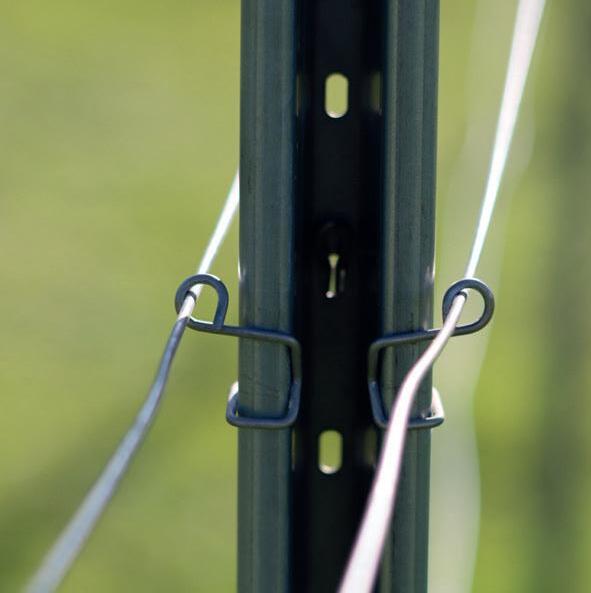
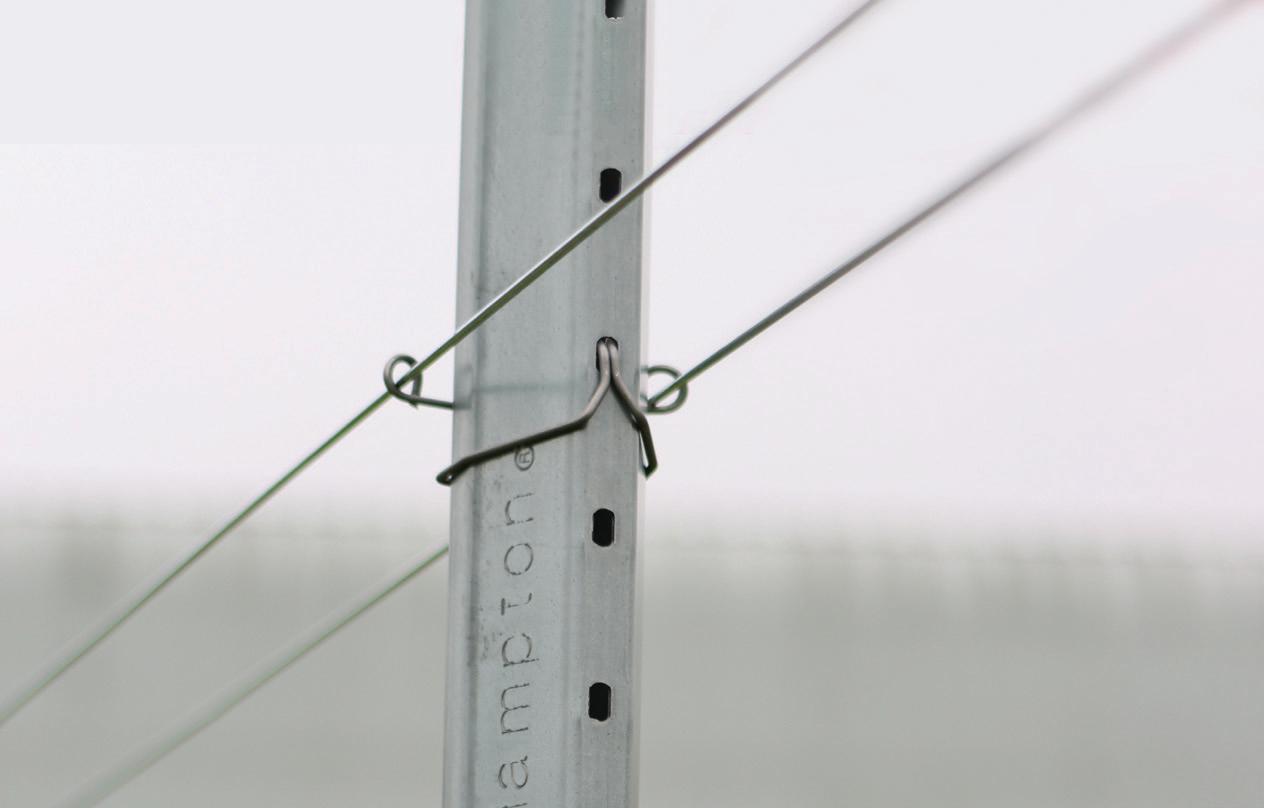
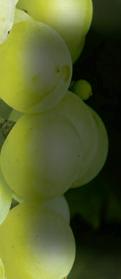

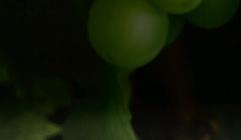






















33 RELIABLE CLOSURES THAT HELP SEAL, PROTECT AND ADD VALUE TO BRANDS Quality Stoppers and Closures Since 1774 +44 (0)1844 203100 sales@rankincork.co.uk rankincork.co.uk CROWN CAPS SPARKLINGWINECORKS TIN &POLYLAMCAPSULES HEATSHRINKCAPSULES FOILS STILLWINECORKS WIRE HOODS ALL POSTS GUARANTEED UK MANUFACTURER VINE TRELLIS AND PERIMETER SOLUTIONS FOR VINEYARDS VINE TRELLIS SYSTEM ™ +44 (0) 1933 234070 | sales@hamptonsteel.co.uk | www.hamptonsteel.co.uk VINELOK™- STRONG, DURABLE AND SIMPLE TO INSTALL Hampton Steel are proud to introduce the Vinelok™ vine trellis system which combines the strength and versatility of Hampton’s own patented and award winning Versalok® post covered by Hampton Steel’s 30 year guarantee with Hampton’s new Vinelok™ clip. Together these offer the vineyard professional a system which is easy to use, move and reuse. MAY 2023 | VINEYARD
Sustainable strategies for keeping crops clean
The EU ban on mancozeb in 2021 marked another milestone in the drive to find more sustainable ways of managing disease in grapevines. Hutchinsons agronomists Rob Saunders and Chris Cooper look at a few early season options.


Protecting the fresh growth that bursts into life during April and May, is vital for ensuring diseases such as Phomopsis and downy mildew do not get an early foothold in vines.
Historically, two or three well-timed applications of mancozeb were often sufficient, however the focus is now on developing sustainable strategies that integrate chemical and cultural methods, plus other options that enhance natural plant defence mechanisms. Being proactive with a ‘little and often’ approach, rather than reactive with fungicides, is very much the way forward.
Manage canopies for Phomopsis
For Phomopsis control, ensuring good air movement around canopy, bunches and crown, can be very effective at reducing disease risk, while also helping to manage other diseases, such as powdery mildew, or Botrytis later in the season.
Avoiding excessive canopy growth is therefore crucial, and requires careful nitrogen management. Vines do not require large amounts of nitrogen, but it is an important nutrient for building strong canopies, especially when growth is rapid during the spring.
Tissue testing around flowering will be useful for determining crop requirements, and where additional nitrogen is needed, slow release foliar fertilisers can provide a useful top-up to a solid base level of soil nutrition, although should not be applied during flowering or grape set.
While soil-applied fertiliser remains important for building canopy, root uptake is inherently more reliant on moisture, potentially causing sudden spikes in availability, and resulting in surges of canopy growth.
Foliar fertilisers offer more predictable, efficient, plant uptake, and may be particularly useful for keeping vines going when soils are very dry. Indeed, if conditions turn dry again this season, they may be beneficial in any newly planted sites that struggled to get roots established in the very dry conditions witnessed last year, although growers cannot rely on foliar fertilisers alone for building large amounts of extension growth.
Many different foliar nitrogen fertilisers are available, including a new product called R-Leaf. It is made up of photocatalyst particles that remain on the leaf surface and convert atmospheric nitrogen oxide (NOx) pollutants, namely nitrous oxide, nitric oxide and nitrogen dioxide, into a nitrate form that can be taken up by the plant.
The green credentials sound promising, especially for growers looking
to reduce their carbon footprint, however as a new product to the market, we need to see its performance in UK conditions before drawing firm conclusions.
Another useful option for Phomopsis and powdery mildew control is the milled sulphur product, Thiopron. A single application at woolly bud stage, also offers some protection against Erinose mite, but in high-risk crops, such as where high levels of mite were seen the previous year, two applications may be needed; one at early woolly bud and another at late woolly bud.
Mancozeb was one of just two active ingredients approved for Phomopsis control in grape vines, the other being kresoxim-methyl. The latter still has some activity against Phomopsis, although its greatest strength is against powdery mildew.
Downy mildew options
While good canopy management, strict vineyard hygiene, and other cultural techniques will help manage downy mildew risk, unlike Phomopsis, it can be more challenging to control with such methods alone.
A useful supporting measure is the targeted application of nutritional products that fortify the plant’s natural defence mechanisms, such as Procrop ISR, giving vines greater resilience to disease infection.
Such biostimulants are purely a protectant strategy though, so programmes need to start early in the season once there is sufficient green leaf area for uptake, and while disease risk is still low, with no visible signs of infection.
It is worth monitoring conditions to identify when downy mildew risk is likely to increase, using the 10-10-24 rule as a guide; 10mm of rain during a period when temperature is more than 10°C for 24 hours.
Once disease risk increases, it can be worth applying a good quality phosphite (e.g. Phorce) to further improve the robustness of plants to infection. Phosphites have been shown to stimulate production of antimicrobial compounds (phytoalexins), thereby enhancing the vine’s natural disease defence mechanism.
Deploying stimulants to promote resistance to disease is useful, but during severe disease pressure, or at sensitive growth stages like flowering, there is no substitute for fungicides based on actives such as metalaxyl-M, amisulbrom, ametoctradin + dimethomorph, cymoxanil or copper.
34 DESKTOP www.hlhltd.co.uk ENVELOPE information@hlhltd.co.uk phone-alt 01945 461177
RobS
MAY 2023 | VINEYARD AGRONOMY DIARY



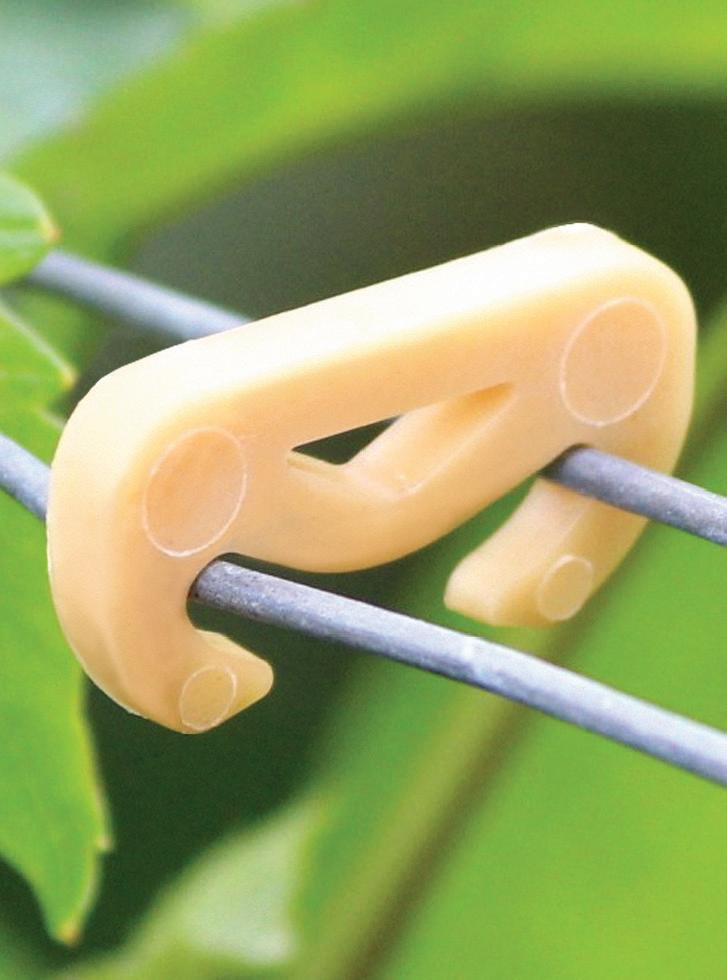
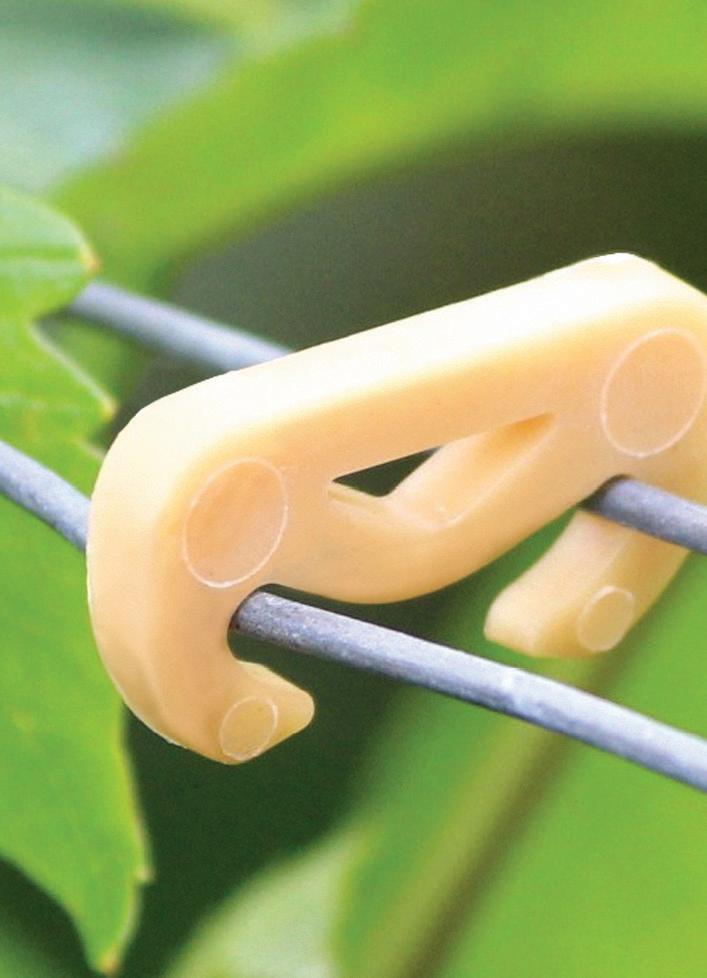




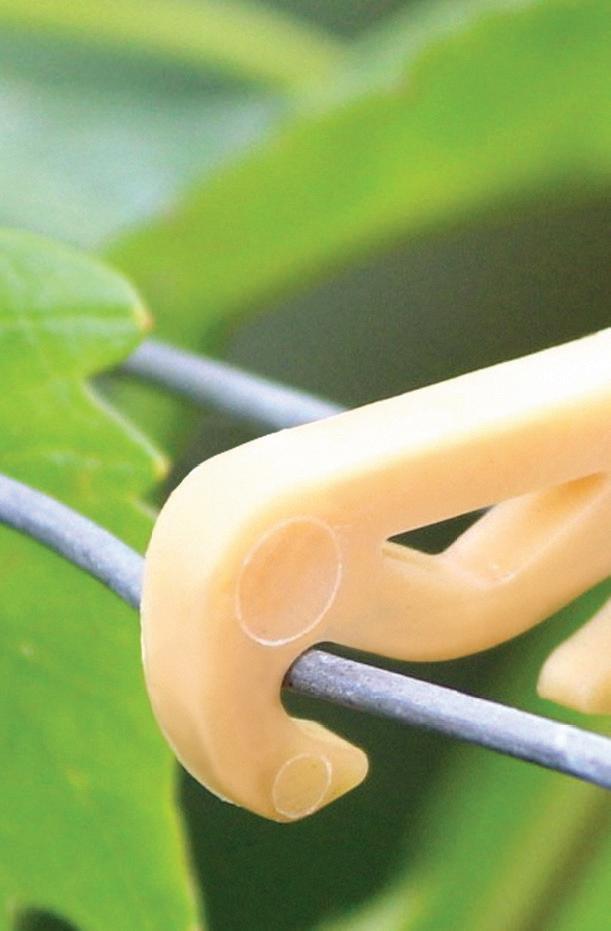

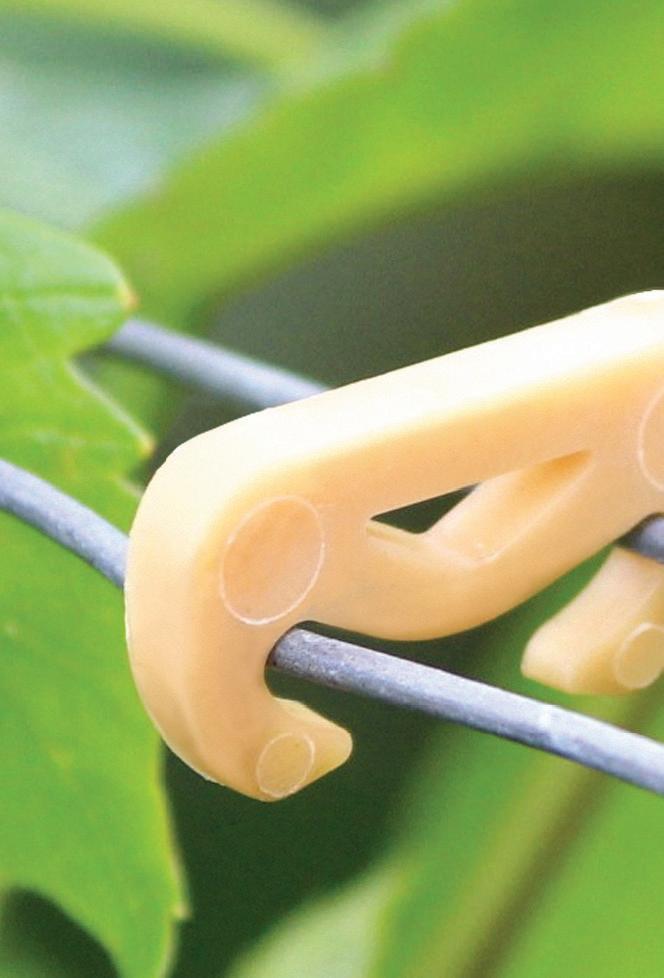
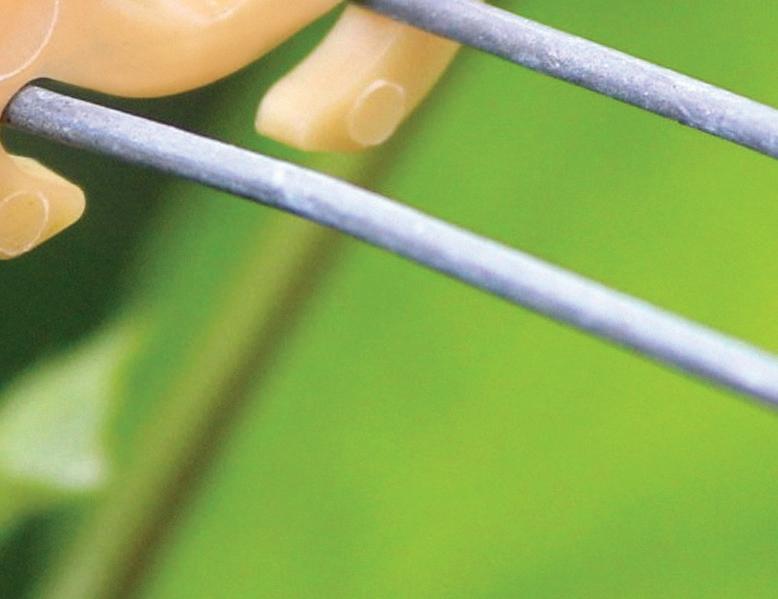






35
Resistant is only half true
As I spend much of my time working outside of the UK, quite a lot of my contact with people there comes to me in the form of letters.
I recently received a letter from a friend in which lay a comment..."Some people hear 'fungal resistant' and think that means all they need to do is plant the vine, prune it and then collect the fruit at harvest..."
This got me thinking as I felt a bit uncomfortable with this, and perhaps I might be able to offer some insight around this matter to help people gain a broader understanding around the subject.
'Resistant' as applied to some vines of fairly recent crossings, is best to be considered as only being half true.
Whilst a recently released new variety might very well hold a mix of genetic information from its diverse parentage offering a form of resistance, this does not always last forever.
Consider that this resistance could be termed as a 'barrier' within the vine, and this inhibits the actions of an attacking mildew, please be aware that this 'barrier' is fixed in place. As such it cannot vary or change.
Botrytis cinerea
We are familiar with how our own complex bodies build forms of 'anti-bodies' resulting from infections, or inoculations. These can greatly assist in resisting future waves of infection that move through our population. Certainly we are more aware of matters around this after the years of Covid-19.
The vine with but a 'fixed barrier', (my words,) is thus compromised in its ability to fend off new variants of mildew.
As the mildew reproduces, (which it does with many new generations every few years,) there is a very real possibility that a mutation might be created.
Supposing that this mutation allows it to break through a resistant vines defences... very quickly that new mildew will multiply, and soon it will infect all such vines that it encounters unless they have been adequately covered in a fungicide spray.
I am aware that this sounds like an absurd situation, the resistant vine that is not resistant but the fact is that the vine is resistant up to the time when a stronger mildew arrives in the vineyard.
Mutations in new populations of mildew are inevitable, at some time, however you might get lucky and get away with offering no protecting chemical cover, and for some years, but not forever.
It is for this reason that it is often advised that recently released resistant vines are given strategically timed sprays, say first leaf, 80% flowering, and just prior to bunch closure. This is normally considerably less spraying than with V. vinifera, certainly in warmer European areas and in risky regions of periodic heavy thunderstorms, but it can be enough.
The truth of the matter now, is that many such older, and supposed resistant varieties, are simply past their resistant life.
They might very well have other attractive attributes, a good crop, early ripening etc, and for this they can still be grown to good advantage. Here it helps to spray in future years of growth much the same as for a V. vinifera variety.
There are some varieties that whilst being older do yet carry on with some robust resistance. This might be more apparent for particular varieties, and in particular regions.
I believe strongly in being ever vigilant always looking for early signs of infection no matter what variety you are growing.
This 'scouting' or seeking out early days of infection can be very important, I sometimes feel people neglect to show enough effort to doing these searching vineyard walks, (around sundown/evenings are often the best times for leaf observations.)
Botrytis operates a little differently, and for which there is no resistance as such, by some internal barrier type mechanism.
There are many things that breeders look out for whilst running field trials for new varieties. For grape clusters, much of the forms better equipped to fend away Botrytis simply hold a few physical benefits.
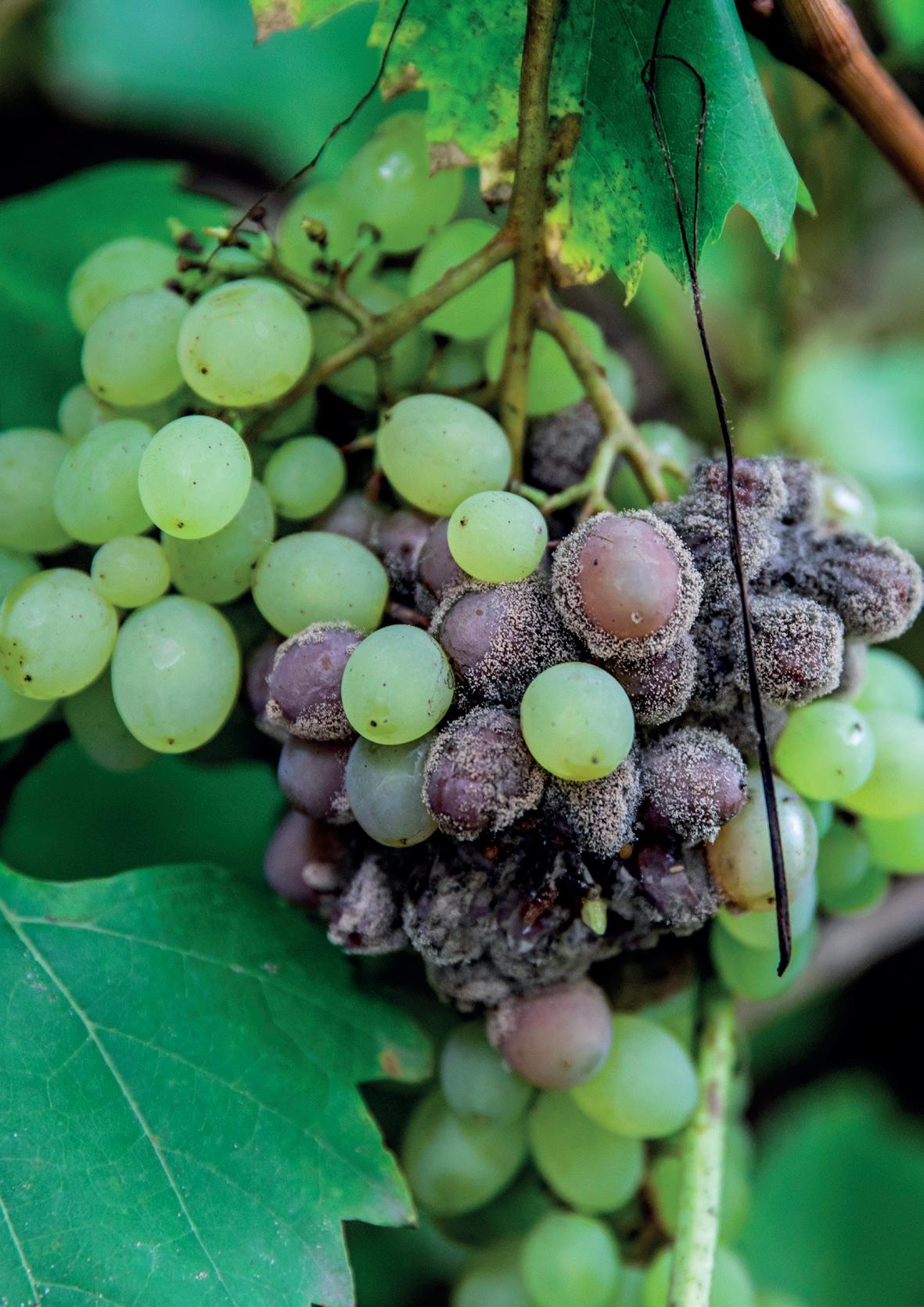
36
A VITICULTURIST'S DIARY
Some people hear 'fungal resistant' and think that means all they need to do is plant the vine, prune it and then collect the fruit at harvest.
Sam Doncaster works for Volker and Marion Freytag, of Rebschule Freytag, Lachen-Speyerdorf, Neustadt an der Weinstrasse, Pfalz ENVELOPE samdoncaster@hotmail.com
MAY 2023 | VINEYARD
Loose cluster, where I include ventilation between the individual berries, but also a canopy in which heavy clusters do not lie directly over another lower cluster (often trapping a leaf in between.)
Individual berries with a thicker skin perhaps, or maybe a better coating, a form of a waxy layer over the berries skin.
Looser clustered varieties in some regions appear to not harbour so many damaging or detrimental insects within the mass of rather protective little floret or berry stalks. This being compared to other types of a more tight, cylindrical nature. Some of these cylindrical types can also 'self pull off' individual berries as they all swell up at veraison, and thus leave an open wound in berries on some clusters and from which infections arise.
Where to from here? This is a question that is almost answered for us as breeders have been working on a series of 'next generation' vines.
The idea being to breed into a vine multiple layers of resistance, and also for each of the possible major forms of fungal resistance.
This is where the smart money is operating in modern breeding, where there are now many new varieties awaiting field trials, and micro vinifications, etc.
It is a complex matter, and after which the vines have to show that they produce acceptable wine, (or perhaps your interest is in table grapes, and why not?).
Fungal infections further south in the warmer climates can be explosive in the right conditions, as compared to the benign climate of cooler regions. However there are many truly capable resistances being successfully bred into new varieties, and with no GMO type toad genes being spliced into place here.
There are known multiple resistant vines being bred which are then
crossed with more tasty varieties, and out of which their offspring can be tested by genetic marking.
If the offspring carry many 'layers' or barriers from which it is considered extremely unlikely for infection to find a way through, then these vines are a truer long term prospect to be resistant, and are given field trials.
An interesting aspect that arises from some of this work, stemming from the nature of some of these complex genetic influences, is that occasionally it is found that a vine is unusually early ripening. It is these vines that are of particular interest me.
Whilst much of the above might sound a little odd to people who do not move in the circles of new vine developments, there is a lot more to aspects of modern viticulture than often gets talked about.
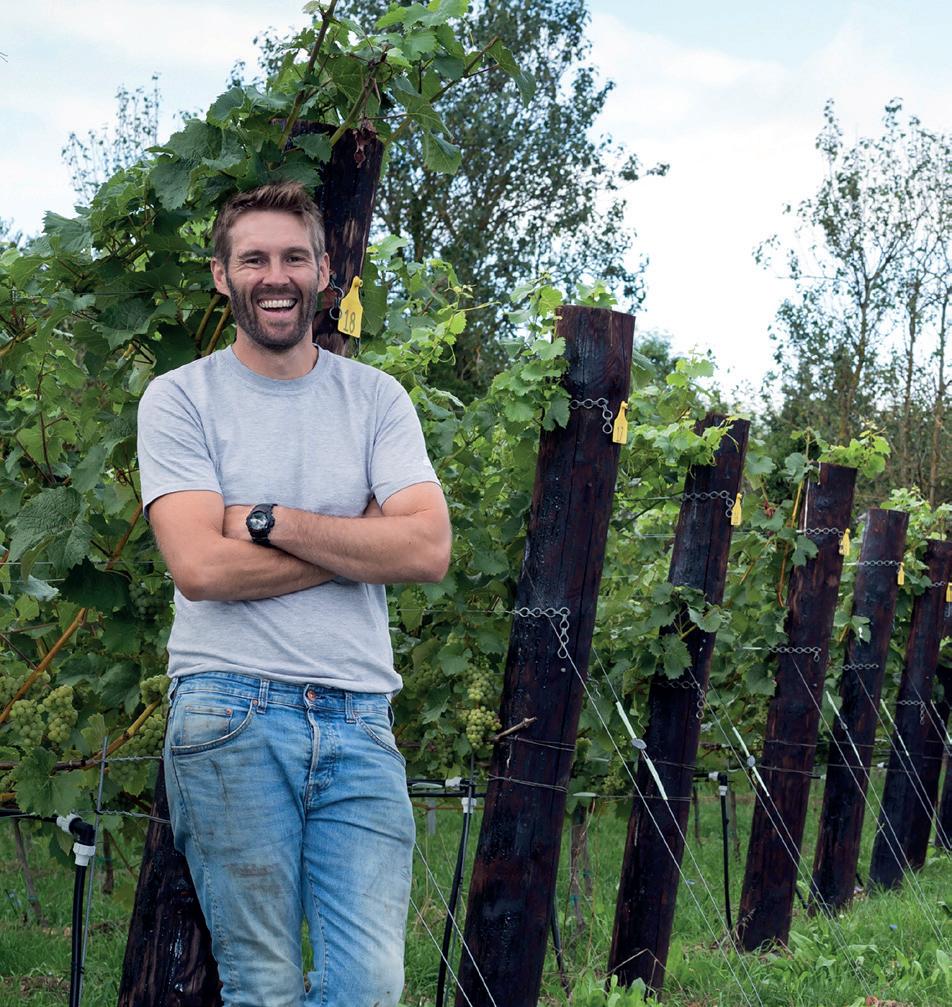
A bit strong to call this a time for a revolution, but it carries some of the most significant changes for the wine industry, since the introduction of phylloxera... and then rootstocks and grafting was learnt and put to use.
It all happens in a vine nursery, so much more dynamic than simple grape processing by wineries!
I'm pleased to conclude by letting you know that new varieties here in Germany, are now giving rise to new styles of wine being released, and sometimes it feels like it occurs weekly.
Yesterday I came across in a supermarket a Kloster Eberbach Muscaris/Hibernal, for just shy of 10 Euro (which is a good price here).
Big company, highly regarded, lots of bio credentials, a vast history as well as a great future, and with close to 500 acres.
New varieties that are not so dependant on chemical applications are here now, and are here to stay.
NEW VINEYARD ESTABLISHMENT
IN EAST ANGLIA & SOUTH EAST ENGLAND
• SITE SELECTION & SITE ASSESSMENT: Correct choice of site is vital in the UK’s northerly winegrowing climate.
• VINEYARD DESIGN: Design of your trellis system and density of plantation is offered as a standard part of our service.
• PRE-PLANTATION ADVICE: All advice and organisation of soil & site preparation works.
• GRAPEVINE SUPPLY: All vines sourced through one partner nursery, proven vine establishment over many years.
• VARIETIES, CLONES, ROOTSTOCKS: All combinations created to suit your vineyard site and target wine styles.
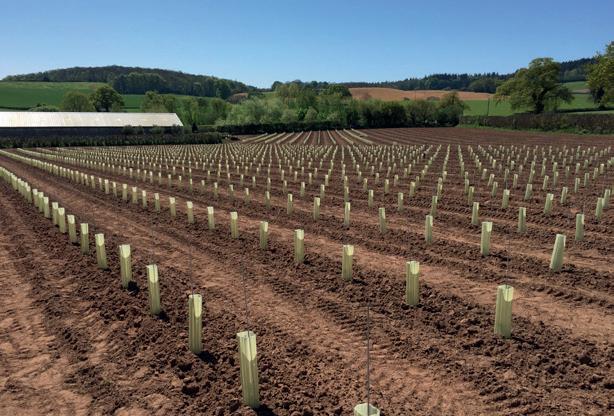
• PLANTING: Planted by GPS guided machine, accurate to within 8mm.
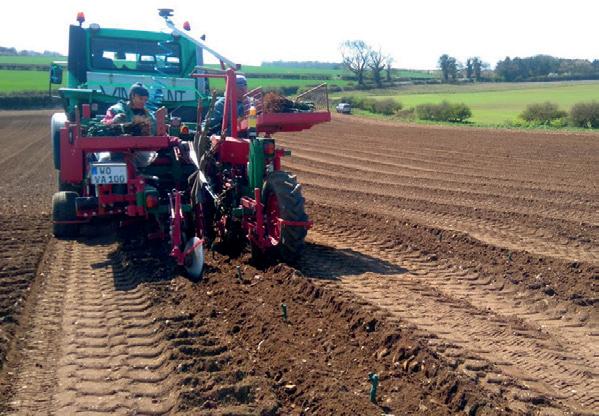
• TRELLIS MATERIALS: We supply everything, sourced direct from the factory to ensure lowest possible prices!
VINEYARD WILL BE IN THE GROUND FOR 40 YEARS. GET IT RIGHT FIRST TIME, WITH DUNCAN MCNEILL AND
WE HAVE 50 YEARS COMBINED EXPERIENCE IN VINEYARD MANAGEMENT. YOUR VINEYARD WILL BE IN THE GROUND FOR MANY YEARS. GET IT RIGHT FIRST TIME, WITH DUNCAN MCNEILL AND VOLKER SCHEU OF VINES DIRECT LTD.
CONTACT DUNCAN MCNEILL ON 07972 668370 OR EMAIL
37
CONTACT OR EMAIL • SITE SELECTION & SITE ASSESSMENT: in the UK’s northerly winegrowing climate. VINEYARD DESIGN: plantation is offered as a standard part of our service. PRE-PLANTATION ADVICE: preparation works. GRAPEVINE SUPPLY: Proven vine establishment over many years. • VARIETIES, CLONES, ROOTSTOCKS: your vineyard site and target wine styles. PLANTING: TRELLIS MATERIALS: factory to ensure lowest possible prices!
YOUR
NEW VINEYARD ESTABLISHMENT
VINES DIRECT LTD
EST. 2006 MAY 2023 | VINEYARD A VITICULTURIST'S DIARY
Good things in small packages
Micronutrients are vital to producing healthy vines and high-quality wine.
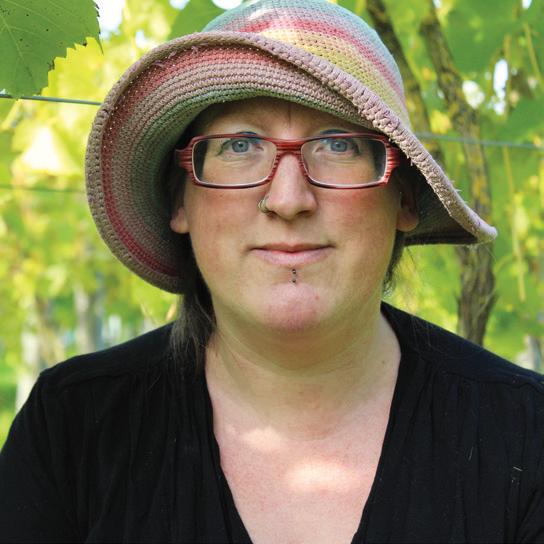
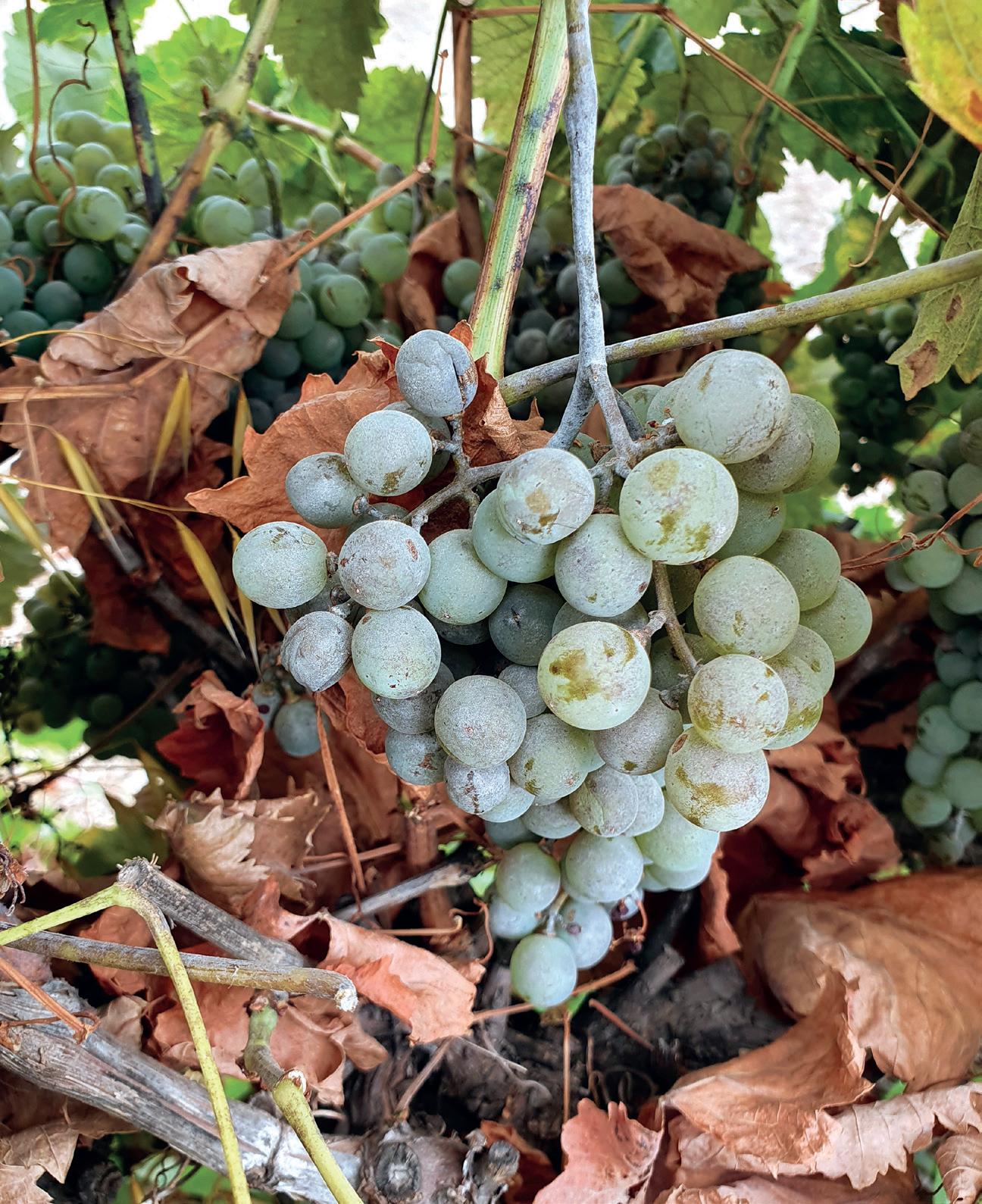
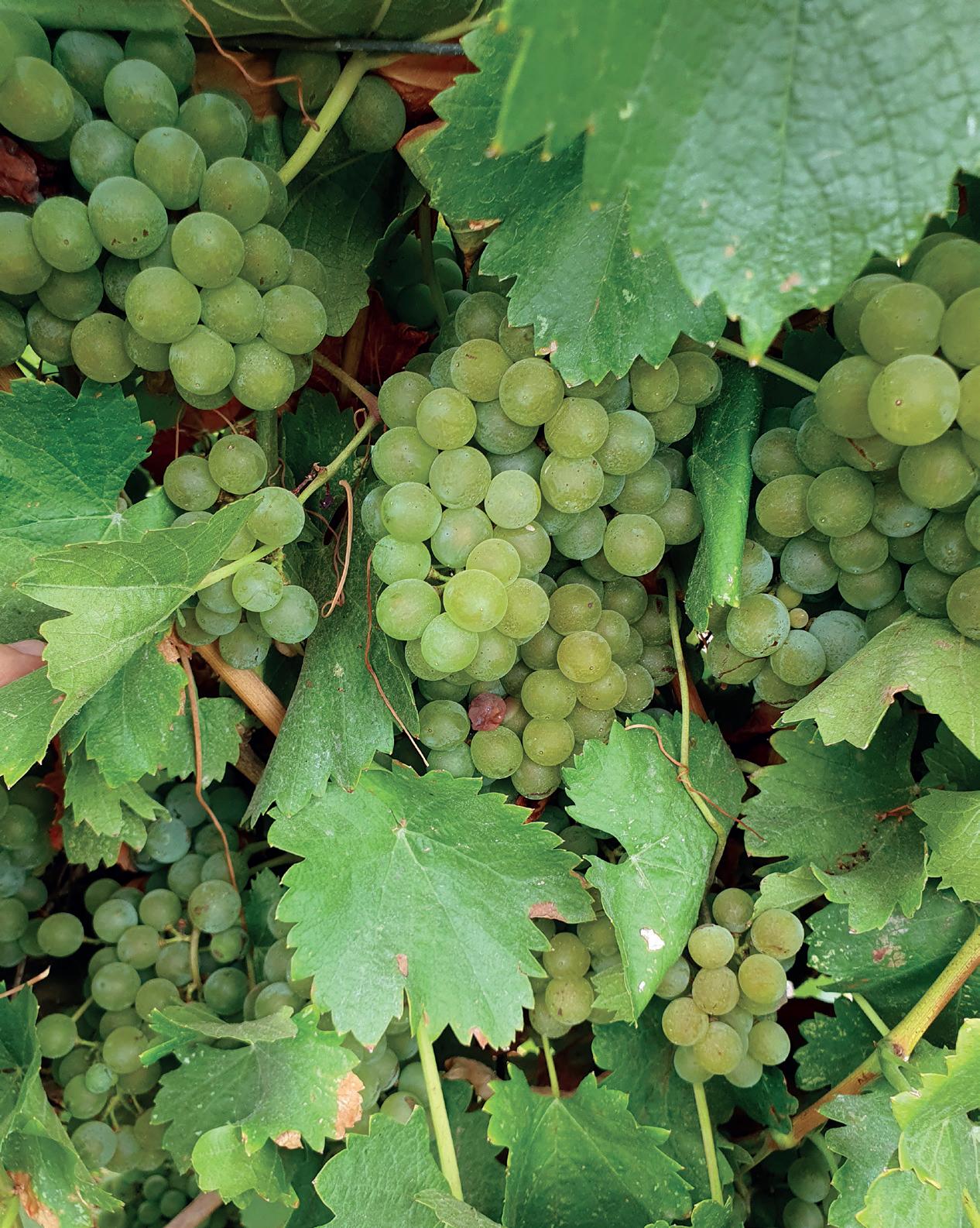
Managing the nutritional requirements of any vineyard is a complex business because a huge range of variables can have a considerable impact on what nutrition is available to the vines and what augmentation they might need to achieve their optimum output. Amongst other things, these factors will include soil type and pH, the depth of the top soil, which cultivars are being grown and their vigour and the availability of water.
Macronutrients like nitrogen, phosphorus and potassium may be used in the largest relative quantities by vines, but micronutrients like zinc, iron and manganese play a no less significant role in plant health. Deficiency in any of these elements can make vines more susceptible to disease, reduce growth and have a significant impact on the quality of the yield.
“As agronomy advisors, we would get leaf
samples sent off and analysed,” said Chris Cooper Fruit & Vine Specialist for Hutchinsons. “Then we’d recommend amending whatever is required to make sure that the vines are in their best health to photosynthesize and produce grapes. Any deficiencies will impact on the growth and vigour of the vines as they go through the season. Deficiencies will become more obvious as the pressure comes on with flower and grape set.”
Chris emphasised that there is no one size fits all approach when it comes to planning a micronutrient management strategy, and much of it requires a swift, reactive style as potential issues and deficiencies are identified.
“Like anything, micronutrients need sensible management and a sensible approach,” Chris said. “The best management strategy is to amend as required throughout the season. That
strategy should be scientifically based on leaf analysis or soil analysis. There is no magic bullet, it’s just doing things as they need to be done – perhaps spraying micronutrients mixed in with fungicide applications for example. It is a matter of ongoing management as there are times when micro and macronutrients become more or less important depending on the growth of the vines during the season.”
Understanding
Micronutrients
Studies have suggested that manganese, iron and zinc are the most important micronutrients for grapevine growth and fruit quality, but there is a huge variety of elements that come into play in keeping your plants and crop healthy. Each micronutrient plays a different role in plant processes. Here we look at some of the key elements in more detail:
38
Grape berries treated with mixtures of macro and micronutrients
ura H a d dnal
Grape berries severely infected with powdery mildew from untreated control treatment
MICRONUTRIENTS
◆ Zn: Zinc plays a significant role in vine physiology. It assists with the development of healthy green foliage, improves fruit set and is vital in the formation of auxins, which help with stem elongation and growth regulation.
– Symptoms of zinc deficiency include light green chlorosis on the interveinal areas of the leaf. The leaf blades may be smaller and asymmetrical – with one side of the leaf larger than the other. Grape bunches will be small with only a few set berries. In the most serious cases, leaves can exhibit necrotic spots and begin to roll in or die off.
– Zinc deficiency can be exacerbated by high-pH soils containing low levels of organic matter and an excess of phosphorus. Water-logged soils and restricted root growth can result in poor availability of zinc to the plant.
– Zinc fertilisers can be applied to the soil surface in the late winter or early spring.
◆ B: Boron improves flowering and fruit set, as well as helping to boost the ripening process and also has a positive effect on berry size and the sugar levels they contain.
– A boron deficiency is a serious matter, visible through small bunches with only a few set berries, most being shrivelled and seedless. It is known
as millerandage or, the disarmingly charming term ‘pumpkin and pea’. A lack of boron may also be visible through chlorosis around the outside of the leaf, which may turn to a red-brown colour before the leaves die off. The slow growth of shoots with short internodes, putting off large numbers of lateral shoots, may also give a visual clue
– A deficiency can be exacerbated by either highly acidic or alkaline soil. Sandy soils are also particularly prone as boron leaches very easily. High levels of nitrogen or calcium are also warning flags to watch out for.
– A foliar application of boron can take place two or three weeks before bloom.
◆ Mn: Manganese combats chlorosis, allowing the vine to develop healthy green foliage. A healthy green canopy will lead to better berry development and ultimately an improved yield.
– Manganese deficiency is visible through yellow interveinal chlorosis, while the fine veins stay deep green. These leaves will also be smaller in size.
– Sandy soils, organic soils and soils with a high pH may be particularly problematic when it comes to managing manganese levels.
If a deficiency is discovered,
manganese can be applied via a manganese sulfate foliar application sprayed for immediate effect. It is not recommended to apply treatments directly to the soil, particularly where pH is high or soil contains a high proportion of organic matter as they will rapidly fix the manganese.
◆ Fe: Iron plays a role in chlorophyll formation and thereby supports early leaf production and the development of healthy green foliage. It can also help berry development and lead to increased sugar levels in the grapes.
Visible symptoms of an iron deficiency will begin on the youngest leaves, with yellow interveinal chlorosis, most severely faded around the edges. A very severe deficiency will also show up on older leaves and even shoots.
A deficiency caused by a lack of iron in the soil is rare, but iron is less available in calcareous soils where the pH is high and calcium carbonate locks the micronutrient away. This is known as lime-induced chlorosis. Growers with these conditions will need to use rootstocks suited to the soil type.
– Foliar sprays of iron chelates are recommended for correcting iron deficiencies in vines. Direct soil applications of inorganic iron sources do not tend to be effective.
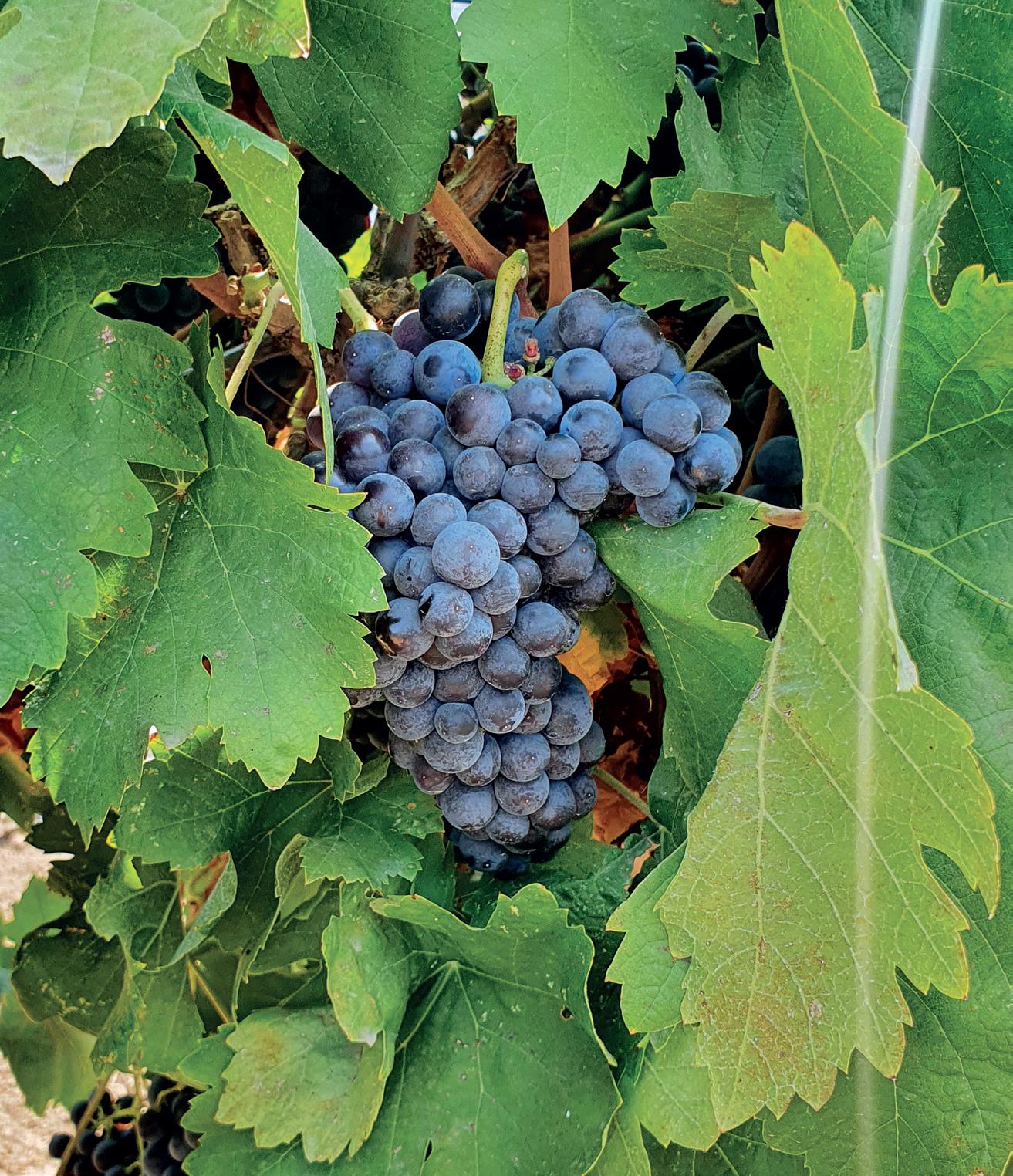

39 <<
Grape berries cv. Carignan is severely infected with powdery mildew from untreated control treatment
Grape berries treated with mixtures of macro and micronutrients
–
–
–
MAY 2023 | VINEYARD
Recent research
Investigations are continually being made into the impact of micronutrients on yield and fruit quality, as well as examining the best way to deploy them in a vineyard context. For example, a 2021 study looked at the effects of different zinc fertilisation strategies on the growth of vines and their uptake of nutrients. This study suggested that a foliar application was more effective than applying directly to the soil for increasing the yield and quality of the grapes produced.
A 2022 study published in Plants examined the fungal pathogen that causes powdery mildew. Management of this destructive disease has previously been undertaken through the use of fungicide sprays. However, with increasing reports of fungicide-resistant strains of powdery mildew, and the global exigency to reduce the use of pesticides an environmentally friendly alternative is sought.
Field experiments in Israel reportedly showed that berries treated with macronutrient and micronutrient fertilisers showed a significant increase in anti-fungal and antioxidant metabolites, suggesting “possible indirect activity against the pathogen” as well as an improvement in levels of esters and organic acids that contribute to wine quality. The field trials included the foliar application of potassium phosphate fertiliser, fertilisers containing boron and zinc and a mixed fertiliser called TruPhos Platinum. They were seen to be as effective as the fungicide tebuconazole at reducing the incidence and severity of powdery mildew.
Dr Lior Gur of the Shamir Research Institute said the key takeaway from their work was that the "integration of macronutrients and micronutrients in disease management in the vineyard will: 1) reduce pesticides residue in the vineyard; 2) reduce fungicides resistance risk, and 3) may improve wine quality."
Although not directly involved in the research, NutriAg, the supplier of TruPhos was delighted by the positive results of the study.
study highlights an additional benefit of foliar fertilisation that will be new for a lot of vineyard managers. On a recent trip to Israel the lead author, Dr Gur, explained that foliar-applied nutrition also helped manage powdery mildew in apple and mango. It will be exciting to watch where this research goes in the coming years and to continue expanding the list of benefits associated with our high quality foliar fertilisers like TruPhos.”
Read the research: Gur L , Cohen Y, Frenkel O, Schweitzer R, Shlisel M, Reuveni M. Mixtures of Macro and Micronutrients Control Grape Powdery Mildew and Alter Berry Metabolites. Plants. 2022; 11(7):978. https://doi.org/10.3390/plants11070978
Micronutrient delivery technologies: Focus on spraying




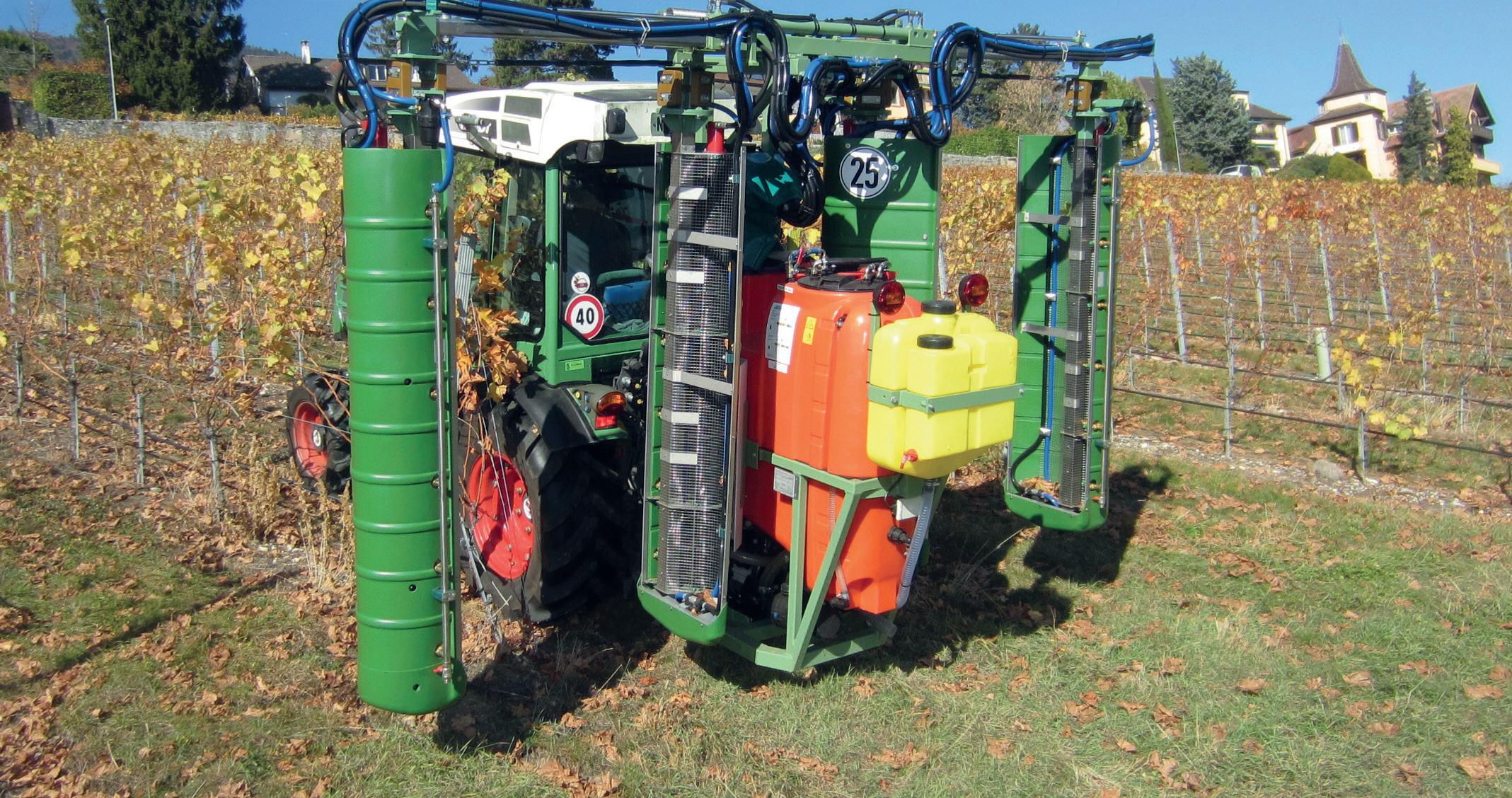
The direct application of micronutrients is an ongoing part of vineyard management. It can be a more problematic issue for organic or biodynamic properties where there are restrictions on what substances and products are permitted for use. The Soil Association and Demeter have detailed guidelines on what can be applied within their certification standards, although this is quite heavily restricted in terms of foliar applications.
For vineyard managers who are able to use standard micronutrient applications, there are a number of different micronutrient delivery technologies available. Drenches apply the micronutrients to the soil around the base of the vines. They can be effective for addressing soil deficiencies and providing a slow release over time. Controlled-release fertilisers are granular products that provide a sustained supply of micronutrients across the whole growing season. Similarly, soil amendments like compost and biochar can improve soil structure and fertility in the longer term to improve the vines’ access to nutrients. One of the most commonly found methods of application is foliar sprays. By spraying directly onto the leaves of the grapevine deficiencies can be corrected. The micronutrients are quickly absorbed into the plant which can provide rapid improvement.
“Good growers understand that proper micronutrient nutrition is required for strong yields and quality crops,” said NutriAg’s Director of Research and Communication, Christopher Trobacher. “But this recent <<
40
MICRONUTRIENTS
Lipco mounted recycling over-row cross-flow fans type GSG



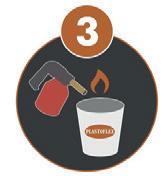
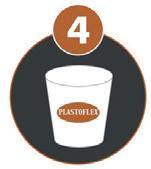

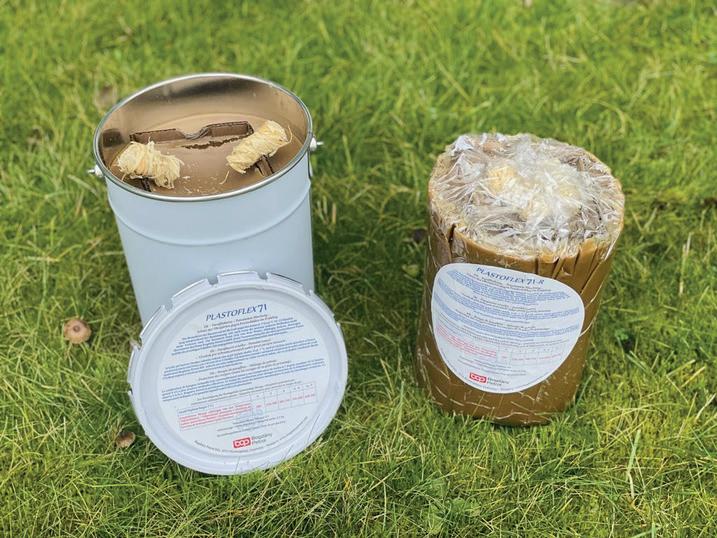
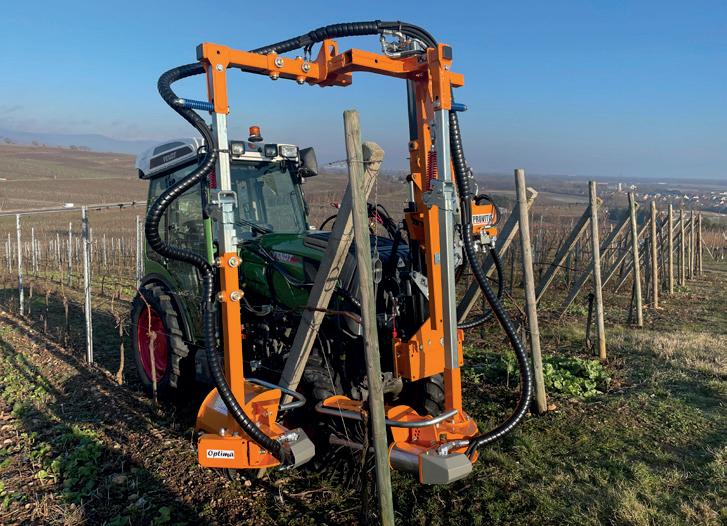




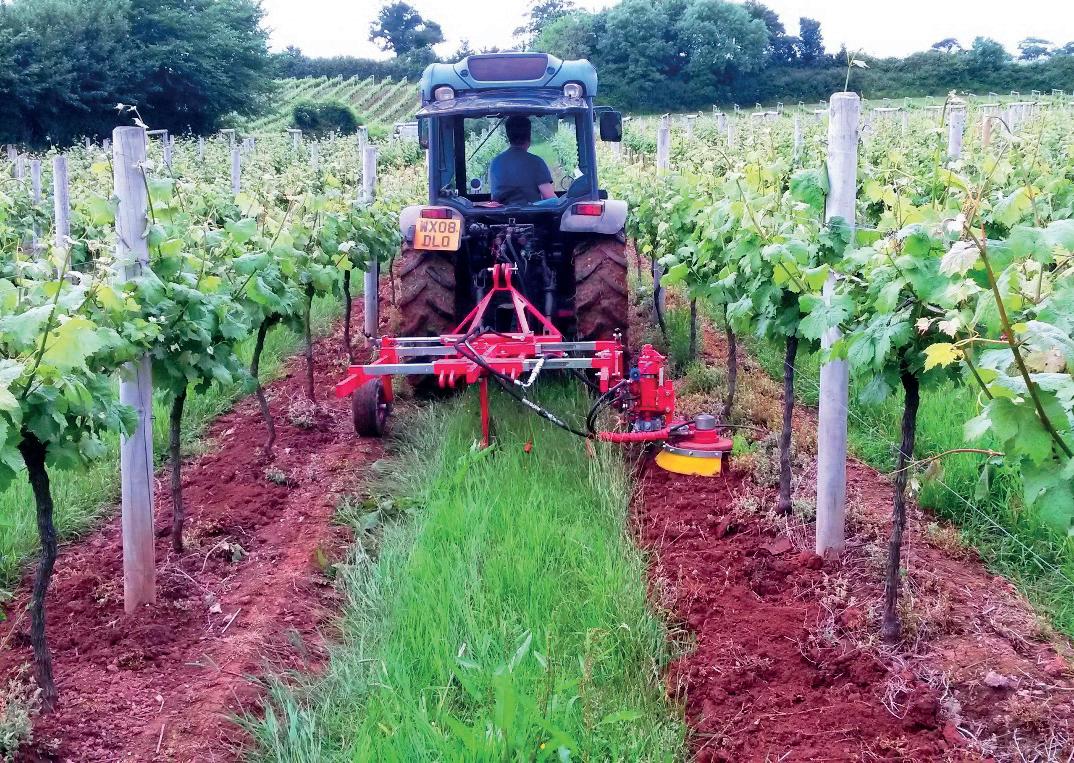
41 Planning for frost protection The beginning of frost protection Extinguishing & preparing for next season Quick and easy lighting Burning and warm smoke for up to 10 to 12 hours Prompt delivery Long lasting candles with extra lighters to ensure quick lighting when temperatures drop rapidly during spring nights By reducing radiation, increasing convection and air temperatures, vineyard candles alleviate the impact frost can have on delicate primary buds. Vineyard candles Strengths: Preparation for frost protection Get in touch on: 0845 607 3322 fruit solutions@agrii co uk Protect your vineyard against spring frosts!
Hire /vitifruitequipment vitifruitequipment@sky.com 01732 866567 www.vitifruitequipment.co.uk MULTI BRUSH STRIMMER / BUD RUBBER LEAF REMOVERS FAN SPRAYERS TRIMMERS, VARIOUS SIZES LIPCO RECIRCULATION SPRAYERS QUALITY WEED CONTROL MAY 2023 | VINEYARD
Vitifruit Equipment Sales and
Top tips
Even the best equipment can do a bad job if it hasn’t been set up properly. Our top tips for getting the most from your sprayer are:
◆ Time your spraying to avoid rain or high winds. Remember that drift will be lower with coarser sprays even though you sacrifice a degree of coverage.
◆ Calibrate your sprayer to check that the coverage is even and to find that balance between coarse and fine.
◆ Target the canopy of one row only per pass for the best efficiency and efficacy.
◆ Consider an adjuvant to help with the spread and uptake of droplets, with the added benefit of reducing the amount of water required overall.
Vitifruit supplies many sprayers from different manufacturers that will meet the needs of vineyards according to their size, budget and the technical ability of the operator. A basic system starts in the region of £3,000. Something with significantly more bells and whistles will set you back £40,000 or so. Much of this machinery has been tried and tested in UK vineyards over several decades, so it is accepted as the “standard kit”. However, there are some new technological innovations in the area.
“There are two principal ways to apply chemicals onto vines using a spray,” explains David Sayell of Vitifruit. “Either by traditional nozzles or by specialised air shear nozzles, where the spray droplets are given an electrostatic charge.
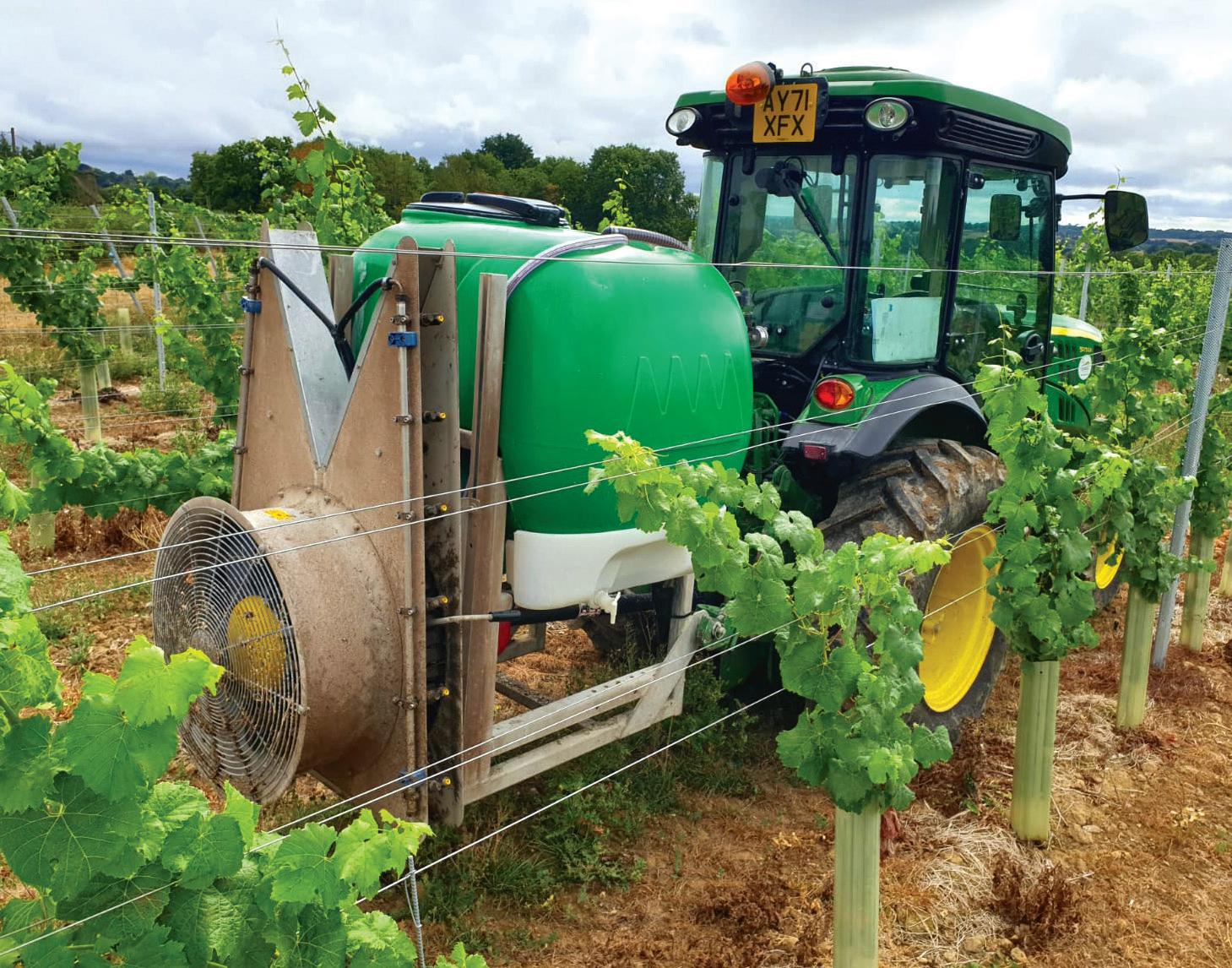
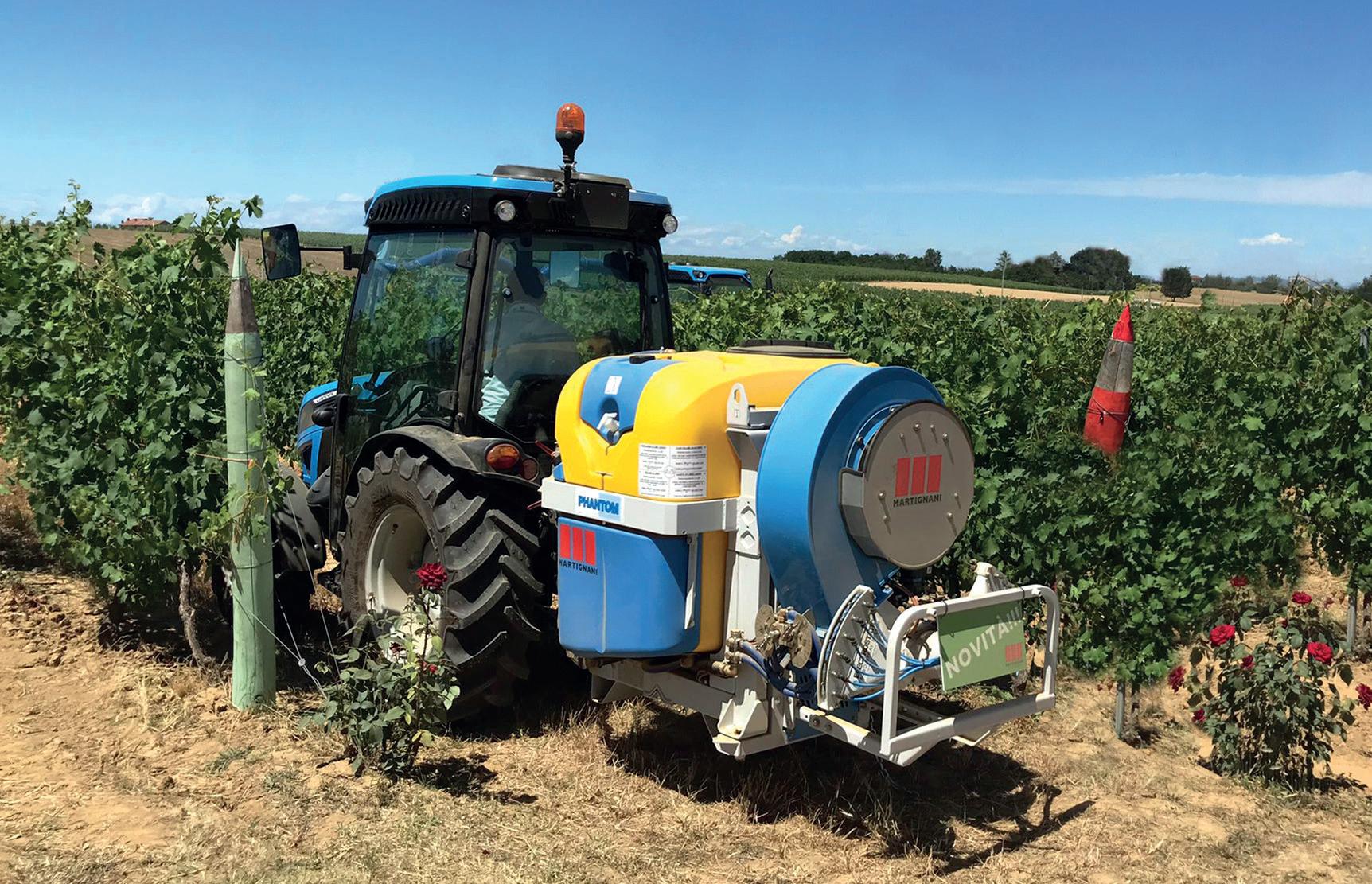
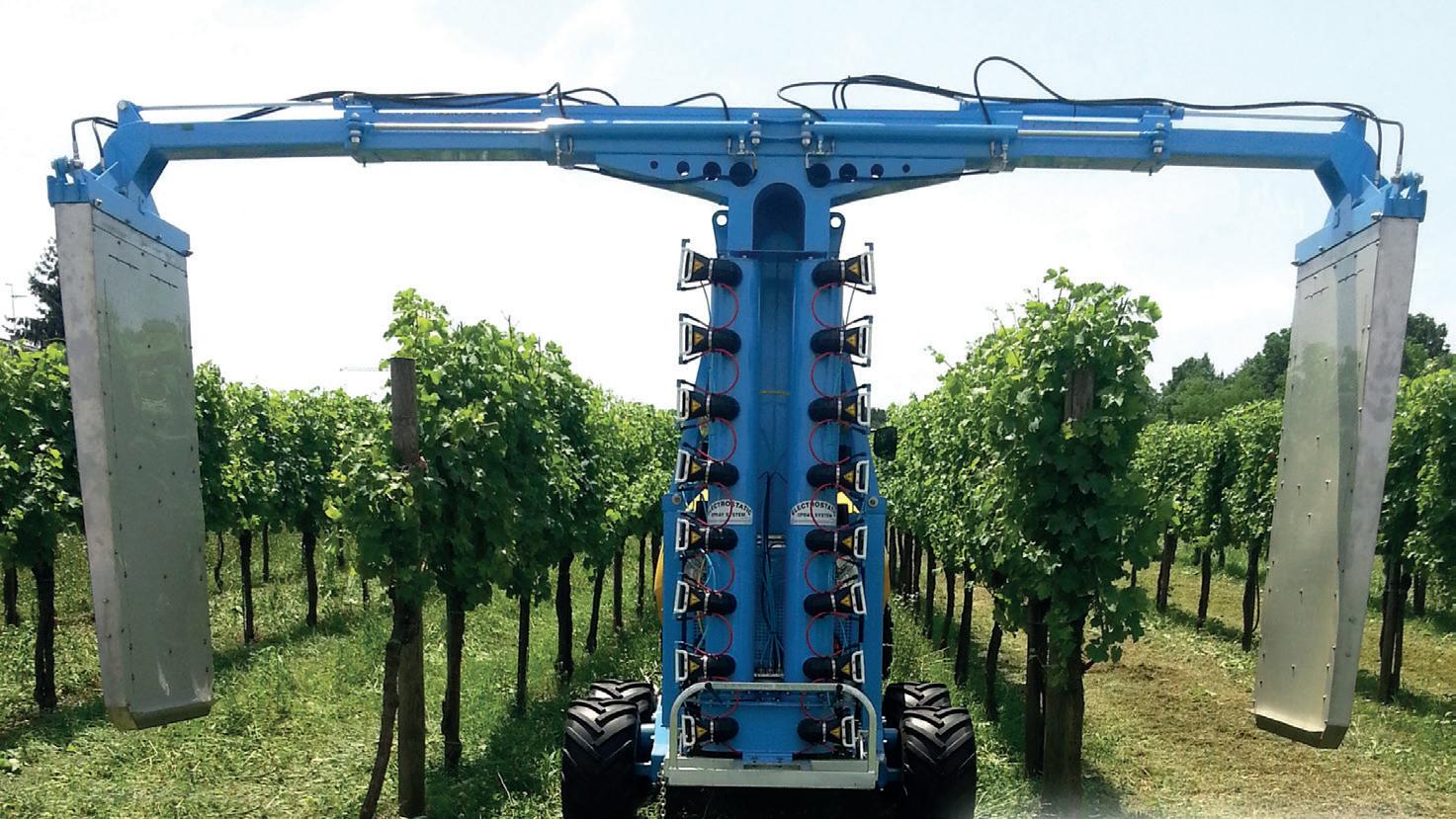
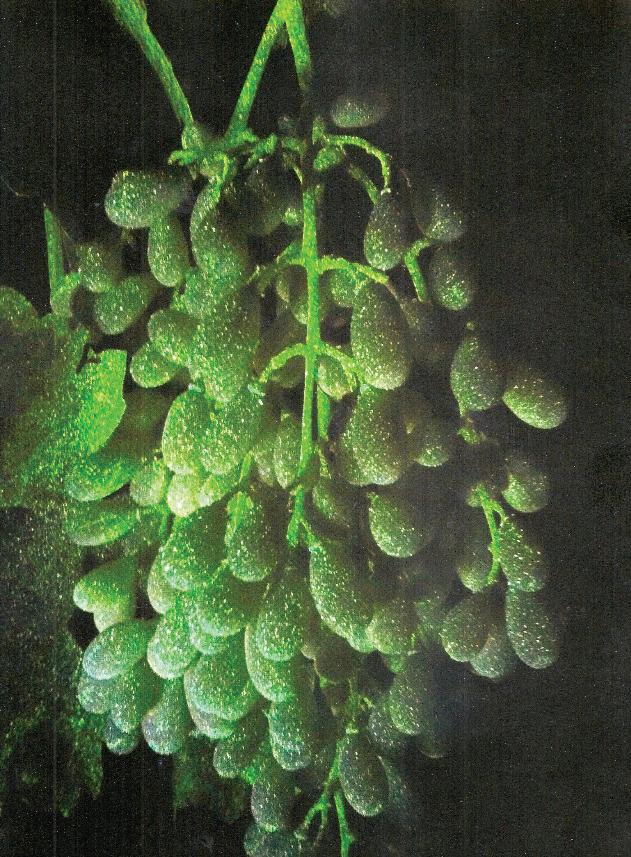

“The droplets are of a very specific size and thanks to the electrostatic charge it enables the chemicals to bond to the leaf surfaces and berries exceptionally well. Due to its efficiency, the spray rates and litres per hectare can be significantly reduced enabling more efficient use of tractor and driver time with more hectares sprayed per tank load. The electrostatic sprayers are sold in big numbers around the world where water is a precious resource and chemical costs have to be minimised.”
Micronutrients, wine quality and wine fraud
Micronutrients are essential not just for the successful development of grapes, but also for the flavour and aroma of the finished product. The specifics of this can vary depending on the grape variety, growing conditions and winemaking techniques. In general terms though, it may be observed that zinc is essential for the synthesis of several aromatic compounds including terpenes and thiols. A zinc deficiency may result in a wine with reduced aroma and complexity. A lack of manganese or iron can result in decreased colour intensity in red wines. As well as impacting berry size and yield, boron deficiency may produce wines with a decreased flavour intensity.
As with all things, balance is the key. Excess levels of micronutrients can wreak their own havoc on wine quality. Too much and you may end up with an unpleasant metallic,
astringent or bitter flavours. Too much zinc can result in high acidity levels that may be difficult to manage. High manganese or boron levels have been seen to contribute to the development of off-flavours, particularly in white wines. Excess levels of iron or copper can also contribute to the oxidative degradation of the wine, which reduces the aroma intensity and the stability of the colour. Proof that you can have too much of a good thing.
Research has suggested that the analysis of micronutrients could also be useful in the fight against counterfeit wine. A 2017 study in Brazil showed “that it is possible, based on the boron isotopic ratio, to differentiate Brazilian red wines from Chilean, Italian and Portuguese red wine.” The study was even able to identify differences in boron concentrations between the Southern and the North-Eastern Brazilian wine regions, suggesting the possibility in the future of developing “a fingerprint for each wineproducing area of the country.”
This is another tool, along with other new technologies like fluorescence spectroscopy, that are being developed to continue the global battle against wine forgery. But of course, you have to open the bottle first!
Read the original study: Almeida, Cibele & Almeida, Ana & Saint’Pierre, Tatiana & Godoy, Jose. (2017). Boron Isotopic Ratio in Brazilian Red Wines: a Potential Tool for Origin and Quality Studies?
Journal of the Brazilian Chemical Society. 28. https://doi.org/10.21577/0103-5053.20170043
sprayer
Martignani Electrostatic sprayer
42
Martignani Electrostatic sprayer
Traditional air blast sprayer with linear fan
Martignani Electrostatic
(showing chemical deposition under UV light)
The life below ground
When walking into a vineyard, it is often easy to predict whether, or not, the vines will be producing sustainable yields to be economically viable. Thick couch grass growing up into the vines, or the build-up of moss in the undervine, are indicators that the soils have been left to their own devices and are now oxygen-starved and depleted due to competition for nutrients.
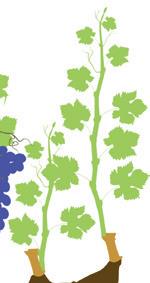
Vineyards in the UK are more likely than not to be over soils containing a sizable proportion of clay, which can make conditions tough for vines. In contrast, vine growth would be best suited in forest floor soils where the upper metre has been broken up by root growth/death over millennia. Therefore, undervine soil cultivation is an important part of vineyard management. It helps keep weeds and other competing plants at bay and ensures that the soil is kept in optimal condition. This involves using various tools and techniques to work the soil undervine, such as roll hackes, under-vine disks, inter-vine weeding, and finger weeding. These activities help to loosen the soil, which allows for better water and air penetration. This promotes root growth and encourages microbial activity. In addition, in the row, soil cultivation with the likes of a sub-soiler and mole plough helps reduce compaction, which can lead to improved drainage and, as a result, an increase in soil fertility.
Increasing oxygen levels in the soil is an important part of undervine soil cultivation, as oxygen is essential for the growth and development of microorganisms that are important for healthy soil. This helps to promote microbial activity, which in turn helps to improve soil fertility. The soil microbial community is an important factor in vineyard productivity, and mycorrhizal fungi are essential to that community.
Mycorrhizal fungi are a type of beneficial fungi that form a symbiotic relationship with the roots of plants, including vines. The fungi form a
































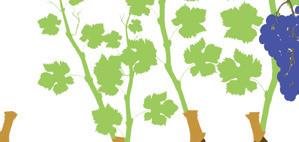

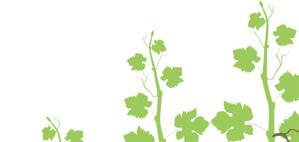

network of filaments around the roots of the plant, which helps to increase the surface area of the root system. This increased surface area allows the plant to absorb more nutrients and water from the soil, improving the vines' health, productivity, and storage of carbon. The fungi also produce enzymes that help to break down organic matter in the soil, releasing essential nutrients that the plant can use. In addition, the fungi can help to protect the roots of the plant from disease and pests, as well as reduce the amount of water lost through evaporation. There is evidence that The networks of mycorrhizal strands, also referred to as mycelium, extend the capacity of the plant’s roots and connect plants to one another. Mycorrhizal fungi can also improve the quality of the grapes produced in vineyards, as they help to increase the availability of essential nutrients, such as nitrogen, phosphorus, and potassium, which can improve the flavour and aroma of the grapes.
Undervine soil cultivation is an important part of vineyard management, and it starts in the springtime when the soil is warmed up enough for the microbial activity to get going roughly at about T200. The T200 method calculates the average temperature for a given day by adding all temperatures (including negative temperatures, which are treated as 0) until the total reaches 200ºC. This begins on 1 January. However, don’t touch the vineyard with the tractor unless the ground is dry enough to allow cultivation without soil damage or compaction.
I once read the renowned French geologist Henri Enjalbert's book on a study of the great Bordeaux Chateaus. He mentions that the most important action in the year was getting the plough (décavaillonneuse) into the soil as soon as possible. This cultivation would kick start microbial activity encouraging the vines to bud burst earlier, giving them a longer growing season and riper grapes.

43 Ch es Ma r tin S l turi s t DESKTOP www.vine-works.com ENVELOPE sales@vine-works.com phone-alt 01273 891777
THE VINE POST Improves soil structure and stability Increase plant resistance against biotic stresses while reducing phytochemical input Bioregulation of plant development and increase in plant quality for human health Increase plant resistance against abiotic stresses (drought, salinity, metals and mineral nutrient depletion Improves soil water retention Increases plant/soil adherance Reduce fertiliser requirement Promote plant growth Illustration: iStock.com/MariaFlaya MAY 2023 | VINEYARD
From strength to strength
Vitikit specialises in supplying equipment for making wine, cider, beer and spirits, together with sophisticated control equipment designed to improve results.


They say mother knows best, but in Julian Jenkins’ case it was his father-in-law who prompted him to set up the winemaking, cider and brewing equipment supply business that has since gone from strength to strength.
Julian was enjoying a successful career as a chartered surveyor working in commercial property when Chris Kempton, himself a business owner, said he should be working for himself – a comment that led to the
launch of Vitikit.
The business, based near Exeter but supporting a customer base the length and breadth of the country, specialises in supplying equipment for making wine, cider, beer and spirits, together with sophisticated control equipment designed to improve results and make life easier for the winemaker or brewer.
Julian’s focus on personal service and the close relationships he has built up
Julian Jenkins
with leading companies including Sraml, renowned for the quality of its winemaking equipment, has ensured the company’s steady growth over the past nine years.
“Father-in-law suggested I should be ‘trading in something’, at which point I had to start thinking about what I knew, or what I was good at,” Julian recalled.
It wasn’t a difficult decision. He and his wife Kate already tended a one-acre commercial vineyard, now the stunning backdrop for Kate’s Froginwell Vineyard wedding, function and corporate events business, and Chris also had considerable experience of winemaking.
“I was also interested in brewing and in cider, something I had consumed a fair bit of while studying at Seale Hayne Agricultural College, attached to the University of Plymouth,” he laughed.
Introducing Smart Analysis, Vitikit have teamed up with DNAPhone, an innovative company with a clear vision to revolutionise the world of rapid analysis and diagnostic tests. Get in touch for more details.
In an early display of the ‘hands-on’ approach that Julian still displays, he jumped into his car and drove around Europe, meeting suppliers, checking out the best equipment and setting up relationships with the people who would play a fundamental part in his new business.
Father-in-law Chris, who ran a successful agricultural spares business, provided advice and support but has never played a formal part in the business, which back in its early days in 2014 focused on smaller vineyards, cider makers and breweries.

“We started small – I can’t remember if I had a chair without a desk or a desk without a chair; it was one or the other – but we soon found customers were asking us if we could recommend and supply bigger and more sophisticated equipment,” Julian recalled.
“As a result of that growth, which happened within a couple of years or so, we now supply the whole range, from grape presses, elevators and destemmers through to tanks, filtration kit and bottling lines,” he said. “In a sense we have all grown together; the wine industry, our customers and our business.”
DESTEMMERS
44
Winemaking
cutting
WINE & CIDER MAKING EQUIPMENT
is both and art and a science. Vitikit have forefront of wine making equipment, using
edge a superior and consistent product. SRAML wine making SRAML WINE
Destemmers
the grape the juice leaders
www.vitikit.com
SRAML VPe Eco Pneumatic Presses range offers the best performance-cost ratio, whilst still bringing all the benefits to your production demands. For small to mid-sized wineries as you began to expand, investment in the right wing making equipment is critical.
VPEECO PNEUMATIC PRESSES
<< VITIKIT
ABOUT FERMECRAFT




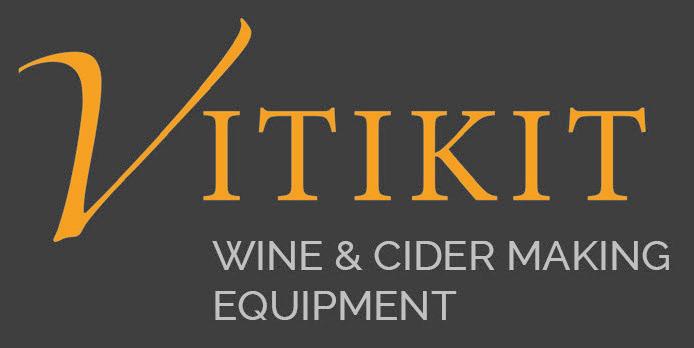


Fermecraft is a hard wired, industrial automation package with local processing units installed at strategic points across your production facility.


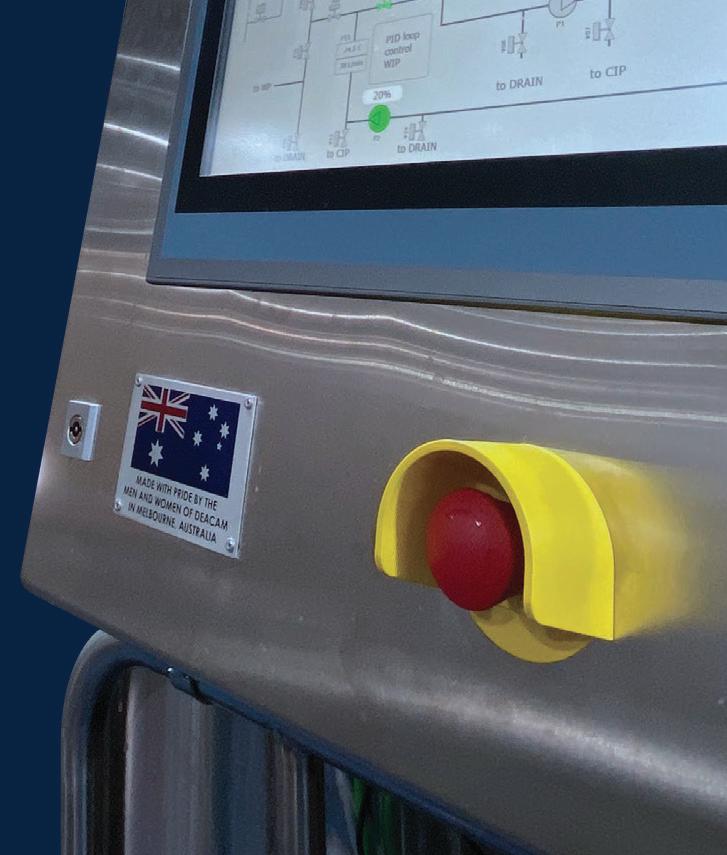

Fermecraft uses an industrial ethernet cable we call FermeNet. FermeNet is your communication highway. Masses of cables are a thing of the past. Low energy sensors and valves connect directly to FermeNet via dedicated gateways. It is a ‘ decentralized’ system which is easily extended to include more of your operating equipment as required. With Fermecraft’s intelligent automation, you can track the entire cellar production process and respond to alarms or alerts if any action is interrupted by an unexpected development, including the impact of extreme hot or cold weather on your operation.With all this control and oversight of the winemaking process, your winery team can monitor progress and achieve precise results with each batch every time.

FERMENET CABLE GATEWAYS REMOTE ACCESS MAIN CONTROL CUBICLE info@vitikit.com
HVAC control of barrel storage (heating and cooling).
www.vitikit.com info@vitikit.com 01395 233031 PUMP CONTROL PROCESS CONTROL TEMPERATURE CONTROL RECIPE MANAGEMENT
CO2 monitoring, alarming and extraction.
While the business has grown, many of the relationships have stood the test of time, with Enotechnica Pillan, which supplies a broad range of smaller winemaking equipment, German crossflow filtration specialists Romfil and stainless steel tank manufacturer Algor Group all heading up Vitikit’s list of top suppliers.

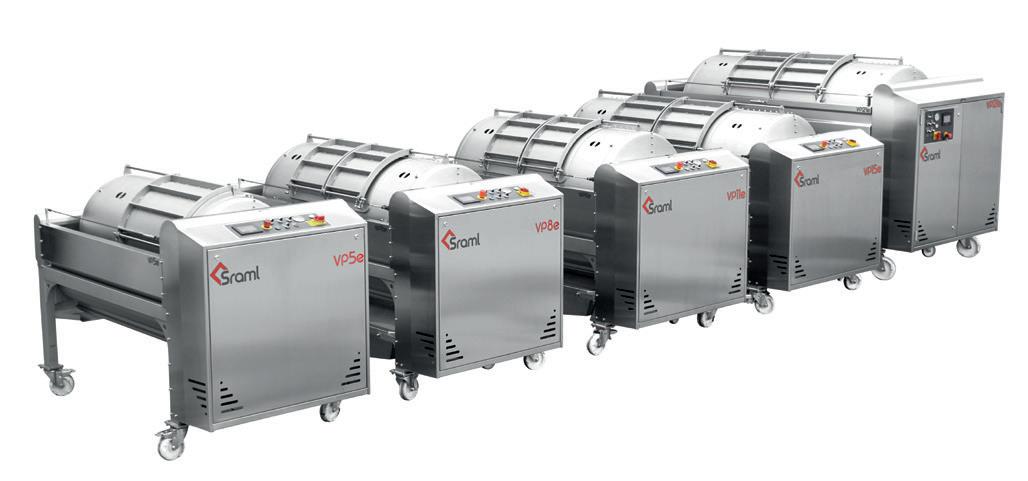
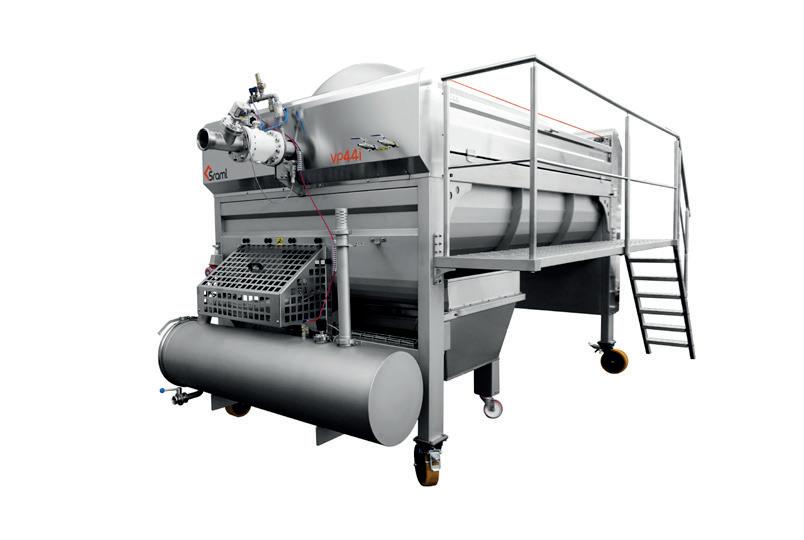
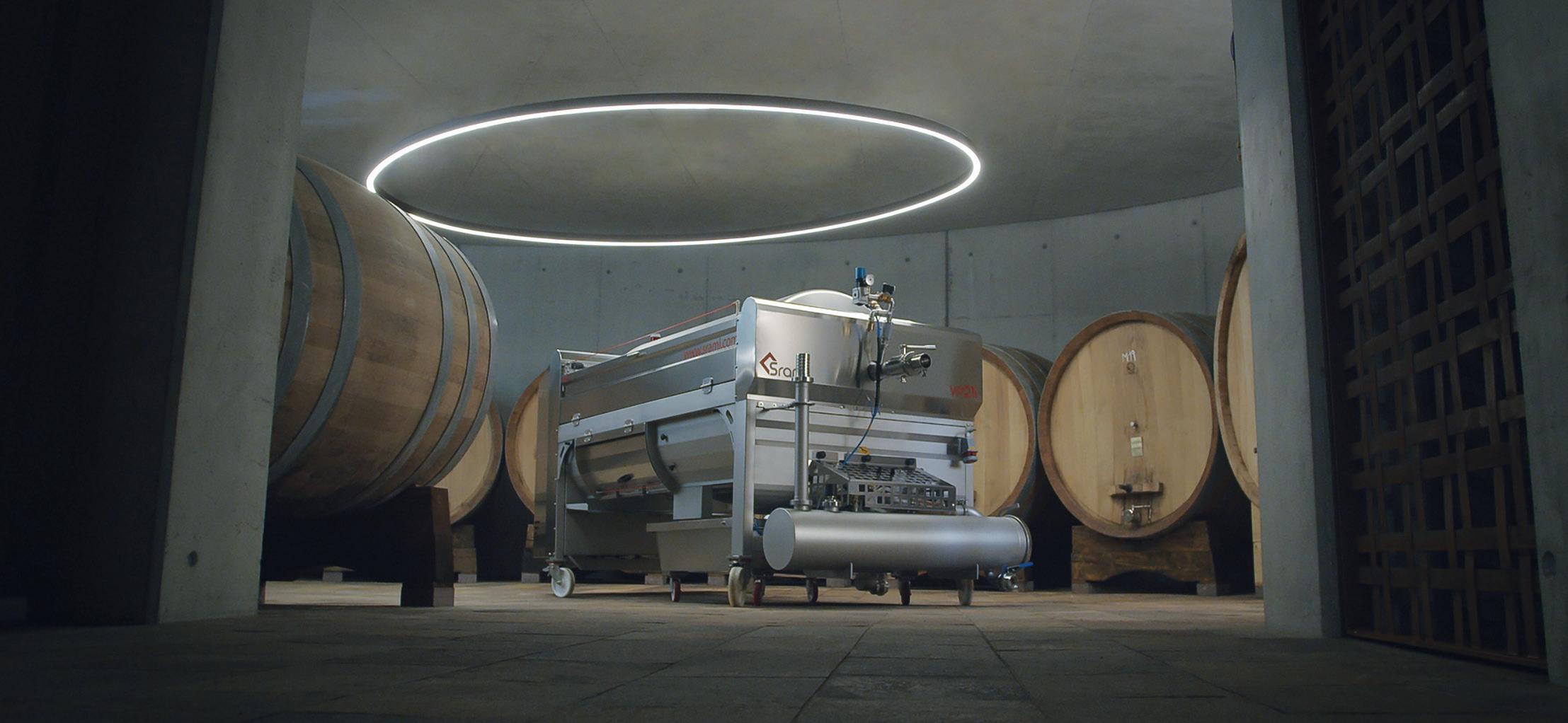
Another important supplier for Vitikit is Slovenian company Sraml, which Julian sees as a market leader in manufacturing equipment for wine, cider and juice making equipment. “The quality is unbeatable and the service we receive is first class,” he commented. “We rely on them for wine presses, elevators, destemmers, bottling equipment and more because we know our customers appreciate the quality of the product.”
Much of the equipment Vitikit supplies, such as crossflow filters from Romfil, work just as well for cider as for wine. There is a similar level of crossover in fermentation tanks and bottling equipment, allowing the company to supply the different markets. Increasingly it is also working with distillers making rum, whisky and gin.
Vitikit’s close relationship with Sraml also gives Julian access to Marko Benčina, an international award-winning winemaker who
has a wealth of experience and knowledge and works for the Slovenian manufacturer.
“If we need advice about new equipment or a new technique that’s being talked about in the world of wine, I can put in a call to Marko and he is always happy to help. It’s a unique benefit based on our position as a Sraml supplier and it helps us provide a higher level of support to our customers,” said Julian.
The company was originally based in a small office near Exeter, but as it increasingly needed access to three-phase power to test and commission equipment, it moved back to a workshop at the Froginwell Vineyard, so named simply because on a pre-vineyard visit to the land Chris had spotted a frog in the well…
In late 2016 Julian employed Kieran Aylward, a beer and cider maker, to help with sales and the technical side of the business. “Kieran knew all about the equipment, both large and small, that outfits needed, even though most of it was out of reach of both of us in our own enterprises,” Julian explained.
Kieran, who also has a keen interest in engineering along with an impressive array of qualifications in brewing, helped drive further growth in sales and has played a big part in Vitikit’s move into selling equipment
to breweries, an important part of its success today.
Another stroke of luck for Julian was meeting Joe Hopwood, an electrical engineering student at Exeter University. “He was simply too bright for words but luckily for us was working at the time for a sports retailer and came aboard because he thought we were more interesting!”
Wine and cider equipment is made in Europe, but at that time Vitikit was importing brewing equipment that was delivered from China. Julian, Kieran and Joe decided to import the kit without control panels because they felt such vital components should be manufactured and configured in this country.
“We took Joe on to provide part-time support developing the design and programming for our control panels, and he was simply brilliant at it,” Julian recalled. “We are still using the programming he developed now, although he’s moved on to a full-time post elsewhere. He was far too clever to stay working for us.”
The panels themselves are made by a local electrical engineering company called Shapter Electrical Services, which takes Joe’s basic programmes and tailors them to the individual needs of customers.
46
<< << MAY 2023 | VINEYARD
WINE & CIDER MAKING EQUIPMENT
SRAML WINE MAKING EQUIPMENT
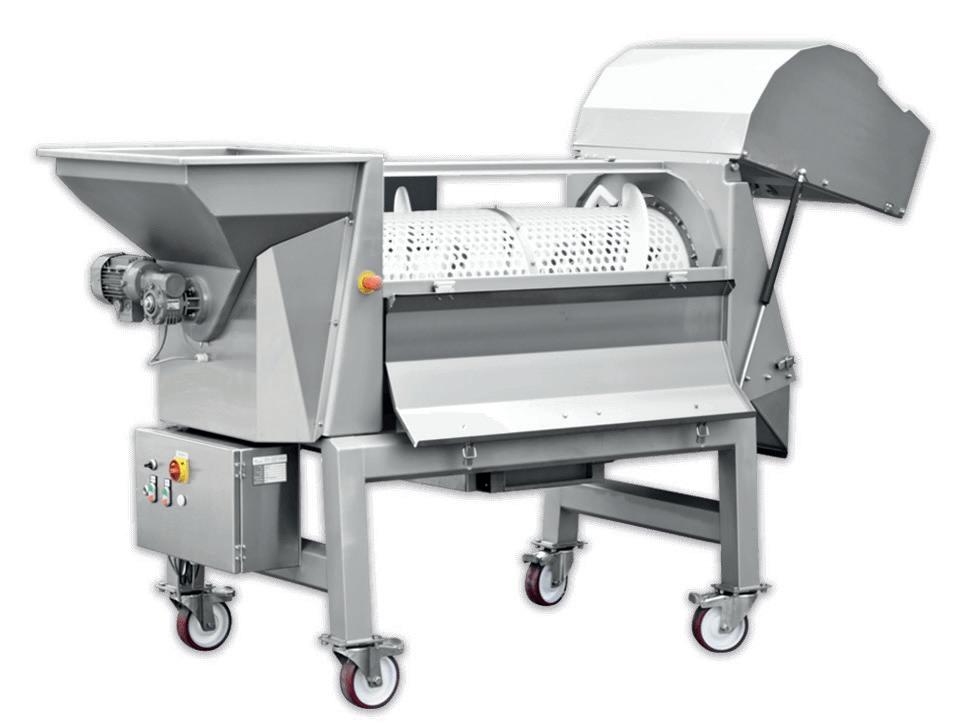
Winemaking is both and art and a science. Vitikit have partnered with SRAML who are at the forefront of wine making equipment, using cutting edge technology is fundamental in producing a superior and consistent product. SRAML wine making products available through Vitikit include:
VPEECO PNEUMATIC PRESSES
SRAML VPe Eco Pneumatic Presses range offers the best performance-cost ratio, whilst still bringing all the benefits to your production demands. For small to mid-sized wineries as you began to expand, investment in the right wing making equipment is critical.
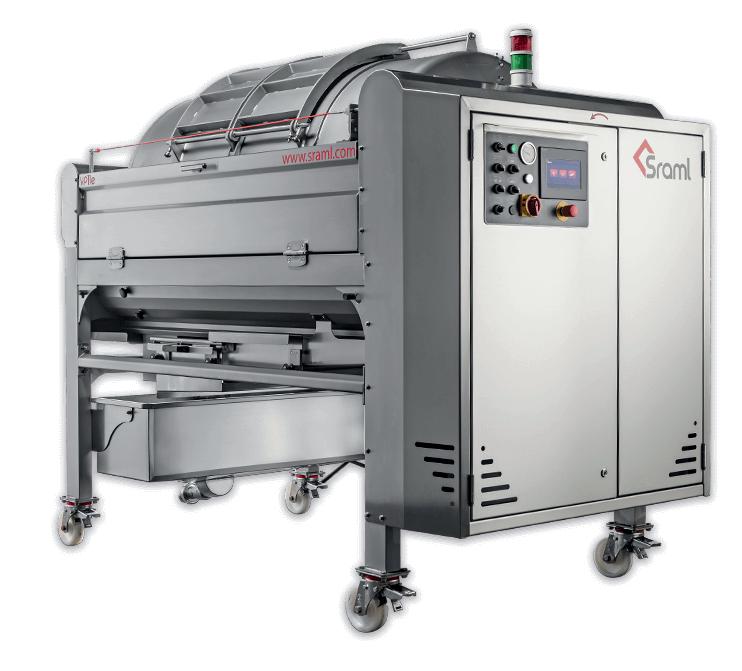
DESTEMMERS
-Reception and sorting
-Destemmers and Crushers





-Pumps and pumping units





-Presses
-Bottling
Introducing Smart Analysis, Vitikit have teamed up with DNAPhone, an innovative company with a clear vision to revolutionise the world of rapid analysis and diagnostic tests. Get in touch for more details.


Destemmers and crushers function is to remove the grape berries from the stems and to release the juice and pulp. Our partners SRAML are world leaders in innovative destemming technology
WiFi & Bluetooth

Internal battery and micro USB


Thermostat up to 40 C
Spectrum 280-760nm

Low maintenance

www.vitikit.com info@vitikit.com 01395 233031
The final member of the Vitikit team is David Balde, who is based in Hungary and focuses on sales and on looking after administration as well as arranging the logistics around importing and exporting products, something that has been increasingly challenging since Brexit.
David also looks after the Vitikit website and social media. “He’s very well organised and a vital part of the business,” said Julian.
Vitikit is keen to see smaller vineyards and
breweries benefit from the kind of high-tech control systems that until now have been out of reach of all but the biggest wineries, and is importing equipment that Julian sees as a “game changer” in this area.
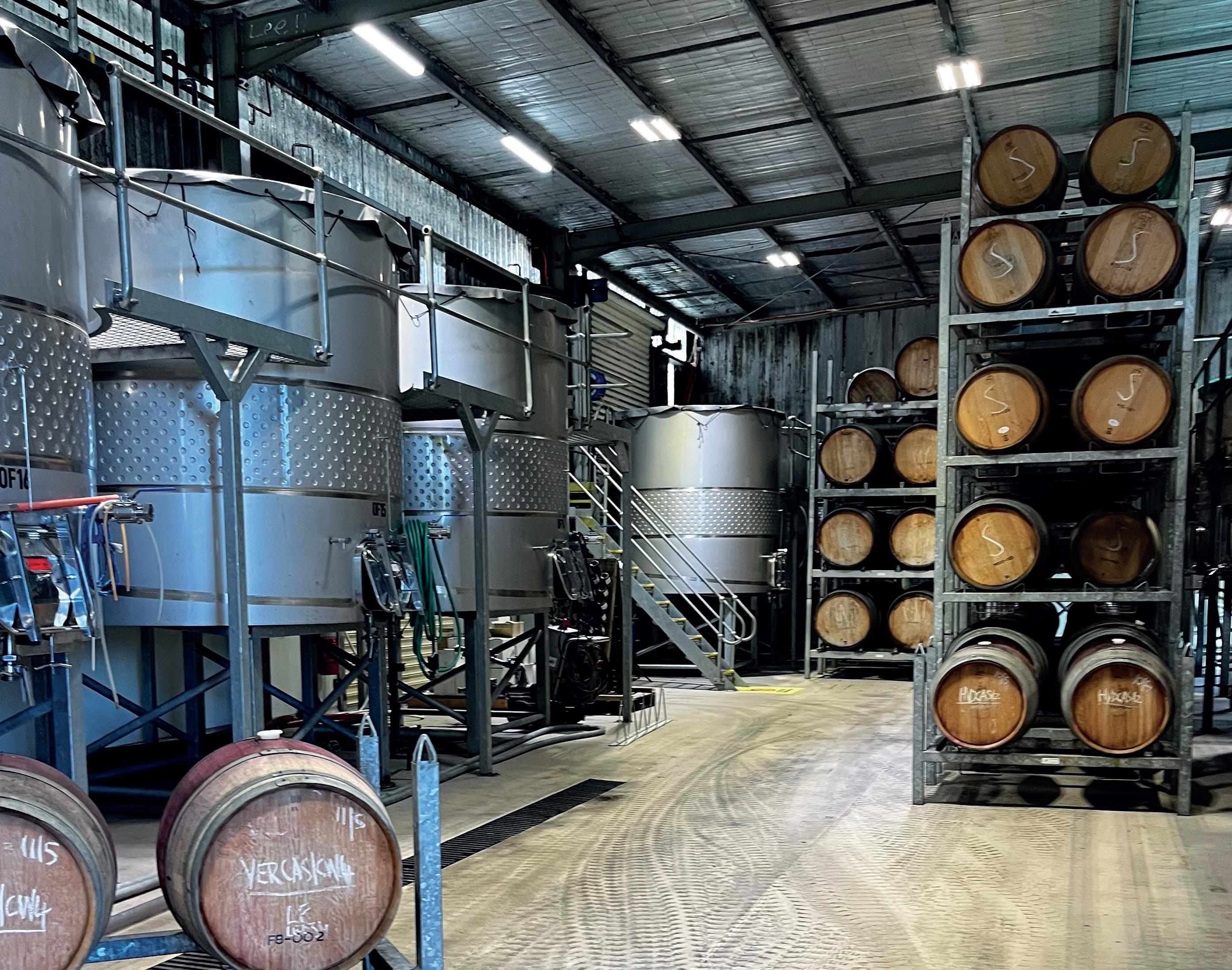
The company is importing industry 4.0 control panels made by Australian company Fermecraft, which, its website announces, “creates automated brewing solutions for breweries, distilleries and wineries to make their processes easier, more time-efficient and more cost-effective”.
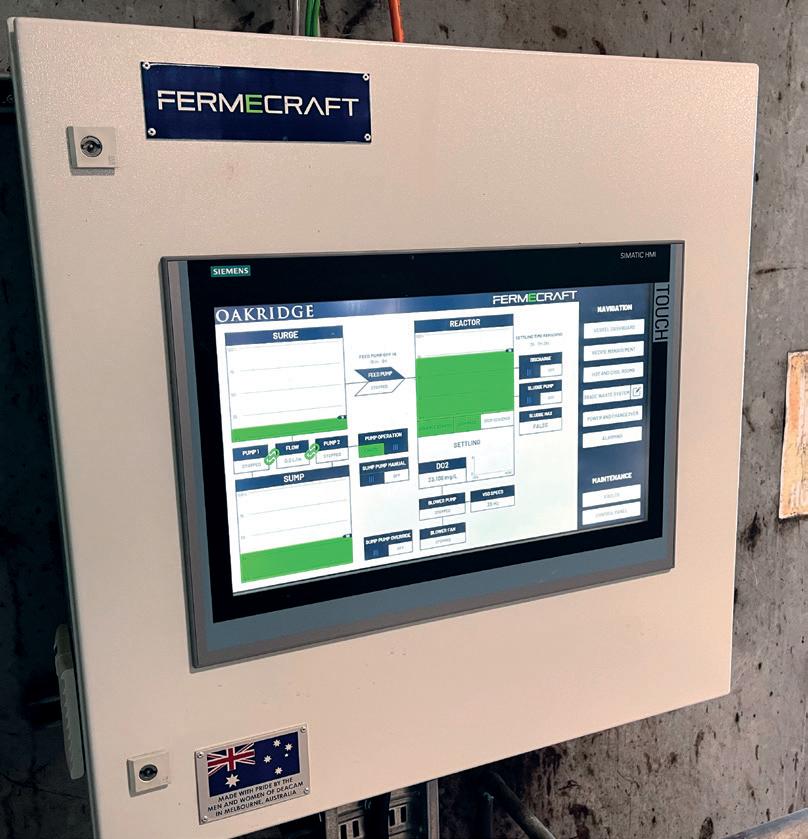
Julian explained: “The aim is to create a consistent product by looking after every aspect of cellar management via a dedicated control panel that can also be accessed remotely. It also stores the details of variables such as specific gravity, time and temperature etc in the ‘Fermecloud’, allowing the winemaker or brewer to access the data and ensure repeatability.
“Fermecraft’s original system was comprehensive enough to allow a brewhouse to run remotely, but now the company has created a smaller but equally
Oakridge Winery Yarra Valley in Australia, which is using the Fermecraft system
sophisticated panel for cellar management that can do a similar job for wineries. It could be a real game changer and we are introducing it to our customer base. Being able to store the data electronically in the ‘Fermecloud’ is another big benefit.”
Vitikit is also importing a new entry level spectrometer, the Smartanalysis, designed by Italian company DNA Phone. Again, the data collected is stored in the ‘cloud’
“Smartanalysis is already proving popular and is allowing producers to carry out sophisticated analysis of variables such as acidity, sulphur, sugar levels, lactic acid, malic acid and pH in wines, beers and ciders,” pointed out Julian.
Vitikit also supplies consumables, and despite recent growth still has a close relationship with all its customers. “You can sometimes spend the best part of an hour helping to find a small replacement part for a customer that costs about a fiver, but that’s all part of the service,” he added. “It’s all about relationships, whether that’s with the suppliers or the customers.”
48
<< MAY 2023 | VINEYARD VITIKIT
My flexible work model
Handling over 100,000 bottles in multiple wineries.
I’ve been looking forward to getting into this topic but it is probably the most difficult to summarise in one page. My current work models come from my 20 years’ experience; 34 vintages in seven countries, across over 55 varieties, 23 companies and a couple of hundred labels.
Experience takes time, dedication and a lot of trouble shooting, incorporating winemaking mistakes, terroir learning, equipment failure, real time decision making, tasting, grape interpretation and more.
Experience is always necessary, especially when the budget is limited and some mistakes have to be avoided. Quality management, timing and efficiency are also equally important; here is where an independent consultant winemaker can provide the best solution.
A new born winery can easily take 5-10 years to establish its brand and at least 10 years to be profitable.
The wise way to cut corners, is to work with navigated professionals to avoid beginners’ mistakes and drastically speed up growth whilst simultaneously reducing some of the pressure allowing a better night’s sleep and becoming profitable as soon as possible. Working smoothly and efficiently with a good quality plan can change the game.
I’ve enjoyed my winemaking career from day two after a wine tasting about 23 years ago at the Viticulture and Winemaking Institute in Marsala (Italy). During those years I have great professors that really changed my life, such as: Nicola Trapani, Pietro De Vita, Ercole Alagna, Alfonso Sanfilippo… I was 19 and I worked non-stop harvest after harvest while attending the university in Italy, Spain and Chile.
I was lucky enough to start working with a number of newly established small wineries assisting two well known consultants of the area, Vincenzo Bambina and Nicola Centonze; they taught me a lot. Then I started working in different countries with the purpose of learning languages, different approaches and creating as much ‘experience’ as possible. I worked with some big players like Pernod Ricard and Indevin in New Zealand, Constellations Wines in Australia and Bodega Familia Zuccardi in Argentina

producing over 25 millions bottles a year. I’ve also had the pleasure of working with other well recognised consultants nationally and internationally like Alberto Antonini, Carlo Ferrini and Ricardo Godoy.
Small wineries taught me the love of winemaking while working with big wineries gave me multiple opportunities to learn and a different perspective of how to manage quality, organise processes and work efficiently with other people.
My first love are small wineries where I can touch every step with my hands. Working in the UK, where everything is new, just about to take some shape and not linked to traditions, has been a great way to express myself.
Flexible work model
Every winery is a living organism with its environment, style, philosophy and requires to be studied individually.
My work models keep evolving all the time according to circumstances with 24/7 support. Here is a simplified summary:
◆ Hands off
◆ Hands on
◆ Consultancy
◆ Contract winemaking
Hands off
This approach is for those wineries who need to be guided in their decision making from the vineyard to the bottle or for specific projects: like a new wine, machinery set up, identifying the potential of their vineyard, R&D, blending etc. They might need senior support and have their own winemaker.
Hands on
This model can include all the above and the following from grape to bottle and it’s the most comprehensive. It’s for those wineries who do not have a full time winemaker and want to save about 50%-70% on a full time role. In this scenario, I act as a full time winemaker and I might also bring one of my junior winemakers with about 5-10 years of experience to work closely with me. Most of the UK wineries don’t actually need a full time winemaker while many winemakers would enjoy working with multiple wineries.
Consultancy
This approach can vary a lot from simple production advice, to blending decisions or, financial efficiency applied to the workflow.
For example, there are wineries that only want me as an “insurance” for problem solving/opportunity identification and troubleshooting. They might need senior support, have their own winemaker or want to learn how to make wine themselves.
Contract winemaking
Many vine growers have the dream of seeing their grapes turned into wine while not having the possibility or the intention to establish a winery.

This can happen to wine lovers too, who wish to make wine without having a vineyard and/or a winery.
In this case I can provide my skills, a house for the wines and work together with them as their winemaker. This approach can also include all the above in various combinations.
49
alvatore Leone emak i n g Catlusno
FOR A UK
CONSULTANT? I am already working with some award winning vineyards and I’d be happy to discuss your project. DESKTOP www.enologie.wine phone-alt +39 3349 769 839 ENVELOPE salvatore@enologie.wine
LOOKING
BASED WINE
EXPRESS YOUR TERROIR
MAY 2023 | VINEYARD
Kinsbrook releases fi rst red wine
Kinsbrook Vineyard, which lies in Thakeham, West Sussex, has released their first ever red wine, and the first of their brand new ‘kith’ range: ‘chough au vin’.
Made from rondo grapes harvested in October 2022 in a Beaujolais nouveau style, this exciting release is a juicy, bold red wine with tonnes of character.

Joe Beckett, Kinsbrook’s Owner, explains the process of how the new wine was made;
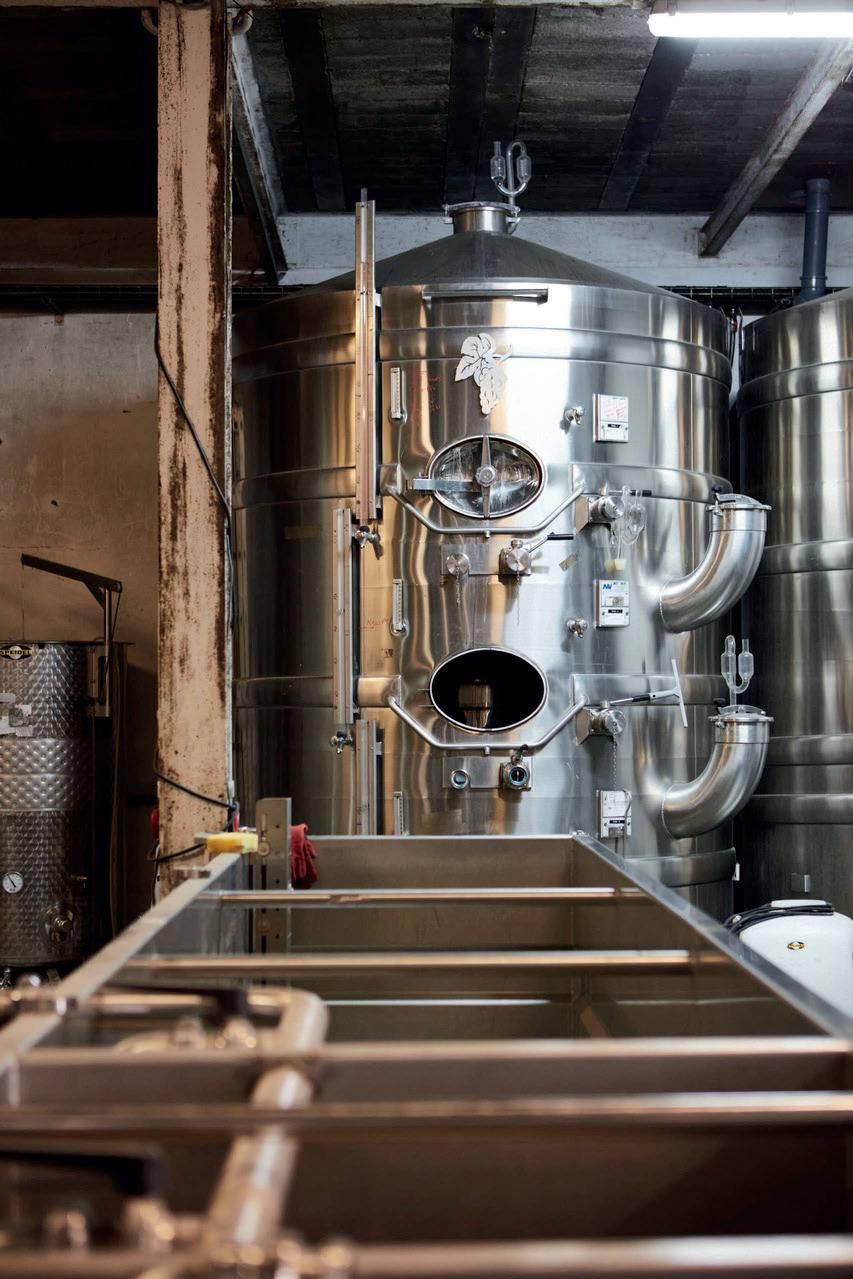
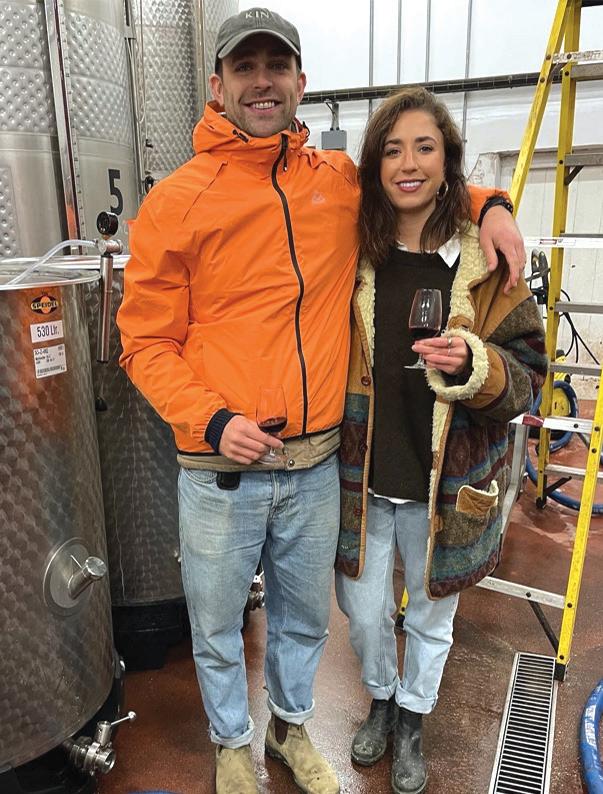
“chough au vin was made using carbonic maceration of rondo grapes from our 2022 harvest. After picking the grapes by hand, we put them in large dolavs, covered them with fresh sheets and left them to carry out intracellular fermentation for 5 days. After this, we pressed the berries and transferred the juice into the tank to continue its journey.”
Rebecca Dancer, Joe’s partner and Kinsbrook’s Creative Director, explains this wine is a first in more ways than one.
“This wine is a first for us in several ways; it is our first ever still red wine, it’s our first time using this winemaking style and it’s our first time
using these particular grapes. It is also the first of an exclusive new range of Kinsbrook wines."
“We’re thrilled to finally announce the launch of our new wine range ‘kith’, which we’ve been keeping under wraps until now. This new sibling range will work alongside our existing wine range and is the funky, cool, mischievous younger sister of our flagship KIN range, representing more experimental, natural, creative winemaking techniques.
“The two ranges are designed to balance each other to cover a wide variety of wines in different styles,” said Rebecca. “‘Kith and kin’ means family and friends and represents connectedness, which is at the heart of all we do at Kinsbrook.
“The whole process has been so fun and we think the resulting wine is really cool. It’s a deep, dark red colour and is full of bold, juicy notes. Think dark cherries and blackberries.”
It’s all in the name
“We called this wine ‘chough au vin’ purely as a bit of fun,” Joe explains. “Being the first of

this new kith range which is all about play and not taking anything too seriously, we wanted the name to reflect that”. The name is a play on words, inspired by the French dish ‘coq au vin’. The chough, a blackbird with a red beak and red feet, is Kinsbrook’s logo and is Joe’s family symbol.
We specialise in the supply and construction of steel framed buildings. We have a wealth of knowledge and experience in the wine and fruit production sector to complete your new facility
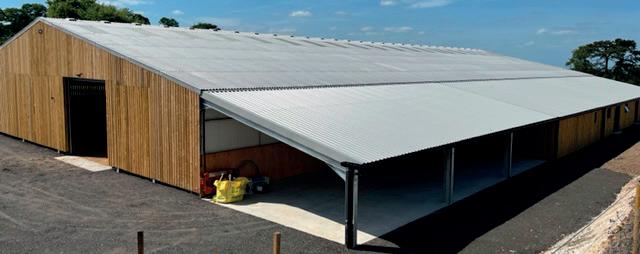


Based in the heart of Sussex, covering the South East. Sussex builders since at least 1605.
Forma offer all aspects of steel framed construction and cladding together with groundworks and electrical fit out if required.

50
Office 01825 371500 � info@formabuild.co.uk www.formabuild.co.uk 100% British designed & built Over 35 Years experience Site visits Call to arrange a site survey formabuild.co.uk STEEL FRAMED BUILDINGS, RECLADDING, REPAIRS AND GROUNDWORK � � @formabuild.co.uk @info_forma
CONTRACT WINEMAKING SERVICES www wistonestate com winery@wistonestate co uk 4 times WineGB WINERY OF THE YEAR P r e s s i n g . L a b a n a l y s i s . V i n i f y i n g . F i l t e r i n g . B o t t l i n g . S t o r a g e R i d d l i n g D i s g o r g i n g L a b e l l i n g P a c k i n g Flexibility on service options Collaborative team with over 10 years ’ experience MAY 2023 | VINEYARD WINEMAKING
Equipment hygiene in the winery
When is it too much or too little?
Hygiene is co-responsible for the wine quality and it can either be underestimated or overestimated. We need to know our goal and posses the knowledge to be able to decide: when, how and what to clean.
Cleaning is the most time consuming operation in wineries without automation systems. We certainly want to be financially and environmentally sustainable by not over doing it. It also exposes people to potentially harmful situations and appropriate training is essential.

◆ Clean or sanitised?
◆ Production status
◆ Wine type
Clean or sanitised?
Sometimes “clean” is enough, while other times, sanitisation is required. When we talk about cleaning we refer to the removal of extraneous particles or substances from a surface or body in general. Sanitisation instead, refers to the elimination of potentially dangerous micro-organism by physical removal (e.g. sterile filtration), or chemical disinfection (killing). It is crucial to understand that in most cases a cleaning agent is not a sanitiser and vice-versa. It is actually possible to have a cleaning action and a sanitisation in a single product or operation; however, my personal preference is to use them separately based on needs while being more sustainable.
A fundamental concept to keep in mind is: if sanitisation is required cleaning comes first. In fact, a sanitiser won’t work properly on a dirty surface. Dirt particles and tartrates provide housing and protection for microorganisms against sanitisers.
As an example: sodium hydroxide (caustic soda), vs peracetic acid. The first one can be compared to a strong soap: it’s able to remove and dissolve organic matter but it doesn’t have a direct disinfectant action. Even so, as with soap, with proper rinsing it’s able to wash away microorganisms without directly killing them. On the other hand, peracetic acid is mostly a disinfectant and it doesn’t have the detergent action of caustic soda. In summary alkaline substances are mostly suitable for cleaning, while oxidising compounds including ozone and heat (steam and hot water) are sanitisers
that can empower cleaning performances especially if associated with “time” and a mechanical action like pressure.
Production status
Starting with harvest, we know that grapes are naturally fully covered with yeast and bacteria. Our best tool is to inoculate our juices as soon as possible with active yeast to take over and inhibit bacteria or other unwanted organisms. This means that sanitisation is not required at this stage, (cleaning only), as the alcoholic fermentation can start promptly. If we are aware of some biological deviations that happened in the past, then, sanitisation is always recommended.
Once the juice has become wine, (alcohol presence), and there is no sugar left with a suitable amount of molecular SO2 again sanitisation is not required unless we are dealing with a sweet product, high pH, or stuck ferments with microbiological deviations.
When the wine is stored in tank or barrel it’s important to taste it on a regular basis. Experienced winemakers can detect most deviations on their early stages and take the required actions. This is particularly important for the low intervention wines, organic and “natural wines” which are more vulnerable. I would say that sanitization is mandatory, at bottling and disgorging only, everything else depends on conditions. Nonetheless, I always advise to sanitise everything at least once a year to keep colonies under control avoiding “resistance” by not sanitising too often. It is important to be aware of the “blind spots” of the various tools and equipment.
Wine type
Different wines have different hygiene requirements that mostly depend on the following factors: Alcohol content, residual sugar, malic acid, pH and last but not least, the final product expectations. Here is a brief guideline of how I normally operate:
Working with fortified wines (alcohol 18% or more): where some oxidation is part of the characteristics of the wine, I never sanitise, use zero SO2, and use no sterile filtration.
Still or sparkling wines: bases without residual sugar that undertook ML conversion
LOOKING FOR A UK BASED WINE CONSULTANT?

with a pH < 3.6, a stable 0.8-1 ppm of molecular SO2, don’t usually need any sterile filtration/ sanitisation.
Dry wines and sparkling bases: with a pH < 3.2 even with malic acid and a stable 0.8-1 ppm of molecular SO2, don’t need either sterile filtration or a particular sanitised environment. Wines designated to secondary fermentation should not have more than 0.6 ppm of molecular SO2 based on the yeast that we intend to use and when.
Nothing is black and white in winemaking and everything is dependent on circumstances so when I say the wines “don’t need sterile filtration or sanitisation”, I mean that it's normally a safe situation, but whatever decision we are going to make, there is always a risk that must be taken into account in our management strategy and everyone needs to be aware of it. Knowing the wine you’re dealing with, is the baseline of winemaking plans.
Of the seven countries in which I have worked the UK (due to the cold climate and the low pH) is the country where sanitisation is the least required.
51
alvatore Leone emak i n g Catlusno
EXPRESS YOUR TERROIR
am already working with some award winning vineyards and I’d be happy to discuss your project.
I
phone-alt
ENVELOPE salvatore@enologie.wine MAY 2023 | VINEYARD
DESKTOP www.enologie.wine
+39 3349 769 839
Representing you
Working in partnership with Vineyard magazine for a developing UK wine industry.
WineGB is the national trade body representing the vine growers and winemakers of Great Britain from the largest producers to small hobbyists. Our members work together with the organisation to develop strategy, expertise and marketing opportunities for long-term, sustainable success.
Simon Thorpe MW steps down
WineGB would like to announce that Simon Thorpe MW is stepping down as our CEO to return to his roots as an importer and distributor. Simon joined us in 2020 and has overseen the unprecedented growth of the industry and helped transform WineGB into a strong and united voice for its members.

Simon Thorpe MW said: “I am lucky enough to have been the CEO of WineGB through such an exciting and dynamic time in UK wine and am confident I leave a team and organisation that can deliver on our threepillar strategy of Industry Leadership, Growth, and Member Support.
“WineGB now represents over 80% of the 4,000+ hectares of UK vineyards and producers with strong growth projections, so the industry and organisation are in great shape, and we should be proud of what we’ve achieved. It is a truly exciting time for viticulture and wine making in this country, the future is bright, and I will be cheering its progress from the side-lines.”
Sam Linter, Chair of WineGB, added: “I would like to thank Simon for his hard work as our CEO. As well as building the current success of the organisation, he leaves us with much to look forward to:
◆ The imminent revision of our PDO/PGI schemes which will help local and global consumers meaningfully navigate our quality wines.
◆ Increased membership giving us a stronger voice, we now represent over 80% of wine production in the UK which means we legitimately speak for the industry.
◆ Our Sustainable Wines of Great Britain scheme will help make UK wine the most environmentally friendly choice for UK wine consumers and help contribute to the UK’s net zero target.
◆ Rapidly increasing diversity within the industry, as exciting career paths are created within businesses and promoted through academic organisations.
◆ More of our sell-out events, providing both members, sponsors, and trade with opportunities to connect, talk and grow together.
◆ A growing domestic and global presence as we continue to nurture our relationship with the UK trade and export markets to connect our wines with the world.”
Simon’s last day will be 31 May, and on behalf of the members, we would like to thank Simon for his dedicated service and wish him all the best in his new role. While we are disappointed to see him go, we are extremely excited about the future of the UK wine industry and look forward to appointing a new CEO to help deliver our vision.
If you have any questions, please contact Phoebe: phoebe@winegb.co.uk
If you are interested in wine production in the UK find out more about WineGB and join us. Visit our website www.winegb.co.uk
facebook-f @winegb twitter @Wine_GB INSTAGRAM @winegb linkedin-in @winegb
MAY 2023 | VINEYARD 52
Simon Thorpe MW
DATES FOR THE DIARY
5 May 2023
Deadline to enter the WineGB Awards
Coronation campaign
To commemorate the coronation of Charles III on 6 May, we asked our members to make a ‘pledge’, detailing one thing they are doing this year to help conserve the environment.
We will collect this information and use it to create an illustrated book to present to the King. We will also feature our contributors as part of our Coronation Campaign across social media. To give you a taste of what’s to come, here are some examples from our community of members and supporters:
◆ WineGB Silver Patron Wine Wealth has launched a series of initiatives aimed at repurposing wine waste, with a specific focus on pomace. Wine Wealth pledges to improve sustainability in the English wine industry by incorporating by-products of winemaking into production processes in the food, beverage, and cosmetics industries.
◆ Albury Organic Vineyard in Surrey plans to open a new ‘wildlife walk’ around the vineyard. The project is focused on conserving nature and will feature bat and barn owl boxes, bug hotels, beehives, butterfly scrapes, an insect highway, wildflower meadows to attract pollinators, compost pits and a pond! The information signs and benches along the route will be made from trees that fell on the Albury Estate during the storm of 2022.
◆ Saffron Grange Vineyard in Essex has pledged to continue to work with its chosen charity, Creating Natures Corridors, to plant a minimum of 500 trees. As part of its wider goal to improve the wider natural eco system, Saffron Grange will also be introducing its first beehives to the vineyard.
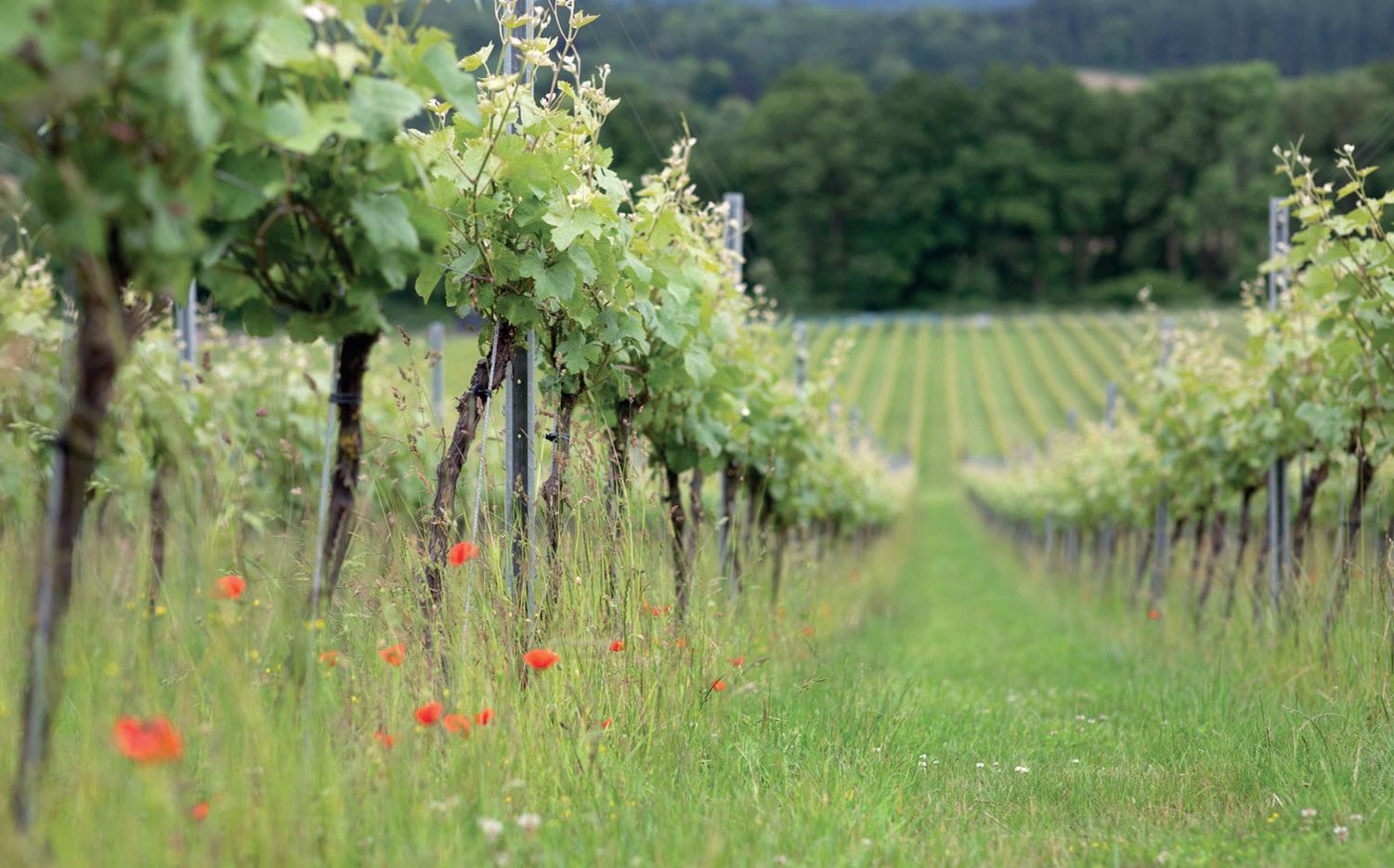
◆ Dunesforde Vineyard in North Yorkshire will be planting a further 2,000 trees on its estate to create a safehaven extending to at least 25 acres where the trees and wildlife can develop naturally. Dunesforde has already planted 4,000 trees following an inspirational visit to Highgrove eight years ago.
◆ Velfrey Vineyard in Pembrokeshire is introducing tisanes, which they will make from willow, nettles and comfrey harvested from within their site. This is sprayed onto the leaves and fruit to prevent disease and feed the vines. Velfrey will also brew their own compost tea to create a liquid rich in minerals and beneficial microbes used as a probiotic drench. Other commitments this year include the use of renewable energy sources from Velfrey’s solar panels, and planting native species of trees including willow, mountain ash, oak and alder while delaying mowing in their meadow until after flowering has taken place.
15-17 May 2023
London Wine Fair, Olympia London Come and visit our stand!
2-11 June 2023
Welsh Wine Week
5-8 June 2023
WineGB Awards Judging at Exton Park
16 June 2023
WineGB Awards Medal Announcements
19-25 June 2023
English Wine Week
7 July 2023
WineGB Awards Lunch and Trophy Presentation
22 November 2023
Vineyard & Winery Show
Albury Organic Vineyard
2023
MAY 2023 | VINEYARD JOIN WINEGB phone-alt 01858 467792 paper-plane office@winegb.co.uk globe-asia www.WineGB.co.uk 53
Machinery May-tainance
Before you crack open a bottle of English sparkling wine and raise a toast to King Charles III, there’s one major thing you should have ticked off your to-do list.
Remember to change the carbon filters on your tractor.
Carbon filters are designed to trap the harmful emission particulates produced by the engine and prevent them from being released into the air, into the engine, or into the cab.
Over time, these filters become clogged and, while not the most exciting job to do, they do need replacing at least once a year to ensure that the tractor continues to operate at optimal performance levels and that operators are working in a safe environment.
You need to be aware that there are lots of cheap alternatives out there that only last a few days. It's important to only use HEPA filters which have been designed to capture even the smallest particles, including those that can cause respiratory problems in humans. We always supply HEPA carbon filters that only need replacing once a year and carry filters in stock to fit most narrow tractor makes and models.
If you haven’t done so already, you will also want to make sure that your sprayer has been through its National Sprayer Testing Scheme test.

This is a mandatory requirement for anyone operating a sprayer and involves a thorough
inspection to ensure that the equipment is operating correctly and within legal guidelines. This includes checking that the sprayer is calibrated correctly, that the boom height is correct, and that the nozzles are operating at the correct pressure and flow rate.
We are an approved test centre and can carry out these tests at our workshop in Kent or on your farm. The NSTS tests are different to a sprayer service, which you should already have carried out by now.

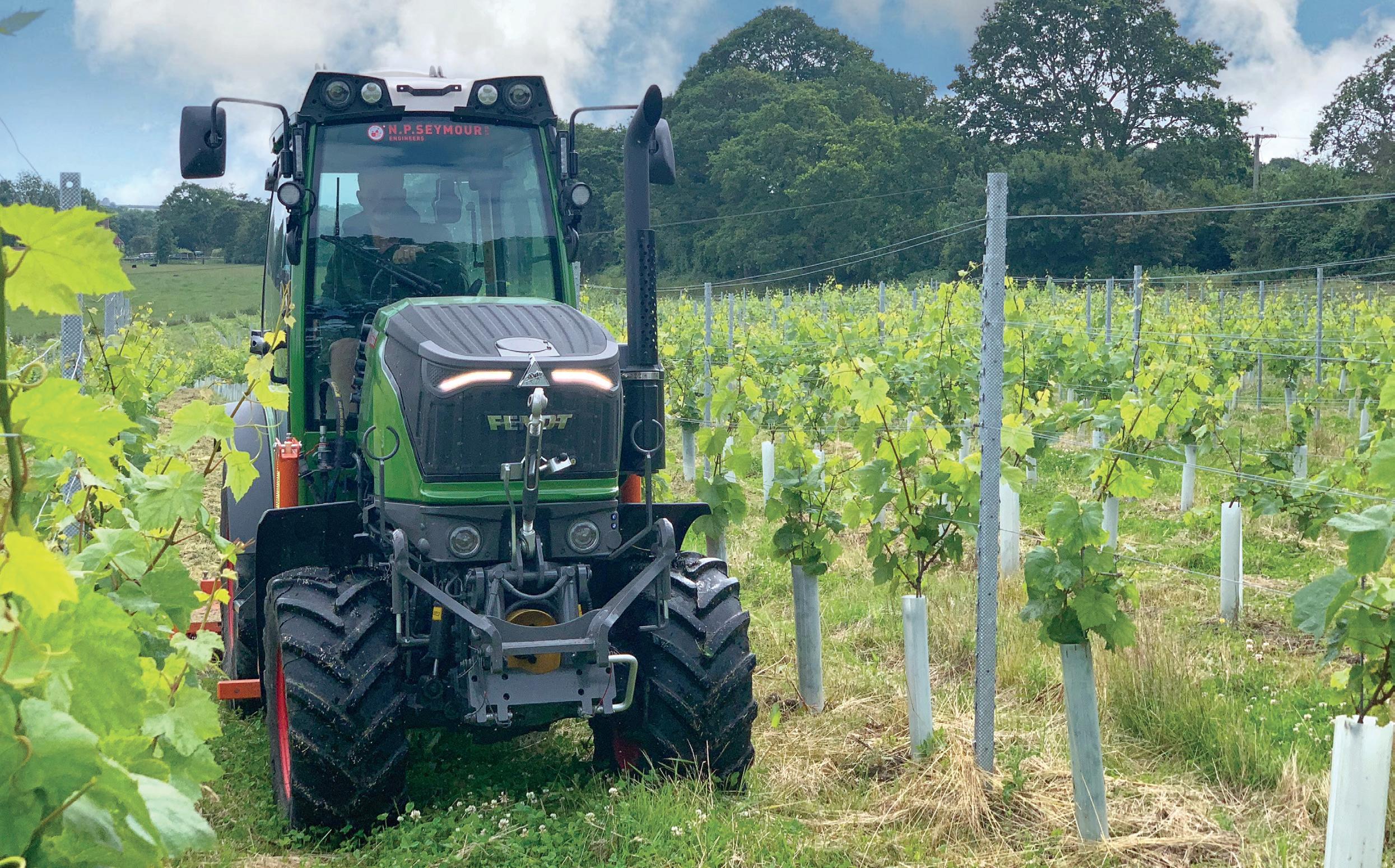
Keeping on the subject of sprayers, we also recommend that you check the condition of your nozzles at this time of year.
Nozzles are responsible for distributing the chemicals evenly across the vines, and
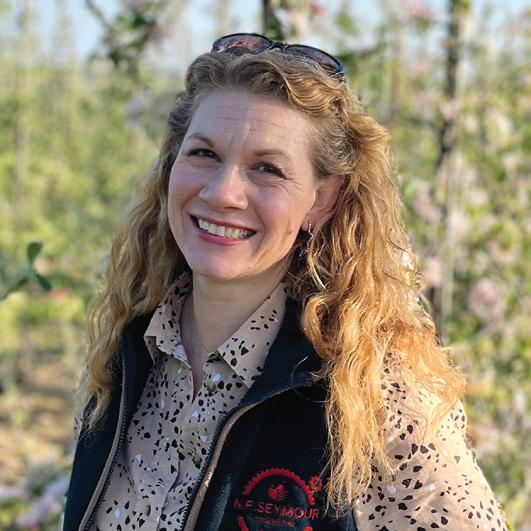
54
As vineyards prepare for the growing season, it's important to check that all machinery is properly maintained for maximum efficiency and effectiveness.
Claire Seym ur N P S e y m ruo dtL
MAY 2023 | VINEYARD MACHINERY ADVICE AND TIPS
over time they can become worn or clogged, resulting in uneven application. It's important to replace these nozzles regularly to ensure that the chemicals are being applied at the correct rate and in the correct pattern.
Albuz are by far the best sprayer nozzles on the market, giving high spray quality and excellent flow rate precision, allowing you to optimise coverage and reduce spray costs.
The ATR80 is a hollow cone nozzle for vineyards which sprays fine droplets at an angle of 80 degrees and can be used for both fungicides and insecticides. Made of ceramic, these nozzles are exceptionally resistant to wear, abrasion and chemicals, but they do still need replacing.

For any sales, parts or service requirements, please phone the office on 01580 712200 or email hello@npseymour.co.uk

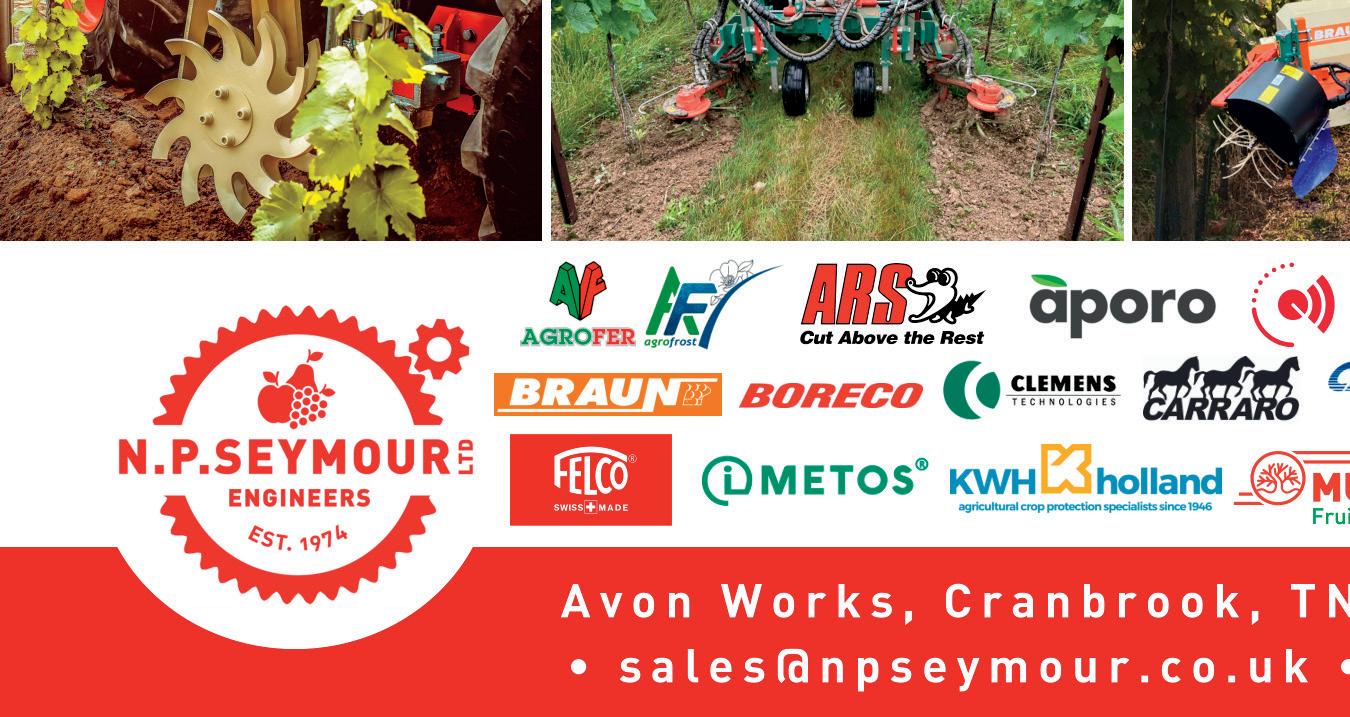
We can also advise on correct nozzle sizing by calculating spray application charts and which nozzle is correct for the spray rate you require.
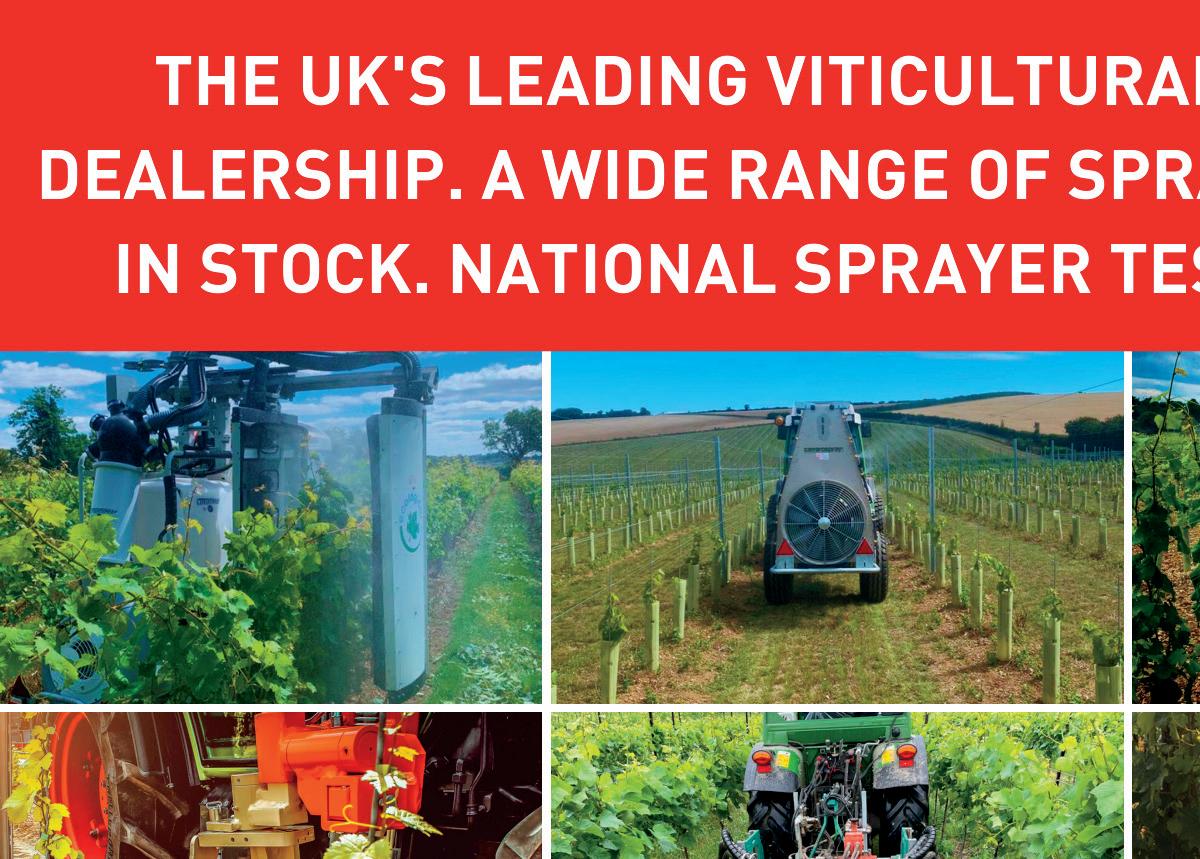
At this time of year, we also recommend that growers check mower blades and replace any which may be worn.
Finally, it's important to get your tractor serviced before the growing season begins. Ideally, this should be done during the quieter winter months, but if you haven't had a chance to do it yet, it's important to prioritise this task. Tractors that are not properly maintained can break down or experience reduced performance, which can result in lost time and money during the busy growing season.
During a tractor service, a technician will
perform a thorough inspection of the vehicle, checking for any signs of wear or damage. They will also change the oil and filters, check the brakes and steering, and inspect the tyres and suspension. This will help to ensure that the tractor is in optimal condition for the year ahead. With all the stresses that viticulture can throw at us, one of the last things you want to be having headaches over is your machinery. By running through everything now, before things get too busy, you can help mitigate any potential problems and ensure that everything is operating at optimal performance levels, resulting in better crop yields, and reduced risk of breakdowns, resulting in repairs and inconvenient downtime.

MAY 2023 | VINEYARD 55



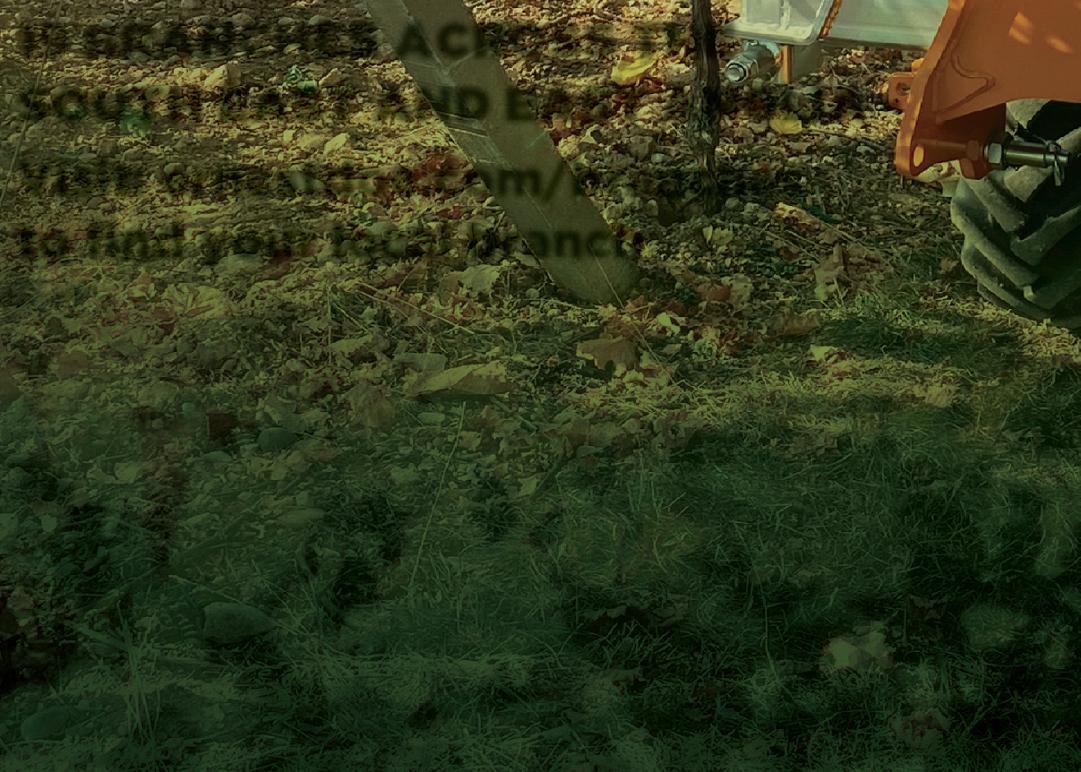
















19 BRANCHES ACROSS THE SOUTH EAST AND EAST ANGLIAVisit: ernestdoe.com/branches to nd your local branch A27 M23 A23 A22 A3 A31 M3 A259 A2 M20 M2 M25 M25 M11 A1 A928 A12 A14 A14 A1 A47 A10 A17 A47 A12 A1 Eastbourne Portsmouth Cowes Lymington Eastleigh Crawley Uckfield Tunbridge Wells Dover Maidstone Guildford Staines Croydon Rochester Dartford Slough LONDON Watford High Wycombe Stevenage Luton Royston Hertford Harlow Chelmsford Bicester Milton Keynes Bedford Ipswich Bury St Edmunds Cambridge Northampton Kettering Peterborough Boston Sleaford King’s Lynn Ely Norwich COLCHESTER FULBOURN LITTLEPORT MARLESFORD FRAMLINGHAM FAKENHAM SUDBURY FYFIELD ESHER DARTFORD RINGMER ALBOURNE NORTH WALSHAM ROCHFORD WYMONDHAM BRAINTREE ULTING M4 M40 BENINGTON M1 ASHFORD ERNEST DOE ERNEST DOE POWER THE FRUIT & VITICULTURE MACHINERY SPECIALISTS ERNEST DOE & SONS LTD AGRICULTURE AGRICULTURE Contact our Fruit & Viticulture Sales Manager: Tom Wheatley for more information: Mobile: 07387 023 467 tomwheatley@ernestdoe.com
Field-scale tractorpowered electrical weed control

RootWave, the Warwickshire based electrical weed control (eWeeding) manufacturer, has launched its first tractor-powered machine for orchards, vineyards and fruit.
In independent trials in orchards last year, the company’s patented high-frequency eWeeding system delivered full control of weeds, similar to results from trials in sugar beet and maize during the same summer (2022).
The RootWave machine treats weeds in the rows of vines, bushes, and trees using treatment electrodes on purpose-designed hydraulic arms, to work seamlessly between different row widths of crops. The treatment uses electricity to create heat within the weed and roots boiling them from the inside out.


Growers can reserve a machine now, with
those first in the queue able to secure delivery in spring 2024.
In 2018 the company successfully launched a professional hand-held eWeeder RootWave Pro, and has sold over 150 units in the UK and Europe.
CEO Andrew Diprose said: “RootWave delivers better weed control in fewer treatments at a lower cost. It will become the indispensable tool for farmers that want effective weed control without any environmental issues.
“Our technology is certified organic and helps nature restore its soils, water and biodiversity.”
Lower energy use
In the company’s own tests eWeeding provided full control of weeds at a lower total
energy use than chemical herbicides.
Mr Diprose said: “RootWave delivers the most effective, economical, environmentally friendly and safe weed control on the market.
“It works so well because the plant and roots are killed by heat generated within the weed itself. And because it works so well, the number of applications you need in a season is comparable to that of herbicides and less than required for mechanical weeding. We are the only eWeeding provider using high-frequency electricity, which has significant advantages over standard 50Hz or DC wave forms.”
The machine is powered by the PTO on a standard tractor. Growers will be able to see commercial prototypes working at demonstration days this summer, and can reserve a machine now for 2024 delivery direct with the company.
57
MAY 2023 | VINEYARD MACHINERY
Excellent at clearing unwanted buds & weeds leaving undervine-stems clear whilst mulching with variable width mower. Front/ Rear mount.




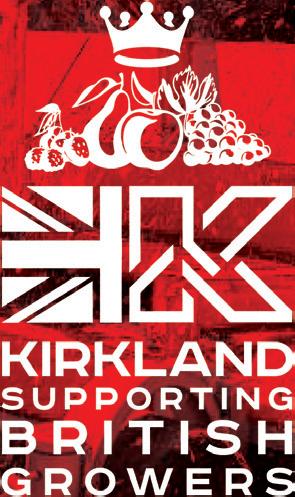




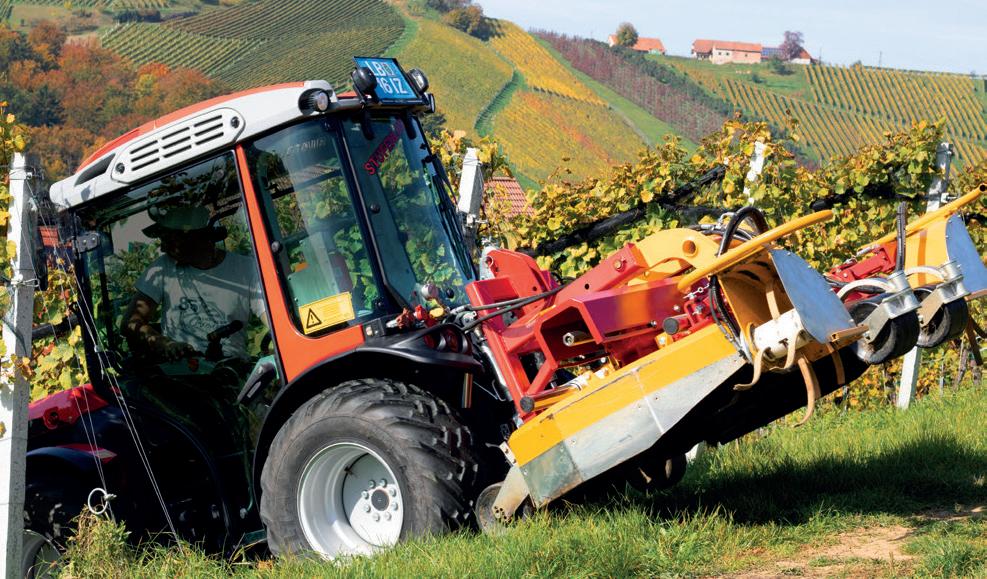


For gentle mowing of the undervine area. Patented single line spools, each filled with 15m strimmer line. Front/ Rear mount.
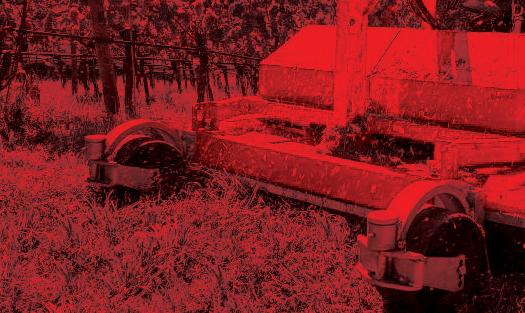

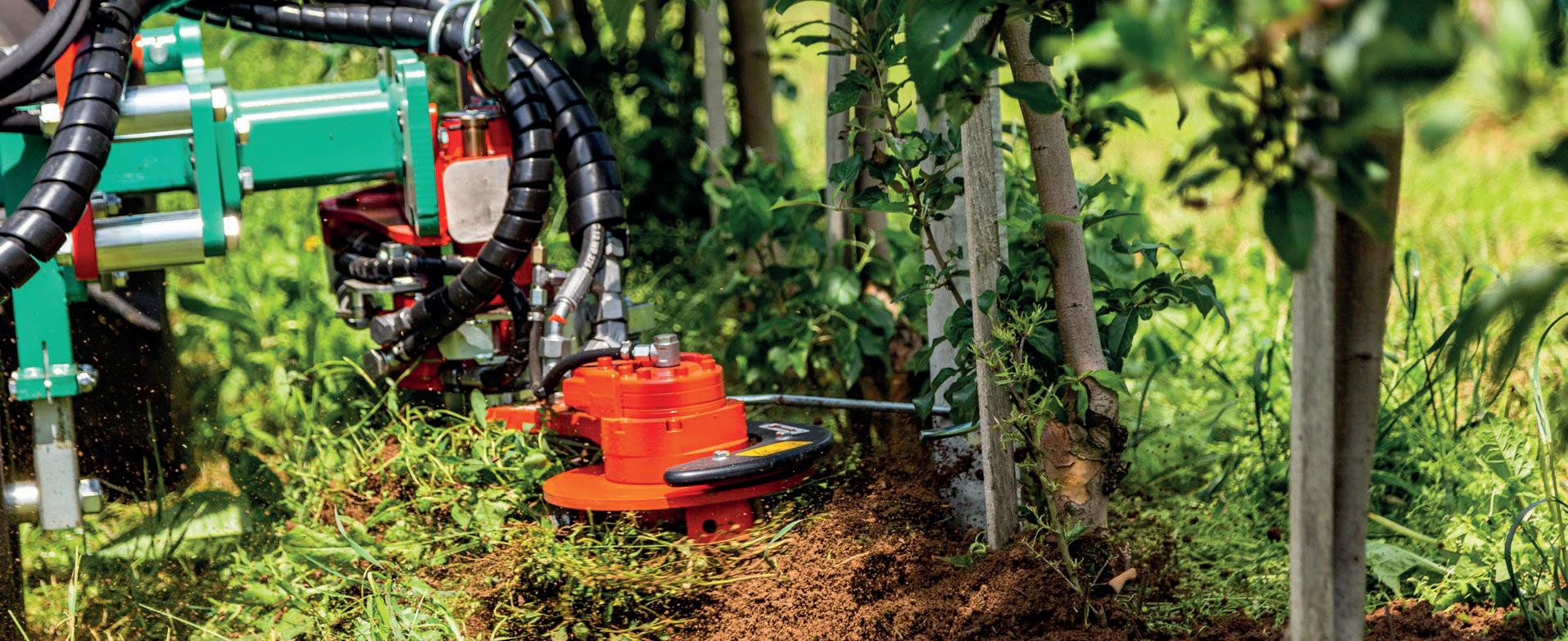
58 TN15 8LW TEL: 01732 880880 WINCHESTER SO21 3DN TEL: 01962 794100 TN22 5RB TEL: 01825 841100 NEWBURY RG20 7DJ TEL: 01635 281222 TN26 1JJ TEL: 01233 822205 HORSHAM RH12 3PW TEL: 01403 790777 @agrimachines Haynes agri HAYNES AGRICULTURAL LTD. TECHNOLOGY FOR ROW CULTURES #INTELLIGENT MECHANISATION Haynes agri @agrimachines Haynes agri COVERING SOUTH & SOUTH EAST ENGLAND Richard Smith – 07483 035922 Richard.Smith@haynesgrp.co.uk www.Haynes-Agri.co.uk
LMG MOWER & BUD RUB
LMG MOWER & STRIMMER
KIRKLANDUK.COM | 01622 843013 | INFO@KIRKLANDUK.COM | ME17 3NW in stock now! MAY 2023 | VINEYARD
Weed control without chemicals



To ensure safe weed control around the vines without resorting to chemicals, sophisticated equipment is required built to an exacting standard. There are many tools on the market but the outstanding manufacturer is the French firm Boisselet based in Burgundy who have been manufacturing tools for vineyards since the 1820's. The beating heart of their system is the Servo Motor, unique on the market and giving major advantages when guiding the weeder head safely around the base of the vine. Thanks to its unrivalled power and sensitivity it can work at speed around young and old vines alike and deal with all types of soil.
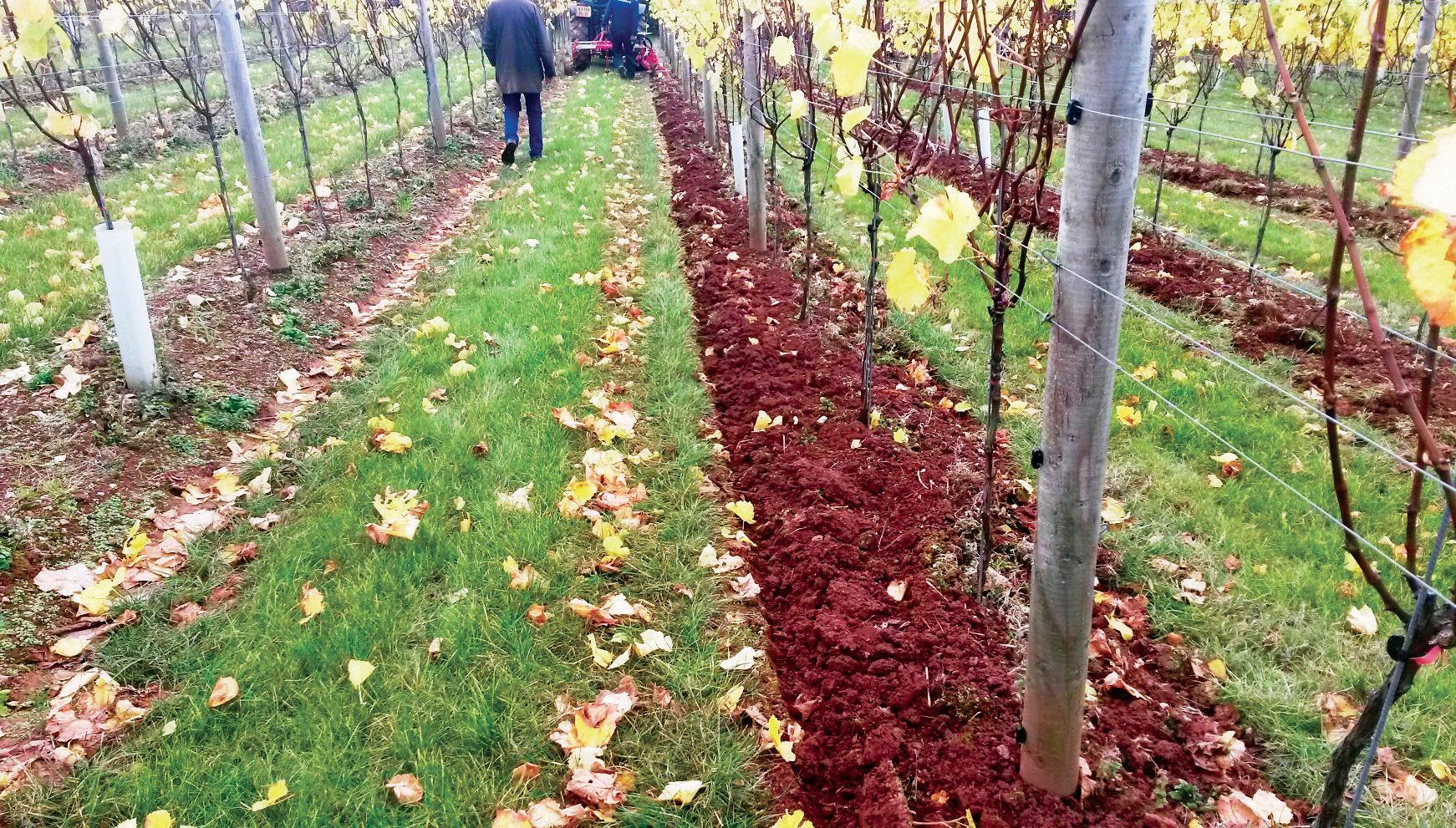

The current Servo model is the EVO 4 and like its predecessors has two mounting points, the one at the front is fixed position and normally used with a disc and the one behind is articulating allowing the working head to move in and out between the vine trunks; in this way the two most popular tools working together are disc and simple knife blade when shallow working. However if the soil conditions are difficult e.g. dry and hard or if the weed growth is rampant the tool head can be swapped out and the rotating Petalmatic plugged in.


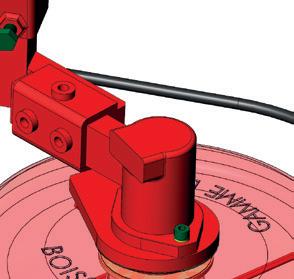
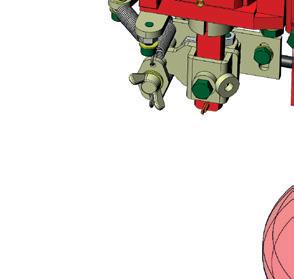

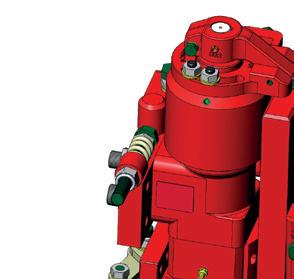
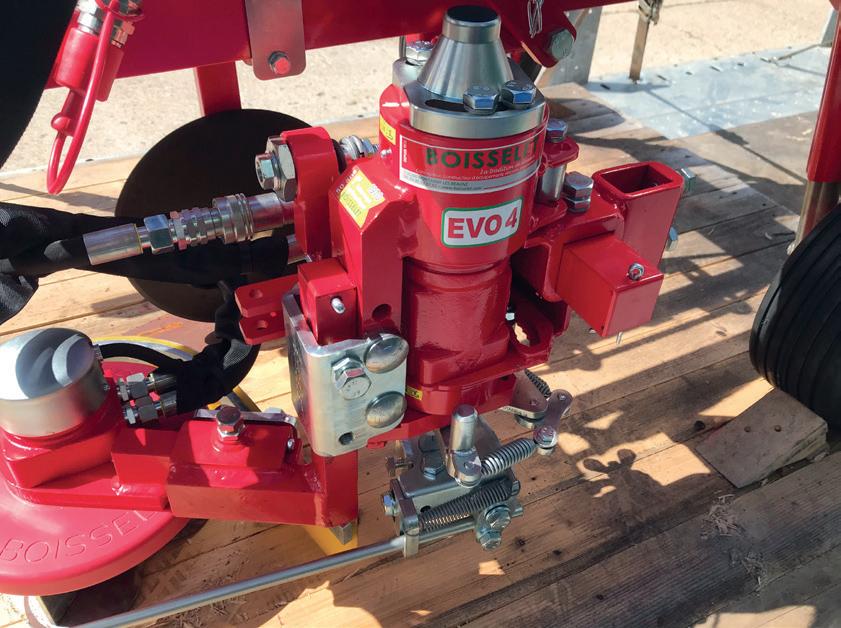


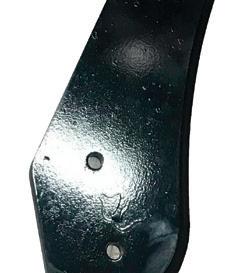
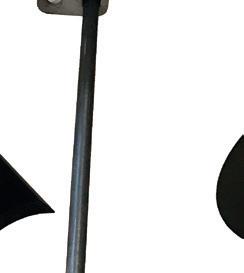


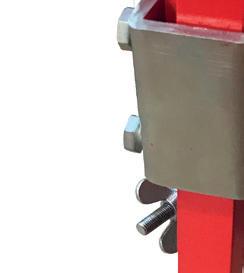


It is also possible to fit a second Servo Motor on the opposite side of the carrying tool bar frame as well as a wealth of other tools making the system extremely versatile. For those who do not want to disturb the soil the Filmatic Strimmer can be plugged in. This tool is the only one which can strim or mow right up to the vine stem without leaving an uncut patch. With over 45 Boisselet units sold and at work in the UK, Vitifruit Equipment also offer a hire service for smaller vineyards. Examples of these tools at work can be seen on the Vitifruit Equipment Facebook page.
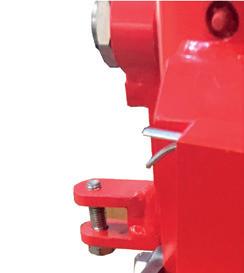
59 David Sayell&Richard W i VITIFRUIT EQUIPMENT
DESKTOP www.vitifruitequipment.co.uk phone-alt 01732 866567 ENVELOPE vitifruitequipment@sky.com
MAY 2023 | VINEYARD
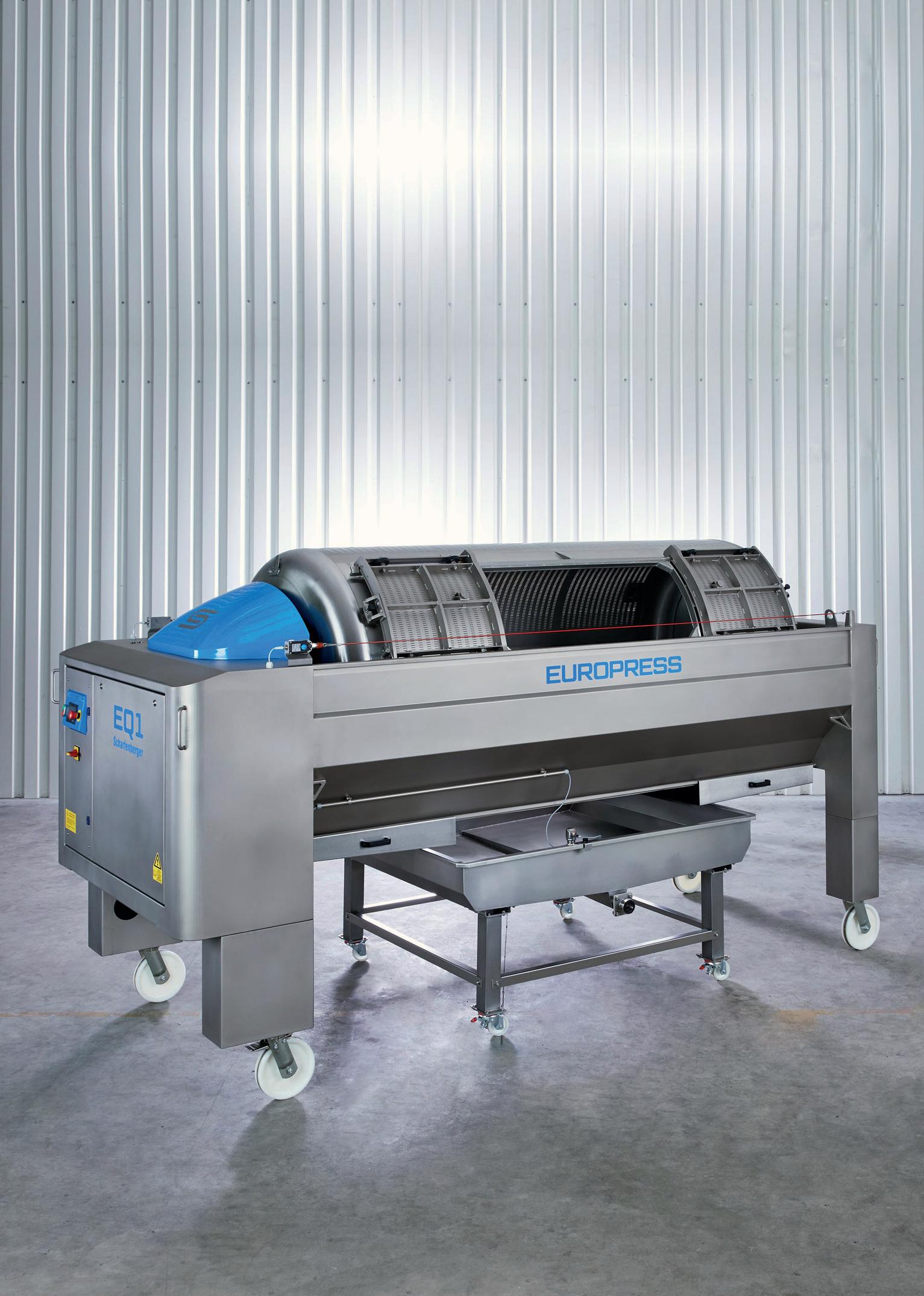











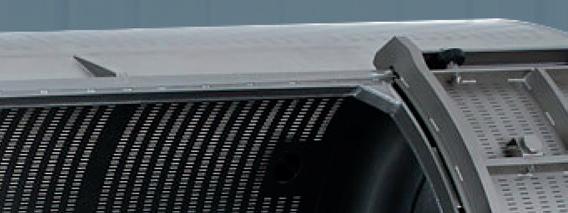
Itasca Technical Services / Contact: John Simmons Tel: 01252 279834 / Email: john.s@itascawines.com www.itascawines.com TECHNICAL SERVICES HARVEST WILL BE HERE BEFORE YOU KNOW IT BOOK YOUR MACHINERY SERVICES NOW SO AS NOT TO MISS OUT! NEED A NEW PRESS OR PROCESSING EQUIPMENT? CALL ITASCA TODAY























































































































































 The team from Brenley A were runners up
Huw Rhys-Davies
Braving the weather are Stephen Skelton MW and Julian Searle
The team from Brenley A were runners up
Huw Rhys-Davies
Braving the weather are Stephen Skelton MW and Julian Searle



 Supporting Naomi Solomon was Ernie
Marco Simonit headed up the judging panel
Supporting Naomi Solomon was Ernie
Marco Simonit headed up the judging panel































































































































































































































































































































